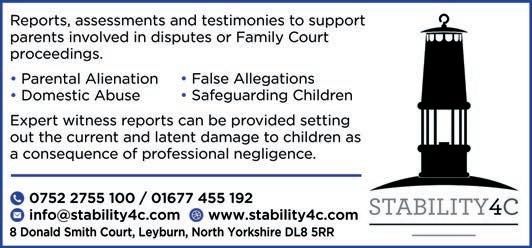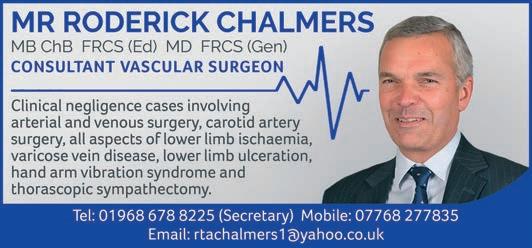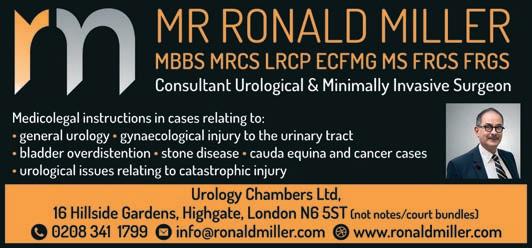










37 Medical Notes






















[IT BECAME the subject of comedic asides and bar room banter: the amount of money we had inherited from some unknown relative abroad, or how we could help some other unknown person realise their rightful inheritance –with, of course, a handsome fee for ourselves. Sadly, the phone call or text or email out of the blue was sometimes all-too convincing for people who were unwary of the fraudsters.
Now, one team of such fraudsters has been convicted, thanks to a complex investigation involving the National Crime Agency and partners across two continents.
• Fraud in all its forms is everywhere. A not-for-profit organisation that keeps tabs on fraud reported over 185,000 cases in just the six months to June this year, with a 180% increase in the number of firms being targeted.
Employee fraud has become easier since the pandemic, with the ubiquity of remote or hybrid working: whether that is defrauding an employer or using a position to defraud others. A new offence of ‘failure to prevent fraud’ will make companies liable for their employees’ conduct if they have not carried out sufficient checks.
• Legal firms themselves are increasingly becoming the target of cybercrime. The National Cyber Security Centre has issued an update to law firms warning of threats varying from ransomware attacks to the harvesting of intellectual property by ‘state actors’. Again, the increase in hybrid working has been identified as a vulnerable area.
• Detecting and quantifying fraud is just one of the special areas of activity of the forensic accountant and the accountancy expert witness. The accountant’s expertise is drawn upon to assess share values of a business when there is a marriage break-up and to ensure those who acquire a business get what they pay for. Possibly less attention is paid to the role of the accountant in protecting the innocent from unfair conviction and, even less publicly recognised, ensuring the guilty are not punished unfairly – or their families punished for their crimes.
• All legal cases are in one way or another complex. Where the issue is one of scientific opinion that is doubly the case. It is therefore inevitable that an expert may be led to reassess their viewpoint – perhaps even during the course of a trial.
That such events happen is not denied by the legal system; but where an expert changes their evidence there are clear procedures to follow to ensure the court and all actors within it are made aware of that fact. Renowned legal training company Bond Solon explain what those procedures are – and the consequences of not following them.

• A major movement within the legal sector has been to keep cases away from the courts altogether – a movement supported by all, including expert witnesses. We have heard of the benefits on numerous occasions from regular contributor Chris Makin, a pioneer in the field of mediation and expert determination. There was, therefore, a broad welcome for the move to require small claims to go to mediation rather than straight to court, although one expert in the home improvement sector has raised a number of areas of concern that may need attention.
• Another area where mediation is becoming the norm is that of family law. Again, it is a trend that is welcomed by all parties. As the President of the Family Division stated, the only cases that should be brought to court are those that need to be there.
• The role of the expert, then, is as crucial as ever for justice to be served – in or out of court. So, for anyone considering the role and who has expertise to offer, we are indebted to Fiona Hotston Moore for her concise A-Z of building a practice. q
Ian Wild Ian Wild, Director of Business Development Your Expert Witness

LEADING EXPERT WITNESS TRAINERS Bond Solon have commented on Mr Justice Cotter’s judgment in Scarcliffe v Bramton Valley Group Ltd, saying the case “...highlights an essential duty that all experts should be aware of – that is, the duty to re-examine their opinion when new evidence is introduced to a case, and to notify (through legal representatives) the parties and the court of any change in opinion”.
In its reflection on the judgement, Bond Solon said: “This was a personal injury claim for damages arising out of an accident, which occurred on 22 September 2017 during the claimant’s employment as a tree surgeon. Ten experts were called to give evidence – two of the experts were consultants in pain medicine and two were consultant orthopaedic spine surgeons.
“After the claimant’s pain expert prepared his report and the joint report, the claimant’s orthopaedic expert’s opinion changed significantly – radically revising his view about acceleration of degenerative change. Further, the orthopaedic experts recognised a week before trial that their combined view on several key issues was wrong.
“Before the pain medicine experts were due to give evidence, Mr Justice Cotter asked counsel (by email) to remind the experts about their duty to notify the parties and the Court of any change in opinion (para 291, Muyepa v Home Office [2022] 2648). He sent this preemptively, knowing that the claimant’s pain expert had repeatedly relied on the claimant’s orthopaedic expert’s original opinion, which had since been revised.
EVERY CROWN and magistrates’ court in England and Wales now has access to the Common Platform system, which will allow quicker and seamless sharing of information between all those involved in criminal justice cases. Under the Common Platform, all relevant case materials will be available in one accessible place across all criminal courts – from arrest through to trial and, for those convicted, on to the prison and probation service.
That will help ensure that courts, police, prosecutors and legal professionals have access to one platform to track cases moving through the justice system, continuing the move away from timeconsuming paper-based processes and separate IT systems.
The move is part of the government’s plan to modernise the criminal court system – bringing justice partners together in a way that has never been done before, improving collaboration and replacing outdated process.
Justice Minister Mike Freer said: “Common Platform is improving how we work to deliver justice. It will allow instant and seamless information sharing that will reduce errors and ensure vital details about cases can be seen quickly by all those involved in a case. Connecting every criminal court with partner agencies and professionals is helping make them fit for the future.”
Each user will only be able to see the information that is relevant to them. The platform also allows for changes and updates to a case to be made instantly, helping to make the justice process faster and more efficient. The rollout of Common Platform has been delivered as a central part of the HM Courts and Tribunals Service Reform Programme to improve courts and tribunals for people who use them and for those working in them.
New features will continue to be added to further improve information sharing and data accuracy across the justice system. q
“Mr Justice Cotter received no response in writing. Both pain experts then went on to give oral evidence without adequately addressing the obviously relevant and important changes in evidence which had occurred since they compiled their reports.”
In his judgment, Mr Justice Cotter set out the sixth of the Ikarian Reefer principles and CPR 35 PD 2.5. That covers the position where an expert has changed his or her evidence arising out of matters that have occurred after they prepared their written report or the joint report. That includes a change of opinion during a trial.
The relevant provisions are:
• If an expert’s view has changed, he/she should communicate this
• (through the legal representatives who have instructed him/her) to
• the other side without delay and when appropriate to the court.
• An expert should not step into a witness box having changed his
• her view without having made it plain beforehand. If the change of
• opinion is properly communicated, it may alter the need for or extent
• of evidence to be given.
The judgment reiterated how important it is for the court to ‘have the benefit of a carefully considered opinion of an expert, which has been shared and considered by all relevant individuals in advance of the expert giving oral evidence’.
Mr Justice Cotter stated: “…put simply, this late evidence devoid of any adequate analysis should not have been placed before the court in this fashion and it represented an elephant trap for an unwary judge.” q
THE GOVERNMENT’S ANNOUNCEMENT on 11 August that it will continue not to cap judicial ‘sitting days’, together with a commitment to invest in modernisation and repair work on court buildings, has been cautiously welcomed by the Law Society.
“The measures announced by the Lord Chancellor are a small step in the right direction to tackle the backlogs,” said its president Lubna Shuja. “We have long highlighted the need to invest in our crumbling courtrooms and maximise the number of days judges can sit.
“However, much more needs to be done. The latest figures show that the backlogs of outstanding cases in the magistrates’ court and Crown Court continue to get worse. Victims and defendants are facing unacceptable delays with years spent in limbo as they wait for justice.
“The courts have been operating at well below maximum. Far too many courtrooms are sitting empty every single day.
“As well as making sure that courts are fit for purpose and available for judges to sit in, there needs to be urgent investment to tackle the chronic lack of personnel. Ensuring there are enough judges, court staff and lawyers to do the work must be a priority.
“We also need to urgently see criminal defence solicitors being given the recommended 15% legal aid rates increase that would help stop the exodus from the profession, which forms the backbone of the criminal justice system.” q
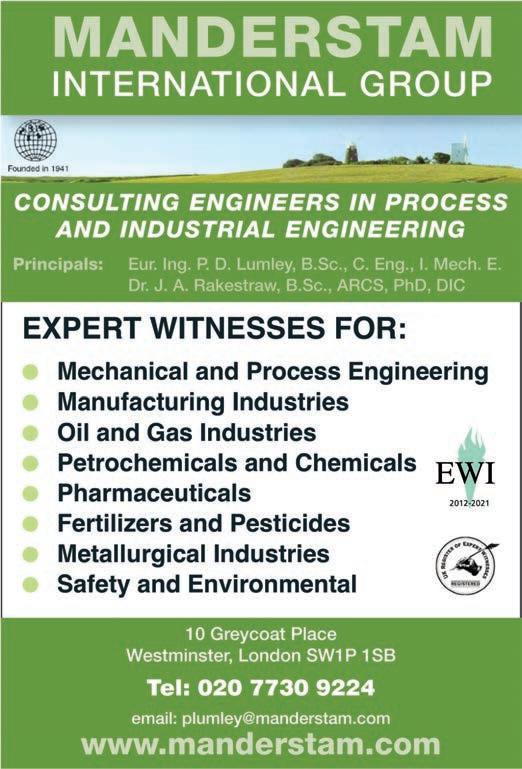



Following
[WITH 15 MILLION HOUSEHOLDS having experienced home improvement disputes, and many ending up in court, it is great to see mediation getting the spotlight that it deserves. However, the Ministry of Justice’s intention to introduce compulsory mediation for small claims must be welcomed with caution.
With specified money claims accounting for around 80% of small claims, the MoJ predicts that around 92,000 cases would be referred annually to a mediator provided by HM Courts and Tribunals Service (HMCTS) before their case can progress to a hearing. Freeing up court capacity is of course a positive step, but there are some critical operational details that must be addressed to determine whether the scheme will be successful.
First, HMCTS will need to recruit more mediators and update its technology to tackle the workload increase. However, gathering the number of mediators required to produce
positive change will take a long time, which consequently runs the risk of shifting the already long court waiting times to the mediation programme instead.
Additionally, effective small claims resolution and mediation requires significant industry knowledge that civil servants are unlikely to have. Will HMCTS outsource mediation? Will there be a public contract? How many providers could be used? These are all questions that need to be answered.
To point claimants towards a potentially unconstructive mediation queue is likely to increase their frustration further, so HMCTS must advise on how they are going to navigate those challenges.
One solution is to utilise approved dispute resolution providers who know how to handle the technical nuances and complexities associated with home improvement and renewable energy cases. It’s also worth

considering whether parties that have previously engaged in mediation before submitting their claim can minimise resource constraints by bypassing the session.
Another key question surrounds the cost implications of this service. It is suggested that HMCTS mediation will be free, but who is really going to be footing the bill? Unquestionably, mediation is an incredibly positive way to resolve disputes as it negates the need for long court waiting times, and provides a backdrop for resolution to be achieved in a more informal setting.
If the scheme is delivered effectively with the guidance of dispute resolution experts, it has the potential to drastically improve case backlogs, waiting times and claimants’ satisfaction. But there are still many question marks over how this dispute resolution method is going to be utilised to improve the UK small claims system. q
[ THE National Cyber Security Centre (NCSC) – which is part of GCHQ – has published its latest Cyber Threat to the Legal Sector report to highlight the potential threats to legal firms, from ransomware attacks by criminals to intellectual property theft by state actors. The report, which updates a previous iteration from 2018, looks to help UK law practices of all sizes and types of law be more resilient to the main methods of attack.

It warns how the widespread adoption of hybrid working, accelerated during the COVID-19 pandemic, has increased the risks online and how sensitive information and the sums of money firms often handle can make them particularly attractive targets to attackers.
The report also contains case studies which emphasise the severe impacts that incidents can have: for example, conveyancing firm Simplify Group was left unable to process house moves for weeks after an attack, which is reported to have cost the company £6.8m. Another firm, Tuckers Solicitors LLP, had data relating to 60 court cases stolen and leaked on the dark web after it fell victim to a ransomware attack.
NCSC CEO Lindy Cameron said: “The UK legal sector carries out essential work to uphold our society; however, we know the sensitive data legal firms handle can make them attractive targets to online attackers.
“With the cyber landscape constantly evolving, the NCSC has produced an up-to-date picture of the latest threats facing the sector, alongside advice and guidance designed to ensure the sector can stay secure.
“I urge all legal practices to follow the guidance in this report and take full advantage of the NCSC’s tools that it recommends to help increase their cyber resilience.”
The Bar Council CEO Malcom Cree commented: "This new report is both welcome and important. It provides extensive advice, information and assistance to equip the legal sector with a better understanding of the challenges we all face. The report enables us all to reflect on the many challenges and focus on building better cyber security resilience in the legal sector.” q
the announcement that thousands of claimants will need to take part in mediation before their small claim can go to court, Ciarán Harkin, managing director of Dispute Assist, outlines the impact the change will have on disputes in the home improvement sector.
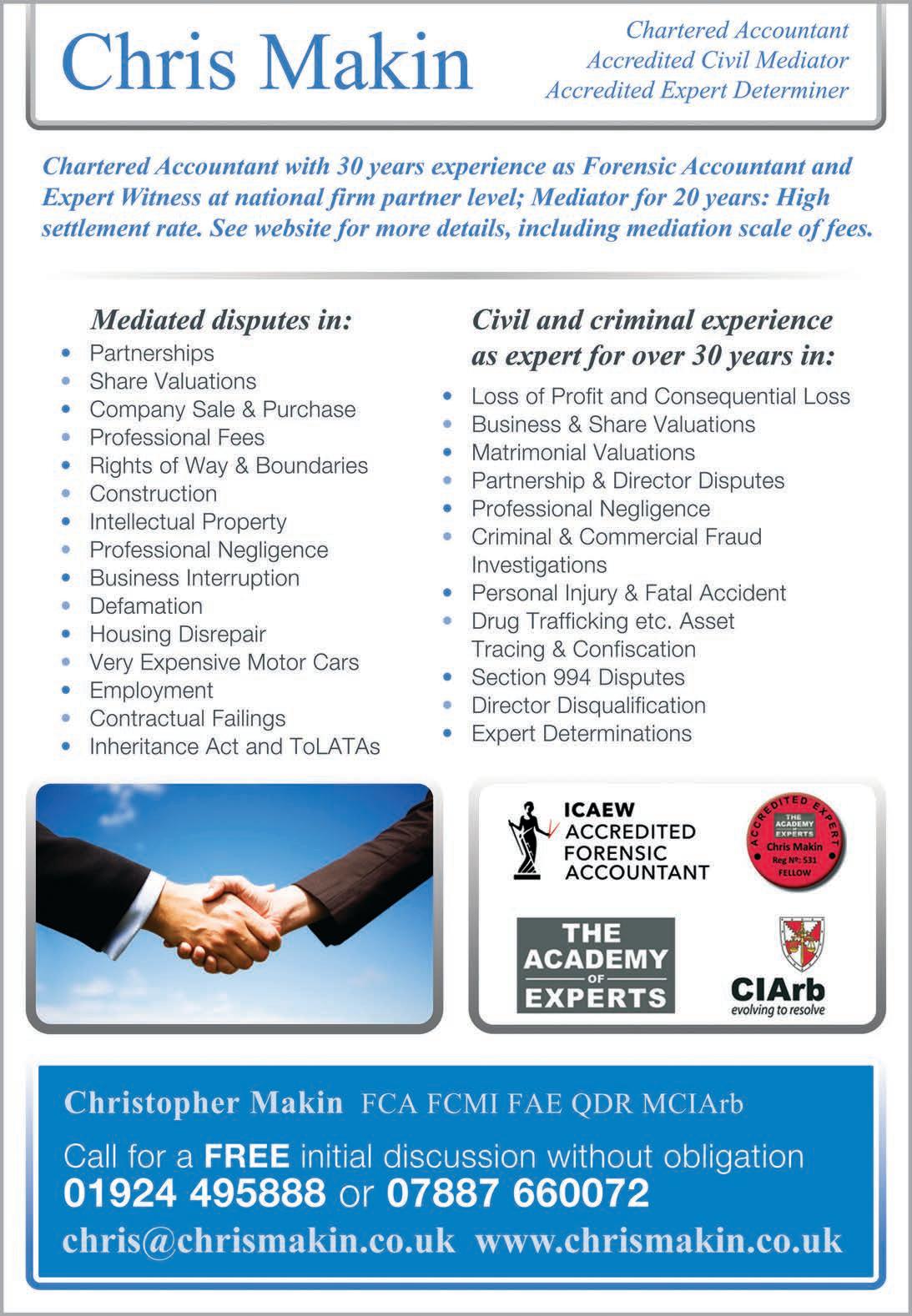
[IF YOU HAVE READ my previous articles in this publication, much of what follows will be familiar. But please read on, because I have tried to set out briefly, and after many years of bitter experience as an expert, some helpful comments and guidance for experts and those – you – who instruct them.
An expert must at all times be very aware of CPR 35.3(2) that states the expert has a duty to the court, overriding any duty to those instructing them or who are paying them. Other rules are available for criminal and family lawyers.
Be aware of Vernon v Bosley (No 1) [1996] where Thorpe LJ talked of plaintiff (now claimant) and defendant walking down either side of the road, but the expert must be ‘…ever mindful of the need to walk straight down the middle of the road and to resist the temptation to join the party from whom his instructions come on the pavement’.
A more recent lesson comes from Mostyn J (with whom I worked when he was at the bar – it was fun) in Gallagher v Gallagher (No 2) (Financial Remedies) 2022 EWFC 53 where the judge took the view that the expert Singleton lacked the impartiality required of an expert witness. He acted in a ‘strategic defensive manner’ that had ‘all the hallmarks of the mentality of an advocate.’ His behaviour was ‘highly suggestive of de facto membership of the husband’s team’.
Such behaviour cannot have helped the team which Singleton thought he was playing for. Experts can be polite and helpful, but don’t expect them to be bestie friends.
I can comment on this as both expert and mediator.
If an expert does attend a mediation, they must walk a very fine line. The atmosphere in a mediation is very different from the courtroom. At mediation, everyone is friendly (usually) on first name terms (usually) and willing to reach compromises (occasionally). What part should an expert play in this? In my view, no part at all. If there were complex matters within the experts’ expertise, they should have hammered those out beforehand and produced a joint statement, however informal.

Where I see a pair of experts at my mediations, I ask them to hold a joint meeting in a side room – they should have done this beforehand – and keep them out of the way. Mediation is ‘big picture’ and broad brush; detailed figurework just wastes time and should have been done beforehand.
And if the expert does participate in the discussions, it is difficult for him/ her to appear impartial, to demonstrate from the witness box that overriding duty to the court, if the mediation should fail and formal litigation ensue.
Anything said and heard at mediation is confidential, of course, but it is particularly unhelpful if an expert were to say one thing at mediation and something quite different at trial. It is safer to keep your experts away; perhaps available for telephone help, but not participating in the discussions.
As with most stages of litigation where experts are involved, there is no substitute for engaging an expert who, as well as being outstanding in their profession, has taken the trouble to learn how to be a member of the second profession – that of expert. The Academy of Experts and the Expert Witness Institute teach this second profession very well.
This is particularly important with meetings of experts. Instructing solicitors and even judges can have a hand in preparing the agenda for such a meeting, but in my experience after many hundreds of these meetings, they never do. And why should they? The opposing experts have produced their reports, the differences are obvious, and there’s your agenda.
And never, ever, interfere in the drafting of the joint statement. This must be the work of the experts; it becomes part of their evidence in chief. There is a strident example of how this can go wrong in Patricia Andrews & Ors v Kronospan Ltd [2022] EWHC 479 which I discuss at length in my blog at chrismakin.co.uk/expert-meeting-leave-well-alone/. It’s a good read, but in essence one expert worked closely with the instructing solicitor for two years beyond the date for filing of the joint statement, charged £225,000 –far more than I have ever charged – and had their evidence excluded. The client would have been left without an expert, except that the trial date had not been fixed and the judge found that a new expert could start again, and the waste of time could be reflected in costs. What a waste!
Finally to privilege. Be very careful what you disclose regarding instruction of experts.
In Pickett v Balkind [2022] EWHC 2226 (TTC) a letter from an expert was presented to the court by the claimant’s lawyers to support an adjournment of the trial because of the expert’s ill health. Unhelpfully, the first four paragraphs of that letter raised questions regarding that expert’s independence. The claimant’s lawyers asked for those four paragraphs to be regarded as privileged. The judge refused the application, and ordered that the expert should be cross-examined at trial. That would not have been comfortable for him, and would probably have not helped the claimant.
Litigation is complicated enough for lawyers, but when choosing your experts, recognise that their job is complicated too, so don’t choose an enthusiastic amateur. And better yet – as the Americans would say –choose the expert yourself with care. Don’t leave it to the office junior – it happens! q
[CHRIS MAKIN was one of the first 30 or so chartered accountants to become an Accredited Forensic Accountant and Expert Witness –see www.icaew.com/about-icaew/find-a-chartered-accountant/find-anaccredited-forensic-expert
He is also an accredited civil and commercial mediator and an accredited expert determiner. Over the last 30 years he has given expert evidence at least 100 times and worked on a vast range of cases. For CV, war stories and much more go to the website at www.chrismakin.co.uk – now with videos! q
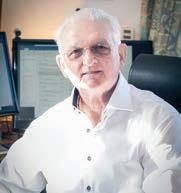


[ THE SERIOUS FRAUD OFFICE (SFO) has successfully recovered a property worth £200,000 and over £8,000 in rental profits from Dr Guang Jiang, an agent who helped British technology company Sarclad Ltd to pay bribes to secure business in China. The order was made in the High Court on 14 July.
The SFO’s 2013 investigation into Sarclad exposed how the company paid bribes to secure £17m worth of contracts to provide technology services to steel production companies between 2004 and 2012. The majority of these corrupt contracts were facilitated by Dr Jiang, who acted as Sarclad’s agent in China. The company paid £6.5m in penalties for its actions.
SFO investigators have been pursuing Dr Jiang’s criminal assets since he fled to China in 2014, breaching the bail conditions imposed as part of the SFO’s criminal investigation. The SFO has already recovered over £350,000 from his personal and company bank accounts.

The investigation then led to the discovery of the Sheffield flat which had been transferred into the name of one of Dr Jiang’s daughters in an attempt to conceal it, and details of the bank account which contained the rental income for the property.
[UK RESIDENTS who were named in the leaked Pandora Papers are being given the chance to correct their tax affairs.
HM Revenue and Customs (HMRC) is writing to UK residents named in the files of 14 offshore financial service providers. Those providers specialise in companies, trusts and foundations in low, or no tax jurisdictions.
The letters, which started going out in August, warn recipients to report all their overseas income or gains that they owe UK tax on, or face penalties of up to 200% of any tax due or prosecution.
Kirsty Telford, Deputy Director for Offshore at HMRC’s Risk and Intelligence Service, said: “Tax evasion is increasingly global; but, unfortunately for tax criminals, so is HMRC’s reach, accessing data and intelligence through international collaboration.
“Our message to users of these financial services is think hard and take this opportunity to be honest and pay the tax you owe, because the reputational and financial damage if you don’t can be significant and long-lasting. We are giving people a narrow window of time to do the right thing and correct their tax records before we take action.”
During 2021 and 2022, the International Consortium of Investigative Journalists released more than 11 million records from 14 offshore service providers, known as the Pandora Papers.
As soon as the papers were released HMRC began reviewing the data, which is the largest ever release of financial documents – surpassing the 2016 release of the Panama Papers – to find UK residents with untaxed offshore assets.
Recipients of the letters can make disclosures under the disclosure facilities made available by HMRC. It is important that individuals use the correct disclosure facility. If individuals aren’t clear about which facility to use, HMRC would recommend getting professional tax advice. q
Lisa Osofsky, Director of the Serious Fraud Office, said: “Criminals will try any means possible to conceal their tainted finances, including hiding dirty money with their closest family members.
“No matter the obstacle, we are committed to obtaining the proceeds of crime for victims and our country. We have recovered over £95m for the British taxpayer in the last year alone.” q



 by David Cook and Chris Gahagan of DRC Forensics
by David Cook and Chris Gahagan of DRC Forensics
[FOR A BUSINESS VALUATION, the first area to examine normally is at least the last three years’ accounts. The basis, reason for and date of the valuation need to be considered.
Other information obtained includes the Articles, Confirmation Statement, shareholders’ agreement, management accounts and forecasts, where available. Valuations of assets or any previous valuation need to be considered. Pre-emption rights are often important in private companies.
The main bases of valuation to be considered would be dividend, assets and earnings basis. Enterprise value is also used, which uses EBITDA (earnings before interest, tax, depreciation and amortisation). Discounted cash flow can also be used where appropriate.
Maintainable profits need to be arrived at after adjustments for items such as rent, intercompany charges and directors’ remuneration. In private companies the level of such items charged in the accounts may not be on a commercial basis. It is usual to look at the profits for the last three (or even five) years and to apply a weighting of, say 3:2:1
Up-to-date management accounts, budgets and forecasts also need to be considered where available. The relevant price earnings (P/E) multiple will then be applied to the adjusted maintainable profit figure. That would then be discounted for lack of marketability and other factors and compared with the actual multiples paid.
To value a specific shareholding, consideration is given to size of the holding, control and rights. The appropriate discount then needs to be applied to the company valuation to arrive at the valuation of the shareholding.
The Proceeds of Crime Act (POCA) comes into operation following conviction if the defendant has a criminal lifestyle and has benefited from criminal conduct. That is dealt with by the prosecution issuing a Statement of Information, with details and figures for the Benefit and Available Amount. Subject to the defence’s response, the court will be asked to confirm the amounts and therefore the amount payable by the defendant, usually within six months. A period of imprisonment, in line with the amount payable, will be imposed by the court, which will apply in the case of default of payment.
The amount payable cannot exceed the amount of the Benefit, but can be less and the excess can be recovered in future. It follows in most situations that, while the Available Amount is important to the defendant, the total Benefit figure is very important, especially if the prosecution are alleging hidden assets as part of the Available Amount.
In practice, the prosecution do tend to go for the largest Benefit and Available Amount figures that they can in any way justify, and often include
tainted gifts and hidden assets. The latter can be difficult to deal with, as it is hard to prove a negative. That is largely done by as far as possible explaining all transactions and eliminating or reducing the Benefit.
Expert determination is a form of dispute resolution which is an alternative to litigation. It is quite common for agreements to have a clause stating that, where there is a financial dispute, it shall be determined by an independent accountant to be agreed upon by the parties. The parties agree the process with the expert, subject to any specific requirements of any contract or agreement in force. Once appointment has been confirmed the expert will contact the parties, setting out their terms of business and will normally state that all communications will be to all parties.
The parties will need to agree as much as possible and set out the areas of dispute, which need to be as specific as possible to reduce the time and cost of the process. The expert will issue a procedure and timetable, which will usually allow both parties to make initial submissions, then comment on the other party’s submissions, and then respond to the expert’s points and make further submissions as the expert considers necessary. Matters will usually be conducted by email and other correspondence as required. A meeting can be arranged, although that is rare.
It is normal practice for the determination to be issued once the expert’s fees have been paid. The expert decides how the cost should be split between the parties and it is usual to have provision that, if one party does not pay, the other can pay the balance to have the determination released.
Expert determination is a quicker, more efficient and cost-effective means of resolving disputes compared to litigation. q
[THREE MEN who preyed on the elderly and vulnerable in an inheritance fraud causing losses worth millions of dollars have been sentenced to more than 21 years in prison after pleading guilty in the United States.
Jonathan Iheanyichukwu Abraham, Emmanuel Samuel and Jerry Chucks Ozor, all in their 40s and originally from Nigeria, were arrested in south London by the UK’s National Crime Agency (NCA) officers in April 2022. The NCA’s Complex Financial Crime Team worked with US partners, as well as the Crown Prosecution Service and the Home Office, to secure their extraditions earlier this year.
Further suspects with a role in the fraud were arrested by Spanish authorities in Madrid, while linked enforcement activity also took place in Portugal.
After details emerged of an international network of fraudsters working together to steal millions, National Crime Agency investigators worked closely with the US Department of Justice, US Postal Inspection Service and European partners to co-ordinate the international activity, locate and arrest suspects and secure evidence. The fraud was committed by sending unexpected letters to people to tell them that a long-lost relative had passed away and that they were in line to inherit their assets. Victims were drawn in to further communications where they would then be persuaded to pay charges and costs to release the assets.
Thousands of victims, primarily in the US, were targeted and fraud worth millions of dollars has already been identified.
Gary Cathcart, Head of Financial Investigation at the NCA, said:
“This was a transnational, high-harm fraud, where a dispersed network of ruthless criminals worked together to identify and target victims, inflicting life changing damage to vulnerable people.
“International co-operation is essential to tackle such criminals; by working with our partners we can disrupt fraud and better protect the public.”
Millions of people are targeted by similar scam messages, letters or phone calls every year. So if something seems suspicious or unexpected, such as requests for money or information, contact the organisation directly to check. Use contact details from their official website, not those given in the message, letter, email or a telephone call.
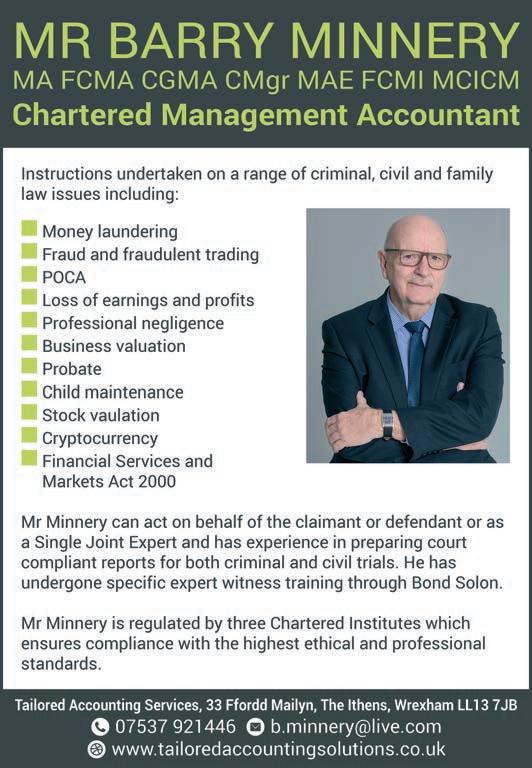

The NCA explained that it is easy to report fraud or cybercrime by contacting Action Fraud at www.actionfraud.police.uk or by phone on 0300 123 2040. In Scotland, people can report to Police Scotland by calling 101. q

Lennie Harris of HCA Consultancy, which has offices in Manchester and London, has a wealth of experience acting as an expert witness for legal firms, the courts and individuals.
As well as supporting legal advisors in court, providing expert opinions on any number of financial issues, he works closely with lawyers and their clients who also need professional advice on matters which might influence judgement.
Mr Harris (pictured) believes that he brings an extra dimension to the table when assisting legal firms. He said: “I’m often consulted when Proceeds of Crime Orders (POCAs) seem excessively high. By investigating the client’s financial situation, using my experience as a forensic accountant, I can take the pressure off the legal team to enable them to concentrate on the legal aspects of the case.
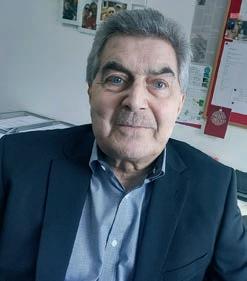
“The amounts imposed by the courts are often arbitrary and excessively high. That is where I can help by providing a true picture of the defendant’s financial worth and protecting money not gained through crime.
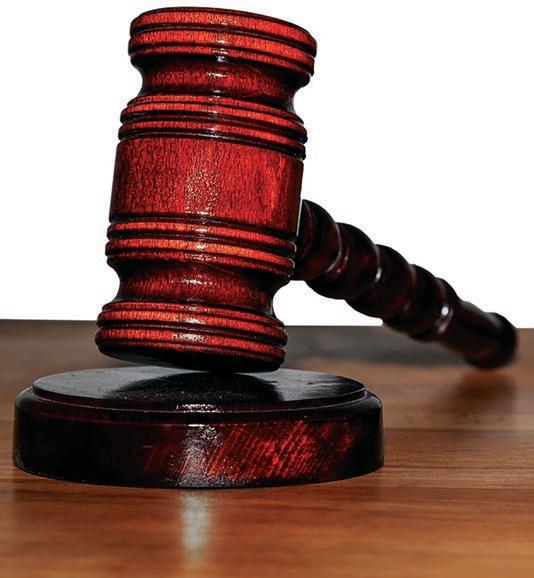
“I can then provide all the necessary data for the legal team or indeed attend court as a witness. It is important, however, that the legal team moves quickly to help reach a successful conclusion.” q
• For further information call Lennie Harris on 0845 8623260, alternatively email info@hcaconsultancy.com.

[IN ITS HALF YEAR Fraudscape report, Cifas – the not-for-profit organisation that works to reduce and prevent fraud and financial crime – has revealed the range of external and internal fraud risks faced by organisations. The substantial and growing level of threat comes against a backdrop of additional legal requirements for organisations to put ’reasonable procedures’ in place to prevent fraud.
Between January-June 2023, Cifas members recorded just over 186,500 cases of fraudulent conduct to the National Fraud Database. Particularly notable within those numbers is the scale and growth in attacks on both customers and companies. Stand-out figures included:

• Over 122,000 cases of identity fraud – which accounts for 66% of
• all cases recorded in the period – with plastic card and asset
• finance products particularly targeted.
• A 180% increase in the number of companies targeted for identity
• fraud, particularly for telecoms and loan products. There was also
• a significant rise in criminals impersonating brokers to offer fake
• loans or other business services in order to harvest company detail
• to impersonate the company.
• The highest increase in cases related to the takeover of existing
• facilities, which increased by nearly a quarter (22%). That included
• impersonation of banks to socially engineer victims to share their
• financial and personal information or make payments to a so-called
• ‘safe account’.
Attacks against organisations also came from employees, which can have a devastating impact on an organisation’s finances, staff and customers. In the first six months of the year 151 instances of
fraudulent conduct were recorded to the Cifas Internal Fraud Database, with nearly half of them (46%) relating to dishonest actions by staff.
The government’s impending ‘failure to prevent fraud’ offence will mean that large organisations could be prosecuted if an employee or agent commits fraud for the benefit of the company where the organisation has failed to put ’reasonable procedures’ in place to prevent the fraud.

Mike Haley, CEO of Cifas, said, “These figures illustrate the targeted attacks organisations increasingly face from both external and internal sources. In addition, the impending ‘failure to prevent fraud’ offence will create further legal liability for those organisations that fail to put ’reasonable procedures’ in place to combat these attacks and protect their customers and staff.
“With the large majority of staff now hybrid or working from home, employees are finding it easier to commit fraud against their employer. We have also seen a rise in criminals approaching staff on social media offering financial incentives to share business and customer information that can then be used for fraud.
“Organisations must ensure that employees are checked throughout the lifecycle of their employment – not just when they join an organisation – and also give them the training and knowledge to help them better recognise and understand the consequences of committing fraud.” q

[AS A PRACTISING CHARTERED ACCOUNTANT I have been involved in a wide range of situations requiring the valuation of a shareholding in a family-owned limited company: a business sale, the death of a shareholder, an agreed retirement and so on. However, the most complex valuations often arise in the context of matrimonial proceedings. The very nature of the circumstances adds an undeniable piquancy to the situation; and I think it would be helpful to provide a brief summary of the key issues to confront.

A valuation of shares first requires an understanding of the company itself: what it does, how it does it, what distinguishes it from other businesses in the same industry. It is important to engage with both parties in this process. They may provide very different accounts of the business, how it runs and their own role within it!
It is important to appreciate that a valuation of a company is based upon an assessment of its likely maintainable profit. We need to consider a scenario whereby the business is capable of being sold and run successfully by a new owner – and indeed that is the case with many businesses that were initially set up by family teams. The valuation ought to distinguish the company itself from the expertise and personality of its founders. It is the shares that are being valued, not the people who own them.
Of course, the financial accounts are going to provide the bedrock of
any financial assessment; and it is important to obtain as much financial information as possible – even if, on occasions, one party may be reluctant to provide all the available information.
In the past, successive years of historical accounts were regarded as the essential starting point; but there has been a distinct move, since lockdown, to focus more directly on current performance and future potential rather than historic results that may never be repeated. In practice, the experienced valuer is looking at a whole range of factors.

As well as financial performance, the intellectual property of the company, its investment in future products, its range of customers, the range of competitors, the age of its equipment and many other factors need to be taken into account in assessing the value of a private limited company.
The final topic I will raise in this overview is the size of the shareholding being valued. If the whole company has been valued and the shares are owned by two parties on a 50/50 basis then there is no difficulty in attributing a value to each holding. But to take an extreme case, if one party owns, say 10% of the shares in a company, then that shareholder has little ability to determine company policy, the size of dividends etc.
In that situation it is customary to discount the value from its 10% pro-rata valuation. But what if the shareholding is, say 33% or 40%? Should the shares be discounted, and if so, by how much? That will form the basis of a whole separate article in itself. q


Assume every case may end up in court and with you giving evidence under oath. Ensure you are 100% happy with every word in your report.
Be prepared for last minute requests by instructing lawyers and counsel, particularly just before mediation and the court hearings.
Consider carefully the need for input from others and ensure it is clear in your report if you have been assisted by others.
Don’t underestimate the stress that comes with the work. Acting as an expert witness is not for those who enjoy routine and order in their professional lives.
Enjoy the challenges and remember the good feedback you have received when you are in the midst of a tough case.
Forgive the instructing solicitor who forgets to update you on the case’s progress; and don’t be afraid to proactively provide and seek updates from instructing counsel.
Give yourself time to prepare for cross examination and consider getting a colleague to talk through your evidence.
Have a marketing plan and revisit it regularly. Referrals from happy solicitors are great, but to build a practice you will need to build a sizeable network of referring solicitors. Adopt a variety of tools such as brochures, social media, website listings, webinars and events.
Illustrations, graphs and diagrams can assist the reader of your report, for example, to describe processes, complex groups of companies and funds flows.
Join relevant professional bodies such as the Academy of Experts or Expert Witness Institute. Those organisations offer independent accreditation, professional indemnity insurance, training and support.

Kindness and courtesy make a huge difference to all involved in a stressful situation.
Learn from your (inevitable) mistakes and forgive yourself.
Mind your grammar. If possible, get someone to proof read your court reports.
Never get complacent. If you think you have not seen a critical document or other piece of evidence, ask your instructing solicitor if it exists and can be disclosed.
Offer to give presentations and webinars to relevant groups or law firms. Lawyers and other referrers will appreciate relevant training and it will boost referrals.
Pick your cases carefully. Ensure you understand the instructions and you have the relevant expertise. Take time to consider the extent of work and to provide a cautious fee estimate.
Quantify any assessments of value giving a range, if appropriate, and explaining the assumptions in your calculations.
Remember to set up processes for the administration, including engagement letters, AML, billing and – importantly – credit control. There is nothing more depressing than doing a good piece of work and then spending hours chasing payment.
Share anonymous case studies, feedback and articles on LinkedIn and other platforms.
Thank your referrers for any introductions. Provide feedback and consider ways you can help others build their networks. Small gestures can make a big difference.
U nderstand what the client and legal counsel are seeking to demonstrate and explain the strengths and weaknesses in your evidence.
Validate your calculations and include all relevant material in the exhibits.
Whatever your expertise, remember that the report will be read by clients, legal counsel and others who are not experts in your field. The summary section is particularly important and needs to give a clear view of your conclusions.
Xenophobia is the fear or dislike of anything foreign or strange. The expert witness must be prepared to give and explain their honest opinion, to consider alternative views and, if persuaded, to change their position. Being an expert witness is rewarding but it can be far more challenging than delivering the services on which you are giving an expert opinion.
Yes, I enjoy the variety, intellectual challenges and teamwork required to lead an expert witness practice; but it can be intensive and can require last minute changes to my plans. It is also important to find ways to switch off, particularly in the midst of a demanding case.
Zoom and other technology has transformed the manner in which we communicate and deliver our services. During the pandemic I gave evidence virtually and even in a virtual hot tub. Technology also allows me to deal with work remotely while travelling and has revolutionised some tasks, such as analysis of bank statements. q
[IN JULY a package of 12 new and revised sentencing guidelines for offenders convicted of motoring offences in England and Wales was introduced by the Sentencing Council, following a consultation.
The council has revised six of its existing guidelines to take into account new maximum sentences introduced for some of the offences by the Police, Crime, Sentencing and Courts Act 2022. Those offences include causing death by dangerous driving and causing death by careless driving when under the influence of alcohol or drugs, for which the maximum sentences were increased by the Act from 14 years to life.
Other revised guidelines are for causing death by careless driving, causing death by driving while disqualified, or while unlicensed or uninsured, and dangerous driving.
The council also developed three guidelines for offences of ‘causing injury by driving’. Those offences have been created since the existing guidelines were developed. The offences are causing serious injury by dangerous driving, causing serious injury by driving while disqualified and the recently introduced offence of causing serious injury by careless driving.

Other new guidelines include causing injury by wanton or furious driving, which can be
used where a cyclist causes death or injury, and driving or attempting to drive – or being in charge of a motor vehicle – with a specified drug above the specified limit.
Sentencing Council chairman Lord Justice William Davis said: “Offences committed by drivers can have serious consequences for the victims, including death or life-changing injuries, and this is reflected in recent legislative changes made by Parliament. The guidelines published today will provide judges and magistrates with up-to-date guidelines that cover the full range of these offences.”
The new guidelines came into force on 1 July. q

[ BRAKE, the road safety charity, held its Annual Reception at the House of Commons on 6 July, hosted by Barry Sheerman, MP for Huddersfield. Richard Cuerden, Brake trustee and director of the UK’s TRL Academy, opened the reception with a ‘thank you’ to supporters and to Slater & Gordon, OCU, Bolt Burdon Kemp and Alderstone for sponsoring the event.
Guests on the evening included Brake’s charity partners from across corporate, legal and fleet industries, other road safety NGOs and stakeholders, as well as road victims and campaigners. Brake’s interim CEO, Ross Moorlock, acknowledged the vital
work of Brake’s National Road Victim Service, the charity’s long history of campaigns for change and its hopes for the future. In his address, Ross emphasised the importance of members of the road safety community working together for safe and sustainable solutions that meet all needs, as well as the vital need to continue to fund and deliver the National Road Victim Service, supporting those who have been bereaved or suffered catastrophic injuries in a crash.
Jeremy Philips, Director of Road Safety at National Highways, spoke about their work with Brake to push towards safer road networks and work towards Vision Zero.
Chris and Nicole Taylor, bereaved parents of road crash victim Rebecca, spoke about the practical actions we can all take, such as keeping within the speed limit, replacing tyres when they are below 3mm of wear and reporting road defects.
Ross Moorlock continued: “Being able to get around our communities, and between places, without fear of death and injury, and in ways that are good for our health and the planet, is everyone’s concern. We must now all work together to achieve our shared goal of ending the daily deaths and serious injuries on our roads. But talk is cheap – and now is the time for action.
“Our cause cannot be a battleground between different road users or organisations. We must work collaboratively for safe and sustainable solutions that meet all needs. And we must work to deliver tangible progress and outcomes.
“While people continue to die and suffer catastrophic injury on the UK’s roads Brake will continue to do everything we can to support road crash victims.” q
[IMPORTANT OFFICIAL RECOGNITION has been achieved by the Chartered Institute of Linguists (CIOL), the Institute of Translation and Interpreting (ITI) and the National Register of Public Service Interpreters (NRPSI) for the value of accreditation for language professionals.
The Beta version of the UK Government’s new Regulated Professions Register (RPR) places language professionals within the domain of Accredited Professionals, which recognises the high levels of qualification and experience ITI and CIOL members and NRPSI registrants have, although it stops short of recognising them as ‘Licensed’ or ‘Certified’.
That is against the backdrop of on-going significant and major change in the technological and market context for translators and interpreters.
Professional accreditation serves as a marker of quality, expertise and ethical conduct in the language services industry. It benefits professionals by setting clear standards, and clients by ensuring a higher standard of service to them, as well as building trust in the profession as a whole.
Accreditation ensures that translators and interpreters meet clear standards of competence and professionalism. It gives clients confidence that the language professionals they are using have the necessary skills and knowledge to deliver high-quality work.

In some highly-specialist industries and business areas, errors in communication or a lack of accuracy can lead to misunderstandings which can be costly – both financially and, more critically, in terms of public safety. Using accredited translators and interpreters with proven skills reduces the risk of high-stakes errors.
Accreditation involves rigorous assessment processes. Language professionals who obtain accreditation have demonstrated competence in their field and have proven their ability to handle linguistic challenges and cultural nuances.
Accredited professionals agree to abide by a code of conduct. That helps maintain the integrity of the profession and ensures that the public can trust that accredited translators and interpreters conduct themselves ethically and responsibly.
Accredited translators and interpreters are also more likely to be trusted by clients and employers because their skills and qualifications have been independently verified by a reputable accrediting body. Accredited professionals are encouraged to engage in on-going education and training, ensuring lifelong learning. Undertaking regular CPD keeps practitioners updated with the latest developments in the field.
The new Regulated Professions Register mirrors the EU register which the UK was part of prior to Brexit. Its purpose is to help and inform professionals, and the businesses and public services that employ their services.
CIOL, ITI and NRPSI have all now announced that they are cited and recognised for their roles in the accreditation of interpreters and translators.
The register was created by the Department for Business and Trade and was announced publicly in June. It provides a one-stop-shop for professionals and businesses interested in knowing more about working in regulated professions in the UK. The service signposts individuals to their chosen profession, offers them information about how the profession is regulated and by whom, and provides contact details for the relevant regulator.

Minister for Enterprise, Markets and Small Business, Kevin Hollinrake MP, said: “The RPR will help increase transparency between regulators and professionals by ensuring a lack of information is not a barrier to entry to the UK labour market.
Businesses and professionals in the UK and overseas will have certainty about which professions are regulated and by whom, and will understand how they can get recognised to practise the profession in the UK.
“The UK is world leading in this space – international businesses and professionals value having information about the UK occupational regulatory regime in one place, and this central repository of data is crucial for beneficial trade in professional business services.”
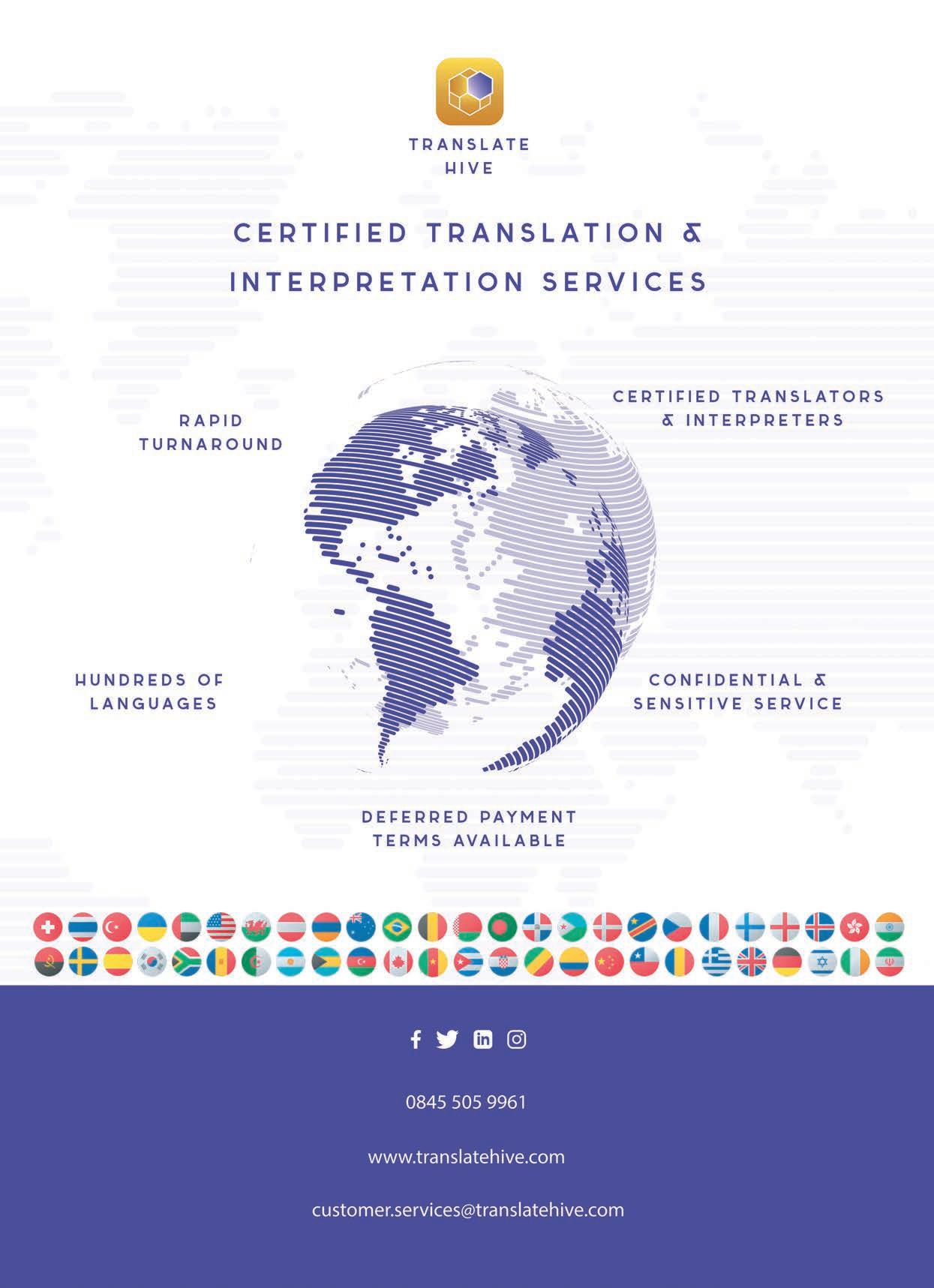
CLIENTS SEEKING LINGUISTIC ASSISTANCE can now feel thankful as the recoverability of interpretation and translation fees has significantly improved in recent times. That positive development removes a previously looming obstacle, making cases more encouraging and satisfying for our valued clients
At Translate Hive we have also felt that it presents as a potential barrier for solicitors taking on foreign-speaking clients, or indeed clients wanting to proceed with a claim.

For the solicitor, we at Translate Hive and for our team of linguists, all the hard work, planning and effort put into completing an assignment, only to be told that the costs are non-recoverable, is quite frustrating. How else can a claim move forward if the client does not understand what’s going on as English is not their first language?
Our translators are passionate about providing a top tier service; and with the most recent ruling on the recoverability of fees, we are even more empowered and committed to providing that service.

We are delighted at the recent positive decision in the Santiago v Motor Insurance Bureau appeal from Lord Justice Stuart-Smith: “Interpreters’ fees are now recoverable in the fixed costs regime.”
Lord Justice Stuart-Smith has upheld that interpreters’ fees are recoverable under the fixed costs regime, which is fantastic news to Translate Hive and to solicitors and barristers using our interpretation and translation services. Assistance to understand proceedings and provide evidence is now fully available to those who need it, with no penalisation in the recovered costs.
The appeal showed that the ‘one size fits all’ fixed cost analogy, when it came to the possibility of a litigant requiring the assistance of an interpreter or a translator was quite simply inadequate. That overview of fixed costs for foreign speaking parties prevented vulnerable parties or witnesses from being able to fully participate in the proceedings.
For a client to fully understand all the proceedings, they need to be able to read and verbally understand them. The assumption that the costs involved to interpret and translate those proceedings for a foreign-speaking client should not be recoverable, only served to penalise the client and their right to compensation. To refuse the interpretation and translation services would only hinder their rightful access to justice.
During the appeal, it was noted that, by CPR 1.2(b), prior to its
amendment: “Rule 1.1(a) and (d) set the objective that each of the parties involved in a claim are on an equal footing and that the parties can participate fully in proceedings and that the parties and witnesses can give their best evidence.”
That led to the most obvious and crucial of questions: how can there be an equal footing or best evidence given for a foreign-speaking party when they are unable to communicate or understand without the assistance of translators and interpreters properly and fully?
The rebuttal by Lord Justice Stuart-Smith quite rightly stated: “I reject the MIB’s submission that the question of interpreter’s fees does not involve a question of access to justice. Since the fees of an independent interpreter are not remunerated as part of the fixed fees for the provision of legal services, they are an additional expense that will fall upon the vulnerable party or their solicitor.”
To have access to justice, it was ruled: “…that an interpreter is essential if a person or witness who does not speak adequate English is to participate fully in proceedings or give their best evidence.”
It was also correctly pointed out that, with the non-recoverability of interpreter fees, that could financially dissuade a solicitor from taking on a foreign-speaking client, or a foreign-speaking client from wishing to pursue a claim.
“If the fees of an independent interpreter fall upon the solicitor, they will act as a financial disincentive to a solicitor who is contemplating whether or not to take on the case of someone who cannot speak adequate English. If they fall upon the vulnerable prospective party, they may have the same disadvantageous effect on her or him, whether they are to be paid up front or from any damages that may be recovered.”
Interpretation and translation services are so very important to allow an equal standing for both parties involved and allow the claim process and courts not to discriminate financially against foreign-speaking parties.
We are so very pleased that the requirement for interpreters and translators has now been recognised as a recoverable cost. This victory in the recognition of how the original fixed cost regime has potentially denied parties from accessing justice is a positive step in opening the door to foreign-speaking parties and their solicitors to being able to have the same rights and access to justice as Englishspeaking clients. q



[ IN JULY the Building Safety Regulator (BSR) announced two independent provider schemes for building control professionals to take the first step in becoming registered building inspectors. Registration is a key part of making building control a regulated profession.
The Building Safety Competence Foundation (BSCF) and the Chartered Association of Building Engineers (CABE) have been named as the first organisations to become independent competence assessors for all building control surveyors in England.
More than 4,500 practising building control professionals will need to be assessed and certified by April next year. It will support them to become registered building inspectors. They will no longer be able to work in building control across the whole built environment in England without certification. Registration is required by the Building Safety Act 2022. The register will open in October, with registration mandatory from next April, when Building Control will officially become a regulated profession.
From that date individual building control professionals, working for both the private sector and local authorities, will need to have passed an independent competence assessment to operate, and they will be required to be registered on the Building Safety Regulator’s register of building inspectors. BSR will provide a programme of support and guidance ahead of registration to help individuals and employers understand what they need to do to meet the requirements, as well as how to register.

As part of the BSR approved independent competence assessment schemes, candidates will be evaluated against the Building Inspector Competence Framework Classes 2-4 every four years. Assessments include interview and examination pathways and continuous professional development.

Dr Gavin Dunn, chief executive of CABE, said: “Building control professionals have a vital role in helping to deliver buildings that
are safe, sustainable and accessible to all. CABE is delighted to be able to play its part in supporting professionals to demonstrate their competence and in developing a culture of continuous improvement that will help protect the public interest in the long term.
“We do not underestimate the challenge in getting the building control profession ready by the April 2024 deadline. It is a huge undertaking, and we are in constant talks with relevant organisations to make this transition as smooth as possible.”
The BSCF’s chief executive Lorna Stimpson
said: “Dame Judith Hackitt asked industry for change. She asked for a change of mindset to reprioritise safety, a change of culture and the introduction of measurable competence. Dame Judith challenged industry, and in particular building control to ‘get on with it, don’t wait to be told what to do’.
“The BSCF’s model reflects the changes Dame Judith called for and the change our communities deserve. It puts people’s safety first and holds up to scrutiny from all, including service users, senior managers and insurers.” q

[A WARRINGTON-BASED construction company has been fined £90,000 after exposing people to asbestos during a renovation project in the Hanley area of Stoke-on-Trent.
Despite failing to attend Staffordshire Magistrates’ Court on 24 August, Esskay Construction Ltd was found guilty in its absence.
Nathan Cook, prosecuting on behalf of the HSE, told the court how the regulator received a concern on 31 August 2021 about asbestos disturbance. The concern related to a refurbishment project under the control of the company at an address in Hanley.
Representatives from the local authority had attended the site and discovered significant amounts of asbestos-containing debris at the front and rear of the building and along the public highway.
An inspector from HSE then went to site and served two Prohibition Notices – prohibiting all work within, and access to the surrounding area, other than by a licensed asbestos removal contractor for the purpose of making safe. A licensed asbestos removal contractor was then appointed to carry out a clean-up operation.
However, further investigation by HSE found that Esskay Construction Ltd had failed to appoint a competent person to carry out a refurbishment and demolition asbestos survey of the premises prior to carrying out work on site. The company then allowed refurbishment to commence without knowing where the asbestos containing materials were, resulting in them being disturbed and potentially exposing workers and members of the public to harmful asbestos fibres.
Speaking after the hearing, HSE inspector Will Gretton said: “Asbestos is a class 1 carcinogen which is known to kill around 20 tradesmen each week. Carelessness at this scale, met with a failure to attend court, is unacceptable.
“Any building constructed prior to the year 2000 must be assessed for the presence of asbestos prior to any disturbance work taking place, and any asbestos-containing materials must be left undisturbed or be removed by a competent contractor under controlled conditions.” q
DESPITE OPPOSITION from some in the construction industry, Michael Gove’s decision to require new residential buildings above the 18m height threshold to have a second staircase has been broadly welcomed by the fire prevention and protection sectors.
In a speech delivered at Kings Cross on 24 July, Mr Gove said that a second staircase “removes the risk of a single point of failure, buys critical time for firefighting activities and provides residents with multiple escape routes”.
An earlier proposal from the government that the height threshold be 30 metres led to significant criticism from bodies such as the Royal Institute of British Architects (RIBA), the Royal Institute of Chartered Surveyors (RICS), the Chartered Institute of Building (CIOB), the National Fire Chiefs Council (NFCC) and Disability Rights UK.
Gavin Tomlinson, chair of the NFCC’s Protection and Business Safety Scrutiny Committee, welcomed the move to a lower threshold. He said: "NFCC welcomes the Secretary of State’s announcement that a second staircase will be mandatory for all new residential buildings above 18 metres in

height. Following the launch of our position statement calling for this change, we are pleased that the government has listened to voices from across the sector.
“This decision marks another significant step in improving the safety of residents and firefighters in high-rise residential buildings across England. We look forward to working with the government on the details of the guidance to ensure that it delivers safe and well-designed protected staircases and buildings.”
Eddie Tuttle, Director of Policy, External Affairs and Research at the CIOB, added: “The safety of residents and emergency services workers is paramount and can never be understated.
“We have always believed the proposal to mandate secondary staircases for buildings over 18 metres tall to be the best solution as it provides a more comprehensive strategy in ensuring all high-risk buildings have more than one means of a safe entrance and exit. Not only does it make exiting buildings in the event of an emergency easier, but it also allows emergency workers to avoid interruption.” q

[FOLLOWING ‘serious fire and safety concerns’, the Fire Brigades Union (FBU) has launched a legal challenge over the government’s use of the Bibby Stockholm barge in Portsmouth. The Home Office’s decision to repurpose the 222-cabin vessel and house asylum seekers was met with much controversy within and outside the industry with one local authority source dubbing it a ‘floating Grenfell’.

On 27 August the FBU announced that a Pre-Action Protocol letter had been sent by its lawyers to the Home Secretary in which the union outlined its ‘concerns over safety aboard the barge’. According to The Guardian , some of the issues raised by the union include a lack of fire drills for asylum seekers, inadequate fire risk assessments, overcrowding and concerns over fire exit access.
The letter reads: “The decision of the [Home Secretary] therefore creates an apparently entirely new, and highly dangerous accommodation arrangement, in which 506 traumatised asylum seekers may face a fire or hazardous materials emergency and need to evacuate the barge as an emergency, while being entirely untrained in fire safety, without even having undertaken fire drills. This situation is inherently unsafe.”
The letter to the Home Secretary follows a meeting request that the union made earlier in the month but was turned down.
The Guardian quoted immigration minister Robert Jenrick as telling the union: “The fire safety standards on the Bibby Stockholm are the same as any other berthed vessel, meeting the industry standard, and statutory inspections including fire safety checks having been successfully completed. Tactical plans, including arrangements for evacuation of residents to assembly areas away from the quayside and outside the gated area, have been developed.”
General Secretary of the FBU Matt Wrack said: “The Fire Brigades Union is the professional voice of firefighters, and we have a duty to make our voices heard on matters of fire safety, especially when politicians let our members and the wider public down. We have been sounding the alarm about the Bibby Stockholm for weeks.
“It is disgraceful that the Home Secretary is not even willing to meet us to discuss these concerns. Throughout this episode, the government has displayed a lack of transparency and a callous disregard for the safety of both firefighters and those who are due to be housed on the barge.
“Fires do not discriminate based on immigration status, and neither can fire safety regulations. Everyone, no matter where they are from, has the right to live in safe and decent accommodation, and firefighters have the right to expect that they will not be recklessly endangered.
“This is an industrial issue for the Fire Brigades Union, as our members are the ones expected to respond to any fire aboard the Bibby Stockholm . We have therefore decided to move towards a legal challenge on this matter.” q

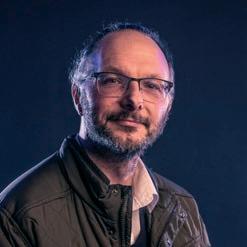

[2023 IS AN anniversary year for me. It is 21 years since my first appearance as an expert in a court hearing, leading on an enforcement case as a local authority tree officer.
My cases since 2002 have been varied, with trees being the common theme, and tree safety has been a regular feature. The recurring question when a tree-related claim is made, especially when it involves tree failure, is ‘was the failure foreseeable?’. That is part of the defendable tree management plan.
The starting point with tree safety and managing risk is to recognise the duty of care of the landowner to ensure that trees they are responsible for are maintained in a safe condition. In order to do that the landowner needs to demonstrate they have taken reasonable care to assess the condition of their trees and to action any works needed. Knowing the population of trees via a survey, and demonstrating that each has been assessed for its condition, are integral to the process.
There are several basic principles to implement:
• Have a record of the trees you own, and where they are. It is
• beneficial to also have details of their condition and any targets
• within falling distance.
• Record details of any recommended works, and their priorities.
• Ensure works are undertaken with details of when this happens.
• Implement a re-inspection programme. That should reflect any
• variations in risk: for example, trees near to a target such as a road
• or property with regular occupancy merit re-inspection more
• regularly than those in a place with occasional or no occupancy.
Official guidance is limited on the credentials of the individual who undertakes the survey. The surveyor should be competent in the skills of surveying trees. My experience of responding to claims as an expert witness – for the claimant or the defendant – has unveiled how often the phrase ‘expert’ is used to endorse the surveyor. Often, when there is a claim, they are anything but an expert in the field.
In one case I was asked to investigate, a tree had split in two, with part landing in the highway next to it, causing a road traffic accident and injury. The owners of the tree had employed the services of a land management company to manage the property; and that company had employed their own tree specialist. They resisted a claim for compensation, explaining how their expert had surveyed the trees and found them to be safe. A storm was cited as the reason for the failure.
As I explored further, it became apparent that the ‘expert’ had no formal credentials; the ‘survey’ had been a walk around the site with a member of the management company who lacked any arboricultural credentials and a review of weather for the day of the incident revealed that the ‘storm’ had actually been elsewhere in the UK. Was the failure foreseeable?
The tree owner, via their agent, had employed someone without the necessary skills, training and experience. They had no records of the trees. Other trees on the site were in need of work, showing that the agent was not pursuing a thorough tree management plan. The defendant settled the claim shortly after receiving my report.
The need to implement recommended works is important. That requires the report author to provide clear recommendations and timescales. There have been several cases considered by the courts where tree works have been identified but not implemented. The most recent was in Newcastle in January this year. A willow tree in the grounds of a school had been inspected and further investigations recommended six months later. Those were not implemented; three years later the tree was uprooted in a storm, causing the death of a pupil. The local authority was fined for a failure to protect the pupil. The £225,000 fine reflected the fact that the local authority pleaded guilty to the charge.
The records of inspections do not need to be long reports prepared for a
court hearing. I was asked to advise a school which faced a claim for negligence when a branch of a tree, broken during windy weather, had injured a child visiting the school. The school had employed the services of a professional arborist to walk the site, look at each tree and identify any works needed. Those were then implemented with a typed summary of works from the arborist.
When I visited the site, it was evident that the broken branch was not dead or decayed, and the school had taken reasonable action to ensure the safety of their pupils. During the inclement weather the school arranged for pupils to spend breaks indoors. The injured child was visiting and the responsibility of others.
Tree safety does not always affect only people but also damage to property. The same principle applies. In one case involving an insurance claim, a tree was blown over in Storm Arwen. In that case the claimant’s insurance company did not request a report to assess whether there was a tree within influencing distance, which may have led to an arborist identifying fungi at the base of the tree, hidden from obvious view but ready to be found by anyone sufficiently interested. Was it foreseeable? With the informed eye of the experienced arborist, yes.
A tree safety management plan does not prevent tree failure, but should make it less likely. In 2022 I was asked to investigate a claim against a local authority which arose when two trees on their land were uprooted during inclement weather, landing against a bus. Sufficient damage was caused to write off the bus. The bus company’s owners sought to recover their costs and alleged that the local authority should have undertaken a more detailed inspection of the affected trees.
The local authority had a tree inspection programme in place. Undertaking the more detailed inspection is a time-consuming and costly exercise, which is usually only applied to specific trees where there is evidence of cause for concern. That can include the presence of decay. The local authority was able to resolve matters, avoiding a costly court hearing and a large settlement.
It should be noted that the chances of being hit by a falling tree are similar to those of winning the National Lottery, and there are about 12 fatalities per year linked to tree failure.
The consequences of not having a defendable tree management plan can be considerable and costly. However, implementing one need not be onerous and can ensure targeted use of resources and a situation where the owner can rest assured that they have met their duty of care. q
EXPERTS FOR MEDIA is a new section in Your Expert Witness for experts who wish to offer their views and the benefit of their experience to the vast range of print and broadcast media.


Ever wondered how news teams find the experts they consult to explain the ramifications of breaking news stories, seemingly at the drop of a hat? Or how the producers of TV drama series ensure their stories are accurate and reflect the realities of the professions they portray?
The fact is that researchers consult registers of experts and expert periodicals just as lawyers do. In fact, Your Expert Witness is receiving an increasing number of enquiries from media researchers and public relations agencies looking to locate appropriate experts to inform their clients.
Experts for Media is therefore an ideal space to attract their attention. For prices and to book your space, contact Ian on 0161 710 3880 or via ian@dmmonline.co.uk

Mr Luke Meleagros BSc MBBS MD FRCS Consultant Surgeon
Mr Meleagros completes around 6-10 expert reports per month, the majority in medical negligence cases and a smaller number of personal injury cases. He has reported extensively on cases involving abdominal laparoscopy surgery and hernia surgery.
T: 0208 527 0977 E: L.Meleagros@btinternet.com Sec: jawdobson@gmail.com
Professor Panayiotis Kyzas
FRCS(OMFS) PhD MBBS BDS FST GDL Consultant OMFS Head & Neck Surgeon
Professor Charles Davis acts as an expert witness with very extensive experience in cases relating to neurosurgery, including the preparation of medico-legal reports and appearing in court. Speedy reporting, free advice and screening.

Contact: Marlene Scruton T: 01772 761150 F: 01772 761150
E: marlene.scruton@talktalk.net

and Fetal Medicine Specialist
Medical negligence cases involving:
• multiple pregnancy and high
• risk obstetrics including intra
• partum complications and
• birth asphyxia
• prenatal diagnosis
• obstetric ultrasound
• first trimester screening
T: 07812 353820 E: emmaferriman@doctors.org.uk
W: www.emmaferriman.co.uk
Consultant Oral and Maxillofacial Surgeon
Mr Hensher’s subspeciality interests include dental implantology, facial injury and temporomandibular joint replacement. He prepares over 50 reports yearly including negligence and criminal cases.

E: jackiesorrell0101@gmail.com M: 07947445414
E: roberthensher@gmail.com M: 07836540457
Professor Panayiotis Kyzas is a Consultant OMFS Head and Neck Surgeon who specialises in major oncological head and neck cancer surgery. Professor Kyzas accepts cases relating to facial trauma, oral surgery, facial cosmetic surgery, TMJ disorder and facial skin cancer surgery. He can take instructions on behalf of either claimant or defendant or as a Single Joint Expert.
T: 07505 402640 E: kyzasp@icloud.com

MBBS MFOM DAvMED(Lond) CFIOSH FCIM MA Consultant in Occupational Medicine


Clinical negligence and personal injury cases on behalf of claimant, defendant or as a Single Joint Expert. Specialist areas of expertise include work related accidents and injuries – most notably in the aviation industry – and those due to long term exposure to chemicals, noise and vibration.
T: 07836 664670 E: ian@ianperry.com W: www.ianperry.com
Mr Thomas Wood MSc MPhil CUBS Data Science Consultant

Mr Thomas Wood is a CUBS-accredited Expert Witness, certified for civil litigation. He also offers due diligence services for acquisitions of technology companies using AI.
• Natural language processing (NLP) • Machine learning
• Data science • Artificial intelligence (AI)
T: 020 3488 5740 E: thomas@fastdatascience.com
W: fastdatascience.com
Welcome to our A to Z guide of the websites of some of the Expert Witness field’s leading players.
If you are one of our many online readers simply click on any of the web addresses listed below and you will be automatically directed to that particular website.
To get your website listed on this page just give us a call on 0161 710 3880 or email ian@dmmonline.co.uk
Chris Dawson MS FRCS LLDip
Translations and Interpreting for the Legal Profession since 1997. Specialists in Personal Injury and Clinical Negligence. www.abc-translations.co.uk
Andrew F Acquier BA FRICS
Chartered Art & Antiques Surveyor

Expert witness reports and representation at court for matters involving: • Divorce settlements
• Arts litigation
• Insurance valuation disputes
• Contentious Probate
www.andrewacquier.co.uk
Salam Alaswad LLM PGDip BSc
• Financial derivatives • Contracts for Difference (CFD)
• Forex fraud • Financial crimes • Pre-action assessment
• Charts and diagrams for complex cases www.fxandcfd.com/expert-witness
Dr Paul Baskerville MA DM FRCS
Expert witness instructions in cases relating to all aspects of vascular disease. Can act on behalf of claimant, defendant or as Single Joint Expert. www.baskervilleclinic.com
Mr Timothy Burge MBChB FRCS FRCS(Plast) DMCC MSc
Consultant Burns & Plastic Surgeon
• Cosmetic and aesthetic surgery of the breast and trunk
• Burns • Trauma • Scars www.clifton-plastic-surgery.co.uk
Professor Frank Chinegwundoh MBE

Consultant Urological Surgeon specialising in Personal Injury and Medical Negligence cases on behalf of either claimant or defendant or as a Single Joint Expert. www.urologyconsultant.co.uk
Clarke Gammon
Chartered Surveyors with experience in All Aspects of Property
• Residential property values
• Asset valuations • Land values and more www.clarkegammon.co.uk

D & HB Associates Ltd
Experts in Road Traffic Offences
• Accident investigation and reconstruction
• Tachograph analysis
Consultant Urologist with over 19 years experience of medico legal report writing and expert witness work in personal injury and clinical negligence cases. www.chrisdawson.org.uk




DentoLegal Ltd – Gary M Simon
DentoLegal specialises in the preparation of evidencebased Breach of Duty & Causation and Condition & Prognosis Dental Reports on the instruction of solicitors. www.dentolegal.com


DRC Forensics Limited
DRC Forensics Limited offers the complete range of forensic accounting & litigation support: • Fraud
• Money laundering
• Partnership disputes
• Loss of profit
• Professional negligence www.drcforensics.co.uk
Mr Roger Emmott CEng BSc(Hons) MSc/MBA MA FCMI FIC


Steel and iron ore expert with international arbitration and cross-examination experience in complex disputes


• Pricing • Contractual matters • Valuations
T: 07974 351704 E: roger@rogeremmottassociates.com www.rogeremmottassociates.com

FHDI - Kathryn Thorndycraft-Pope
Examining documents & handwriting • to determine authenticity • to expose forgery • to reveal aspects of origin. Electro Static Detection Apparatus and Mi-Scope used. www.forensichandwriting.co.uk
Forensic Collision Investigation & Reconstruction Ltd

Specialists in the analysis of road traffic collisions
• Collision Reconstruction • Expert Witness
• Vehicle Examinations
www.FCIR.co.uk
Fiona Hotston Moore (FRP Advisory)
Fiona is a partner of FRP’s Forensic Services practice specialising in share and business valuation cases, commercial and tax disputes and professional negligence. www.frpadvisory.com/people/people-profiles/fiona-hotston-moore/

Mr Kim Hakin FRCS FRCOphth
Consultant Ophthalmic Surgeon and Expert Witness on ophthalmological matters
• Stolen vehicle examination and identification
• Statement Taking www.dandhb.com
Dr Lars Davidsson MRCPsych MEWI
Consultant Psychiatrist and Accredited Mediator Reports within most areas of general adult psychiatry. Specialist in PTSD, anxiety disorders & mood disorders. www.angloeuropeanclinic.co.uk
www.kimhakin.com
Haydn Jones MEng DipLaw FIET
Data Technologist & Digital Regulation Expert
• Injunctive relief
• Money laundering
• Digital currency theft
• Counter funding of terrorism
haydn@blockchainhub.com
Dr Raj Kumar – Dental Expert
Causation and Liability and Condition and Prognosis Reports
• General dentistry • Cosmetic dentistry • Patient consent
• Dental implantology • Orthodontics • Facial aesthetics
www.dentalexpert.me
Kulvinder Lall Consultant Cardiothoracic Surgeon



Instructions taken in cases relating to cardiac and thoracic surgery, including aspects relating to surgical care and those following trauma to the structures of the chest.
www.kulvinderlall.com
Mr Chris Makin
• Chartered Accountant • Accredited Civil Mediator
• Accredited Expert Determiner
www.chrismakin.co.uk
Martyn Slyper Consultancy
Expert Witness in Assistive Technology
• Personal Injury • Clinical Negligence • Industrial Injury
E: ms@martynslyperconsultancy.co.uk
www.martynslyperconsultancy.co.uk
Simon Quinton Smith BSc FRICS MI Hort

Industry
www.quintonedwards.co.uk
Professor Christopher Raine MBE

Specialist in paediatric and adult otology
• Medical negligence • Personal injury cases involving noise induced hearing loss. www.profchrisraine.co.uk

Mr Sameer Singh MBBS BSc FRCS Orth
Consultant Orthopaedic Surgeon • All aspects of trauma – soft tissue and bone injuries

• Upper and lower limb disorders and injuries
• Whiplash injuries
• Expert Witness for defence and claimant Clinic locations – London, Milton Keynes and Bedford
www.orthopaedicexpertwitness.net
Andrew Smith FPC III CeMAP
Financial Conduct Authority Compliance & Risk Consultant
Cases relating to FCA compliance in consumer credit and mortgage lending.
• Mediation
• Arbitration
• Adjudication
www.paxen.co.uk
• Expert Determination
Dr Elizabeth J. Soilleux MA MB BChir PhD FRCPath PGDipMedEd
Expert Witness Pathologist with a particular interest in haematopathology. Short reports on specimens, full court compliant reports and expert biopsy reporting.
www.expertwitnesspathologist.co.uk
Mr Bernard Speculand MDS FDS FFD FRACDS (OMS) Consultant Oral and Maxillofacial Surgeon. Personal injury and clinical negligence cases for claimant, defendant and as Single Joint Expert. Special interest is TMJ Surgery.





Yvette Young (Secretary) T: 0121 605 1884
E: info@medsecadmin.co.uk www.birminghamtmj.co.uk
Mr David Anthony Sykes (Tony Sykes)
BSc CEng CITP MBCS MIET FAE MEWI
Specialist in IT and Telecommunications. Expert witness and consultancy services to lawyers, insurers and loss adjusters. Experience in international arbitrations and the High Court TCC.


www.rocksideconsultants.co.uk
Myles J O Taylor BA(Oxon) PhD FRCOG
Expert witness specialising in: • General obstetrics & gynaecology • Fetal Medicine • Multiple pregnancy
– including twin to twin transfusion syndrome, intrapartum care and general gynaecology.
www.mylestaylor.co.uk
Vincent Theobald-Vega
Health and Safety expert
• Asbestos management & removal
• Construction design and management • Laboratories
• Biological & chemical safety and much more.
www.safety4hed.co.uk




[ IT HAS BEEN ANNOUNCED that Lady Justice Thirlwall will be leading the inquiry into the circumstances that enabled Lucy Letby to carry on a killing spree at the Countess of Chester Hospital –disturbingly close to home for this publication. There had been indignation at the original announcement of an internal inquiry with no powers to, frankly, do anything. The organisational failures that led to warnings being ignored, coupled with the fear of being singled out for complaining, are nothing new in the NHS, it seems: ‘lessons will be learned’ has become an all-too-familiar phrase. Let us hope that in this case the necessary action will be taken.
• The fear of being censured or, worse, struck off for being unable to do their job properly because they are required to deliver care in inappropriate surroundings is a real issue for the majority of nurses today, as they are increasingly having to treat patients in corridors, waiting rooms and even store rooms. There has also been an alarming rise in instances of nursing staff being abused and assaulted as a result of rising frustration. The Nursing and Midwifery Council has said that it takes into account such circumstances when considering complaints. That, of course, is no substitute for adequate facilities.
• There are numerous circumstances that affect the level of care patients receive. One of the most iniquitous is that of geographical location. A complex relationship between where you live in the country and whether you get a new hip has emerged from research carried out at the University of Bristol. In some areas of England a policy of deferring hip replacements for patients with high BMIs (Body Mass Index) is still being pursued – despite NICE guidance to the contrary. In others the policy is not, and has never been, implemented.
In the case of shoulder replacements, however, an influencing factor is the number of procedures carried out by the surgeon per annum.
• It pays to live in an affluent area if you have a heart attack as well, it has emerged. The distance to a defibrillator from anywhere in a postcode area differs wildly, with the affluence or otherwise of an area being a major factor.
Another, even more worrying factor is, of course, whether or not you make it to hospital at all. Figures for people dying while on a waiting list, derived by the Labour Party from a Freedom of Information request, are a distinct cause for concern.
• The beginning of life is a time when extra care is needed, both for the newborn and the mother. One of the most dangerous threats to both is that of sepsis. There has been a great deal of information issued on the dangers of sepsis, leading to a greater appreciation of the danger signs among the general public, but it is still possible to mistake the signs, even among experienced professionals. When that becomes negligence is the subject of an illuminating piece from the lawyer’s point of view.
Diabetes in pregnancy is another risk factor, discussed by Dr Bobby Huda as part of his regular series on diabetes. He also outlines the more optimistic cases of remission of diabetes among obese people as a result of a strict diet.
• There was more optimism emerging from research studies. In the case of Parkinson’s, an eye scan can detect markers several years before it was previously diagnosable. Plus, a drug that can prevent hearing loss caused by a particular class of antibiotics has been developed with the help of the humble zebrafish. q


[NHS RESOLUTION’S Annual Report and Accounts for 2022/23, published on 13 July, demonstrates what it terms its ‘on-going commitment to an innovative dispute resolution strategy that has effectively reduced litigation rates and costs’.
In line with its strategy to keep patients and healthcare staff out of court, a record 80% of claims were resolved in 2022/23 without resorting to legal action, continuing the positive trend observed over the past six years. An estimated £4.6bn has been saved for the taxpayer as more cases are resolved without payment of damages, coupled with a robust approach to fraud.
Those achievements are due to a collaborative approach seen across the legal market, with some processes started during the pandemic continuing to be embraced. That positive, less adversarial approach involves diverse and more empathetic methods of resolving compensation claims. Mediation, resolution meetings and stocktakes have all become integral components in effectively addressing claimants’ concerns and achieving satisfactory resolutions.
According to a statement from NHS Resolution announcing the report: “There has been significant progress in enhancing safety through upstream initiatives and expediting liability investigations on obstetric brain injury, specifically via the Early Notification Scheme.”

The report also highlighted products that have been developed to share insights. They include, for example, the national maternity conference, the Being fair 2 report and a duty-of-candour animation.
As well as those, NHS Resolution has produced six insights papers and hosted a range of webinars and events for member trusts and scheme beneficiaries. All of this work has complemented the focus on dispute resolution and patient safety.
Chief executive Helen Vernon commented: “Our latest annual report showcases a significant advancement in early intervention and resolution, which has resulted in 80% of cases being resolved without resorting to litigation.
“Our collaboration with partners in the healthcare and justice sectors has helped to share knowledge and improve patient safety. A sustained collaborative approach within the legal market has meant a notable shift towards a more co-operative and compassionate mindset in delivering compensation.
“We will continue to explore and implement an increasing range of dispute resolution options to ensure that litigation isn’t the only choice, whilst ensuring that claims are thoroughly investigated and settled fairly at the earliest opportunity.”
The number of cases resolved continued to increase: 17,116 clinical and non-clinical claims were resolved in 2022/23 compared with 16,484 in 2021/22. The amount spent on claims in 2022/23 was £2.64bn, compared to £2.5bn from 2021/22.
NHS Resolution’s provision as at 31 March 2023 reduced significantly to £69.6bn, compared to £128.6bn in 2021/22. That is primarily due to the change in HM Treasury long-term discount rates – an accounting estimate which places a value in today’s prices on liabilities that are expected to fall due for settlement in the future.
The total number of new clinical negligence claims and reported incidents across primary and secondary care reached 13,511, which was 1,567 fewer than the previous year. That is mainly due to the one-off taking on of 2,005 historic claims from the Medical Protection Society, which now come under the Existing Liabilities Scheme for General Practice (ELSGP).
Clinical claims received by both the Clinical Negligence Scheme for Trusts (CNST) and the Clinical Negligence Scheme for General Practice (CNSGP) increased by 1,019 claims, or 8.6%. The volume of non-clinical claims reported in 2022/23 is comparable to 2021/22, although it remains lower than pre-pandemic levels.
With an expanded remit into general practice, the report also
describes how NHS Resolution has responded to its increased workload and responsibilities, as well as wider changes in health and justice. In the CNSGP there has been an expected increase in reported claims of 45.1% compared with 2021/22, which is primarily due to the time-lag between incidents occurring and claims being received for this relatively new scheme and does not reflect lower safety standards in general practice. q
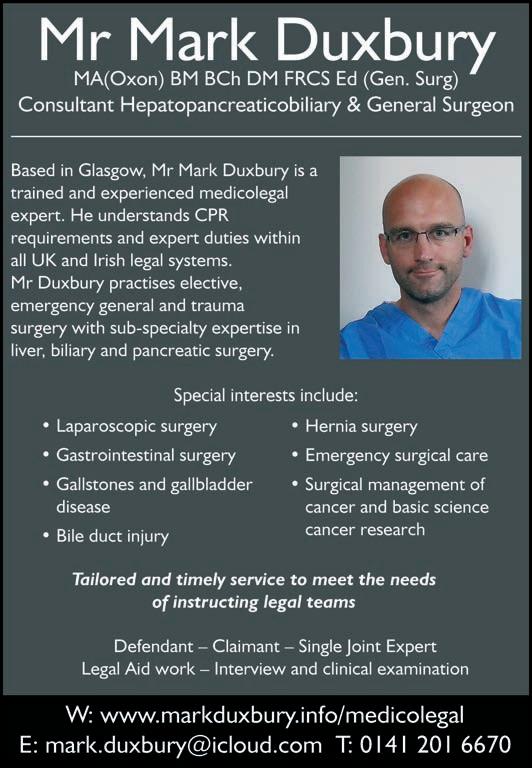
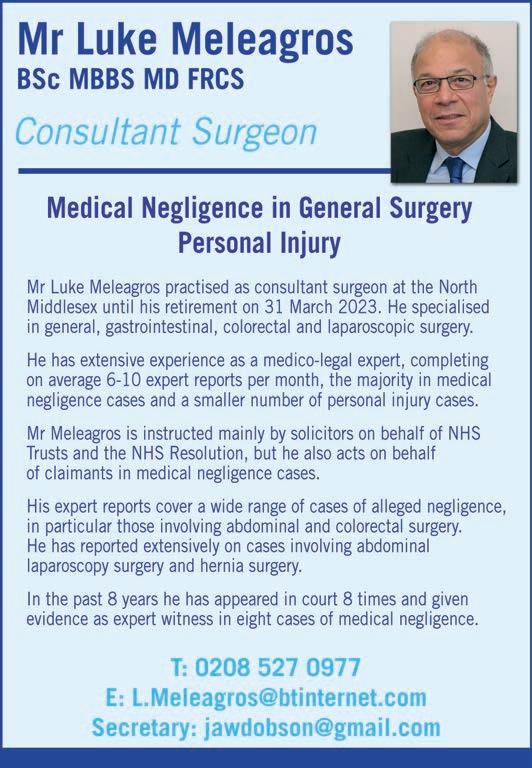
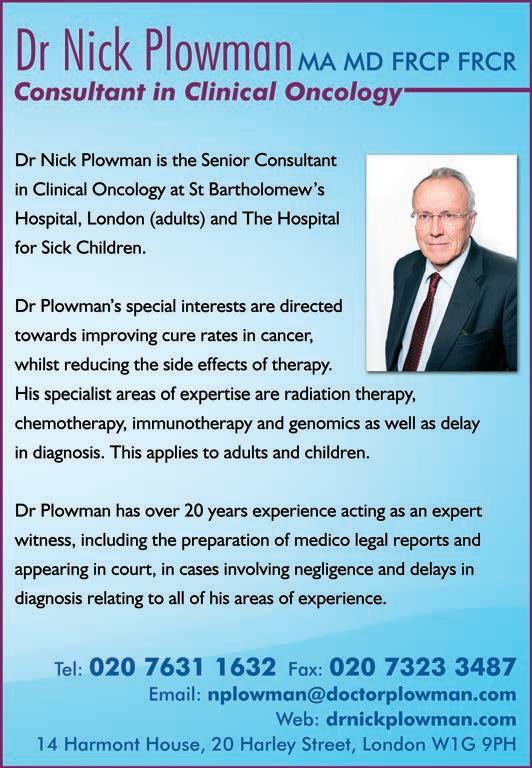
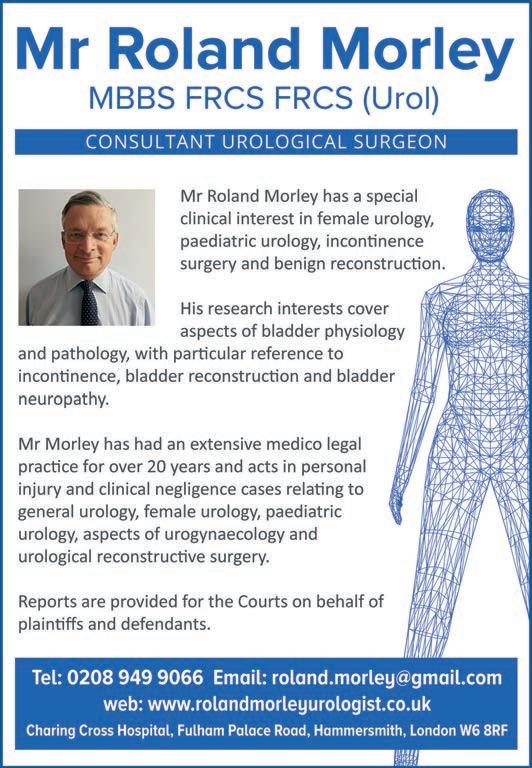
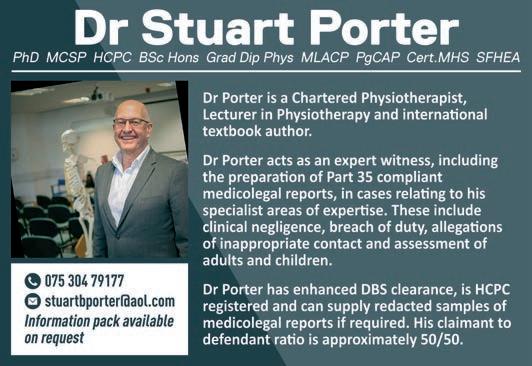

[ RESPONDING TO FIGURES revealed in a Freedom of Information request by the Labour Party, which suggests that around 121,000 patients died last year while on NHS waiting lists, Dr Emma Runswick, deputy chair of the British Medical Association Council, commented: "Although the Labour Party’s figures are based on information from a small number of trusts, for people to die whilst waiting to get the care they have been waiting for is
a terrible indictment of this government’s mismanagement of our health services.
"For too long the government has sat back and, despite promises to invest in the NHS and cut waiting lists, has done very little to make any serious improvements. In fact, waiting lists have grown year-onyear under recent successive Conservative governments. It's no secret the NHS is in crisis: we are thousands of doctors short and the ones we have are overstretched, working
all hours under tremendous pressure, with many on the verge of burnout. This all has an impact on patient care.
"The only way to cut waiting lists and improve care is to invest in services and the workforce and come back to the table to negotiate an agreed end to the doctors’ industrial dispute. Government must wake up to this reality and start valuing doctors instead of blaming them for the government's own failures at every turn.” q
[ SIMON BERNEY-EDWARDS of the Expert Witness Institute (EWI) has provided a useful elucidation of the lessons to be learned by expert witnesses from the judgment in the case of CCC v Sheffield Teaching Hospitals NHS Foundation Trust. He describes the judgement as ‘essential reading for all expert witnesses’.
The case concerns the level of award to be made to a child who has severe cerebral palsy as a result of the care received.
Simon reveals: “In his judgment, Mr Justice Ritchie provides a balanced analysis of the expert evidence and the expert witnesses who appeared before him. And as a result, this judgment provides a really helpful list of things to avoid and the kind of approaches all expert witnesses should take with their work.”
He begins his analysis by listing the many criticisms lodged against a number of the expert witnesses which were generally instructed by the defence:
• Lacked impartiality (extracting one medical record and placing
• unproportionate weight on it) and in one case the opinion was
• considered to be uninformed and unbalanced.
• Not acting within their CPR Part 35 responsibilities.
• Report was not compliant (did not put a proper Part 35
• statement on his reports).
• Failed to set out the range of opinion in the report and
• suggested the ‘cheapest option’ instead of the reasonable
• range.
• No desire to understand the difference between the burden
• of proof in court on the balance of probabilities and the medical
• requirement in the publication of research for the conclusions
• therein to be to a scientific standard.
• Giving an opinion outside of their area of expertise
• Did not have sufficient qualifications or experience, or in one
• case recent experience: the expert had not worked with
• cerebral palsy children for 18 years.
• Research was insubstantial, superficial, lacked detail and, in
• one case, was purely desk-based.
• Unable to demonstrate that they had thought things through
• in sufficient detail to match the claimant’s needs with the
• correct equipment.
• Pre-judging or fabricating evidence based on a hunch outside
• their field of expertise.
• Misrepresented the existence of the defendant’s expert therapy
• evidence which did not exist when they asserted it did.
• Not updating evidence/undertaking re-examination/assessment.
Simon writes: “Many of these issues are deficiencies we see being highlighted in judgments on expert evidence with alarming frequency. This is why it is important that all expert witnesses understand their duties and the rules and regulations.
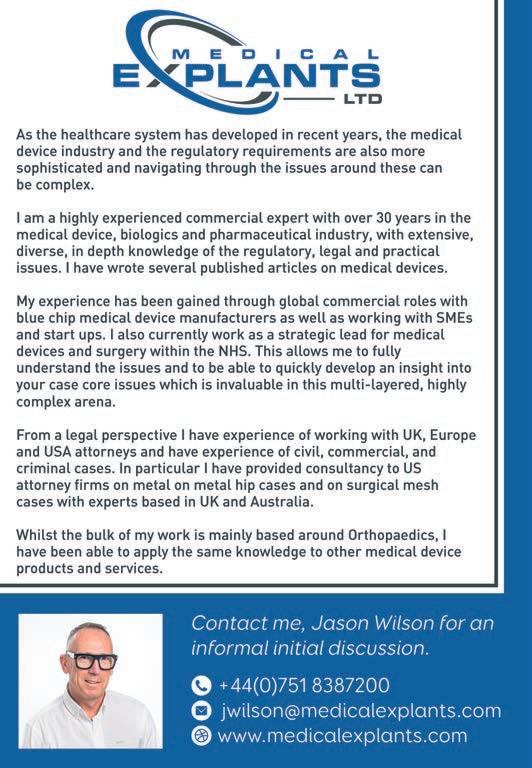
“However, it also highlights the need for on-going training and reminders. Expert witnesses need to become reflective in their practice: asking themselves every time whether they have provided
an objective, unbiased opinion and considering whether they really have sufficient qualifications and skills to deal with the issues in the instruction.”
He points out that the Expert Witness Institute provides guidance on just those issues in its Expert Essentials course.
Not everything was negative, however. He writes: “One of the things I like about this judgment is that, whilst Mr Justice Ritchie sets out the deficiencies in the expert evidence, he also takes time to mention the excellent practice from the expert witnesses in the case, which included EWI member Steven Docker. q
• To find out what EWI courses are on offer visit the website at www.ewi.org.uk/Training-and-Events

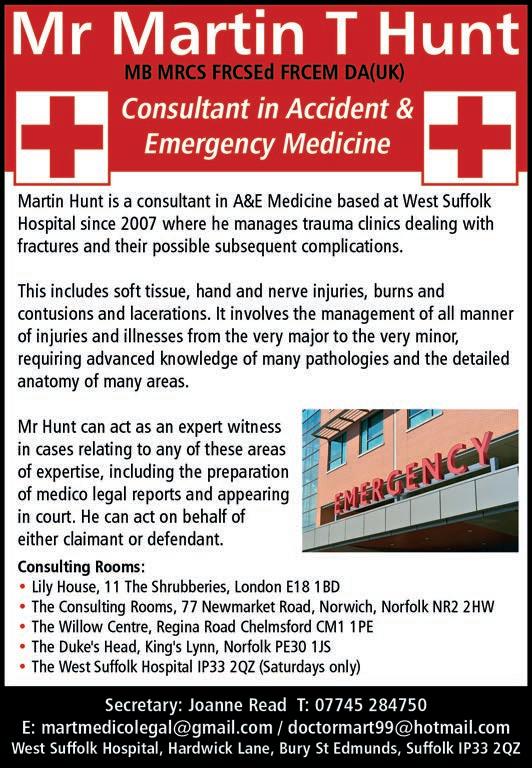
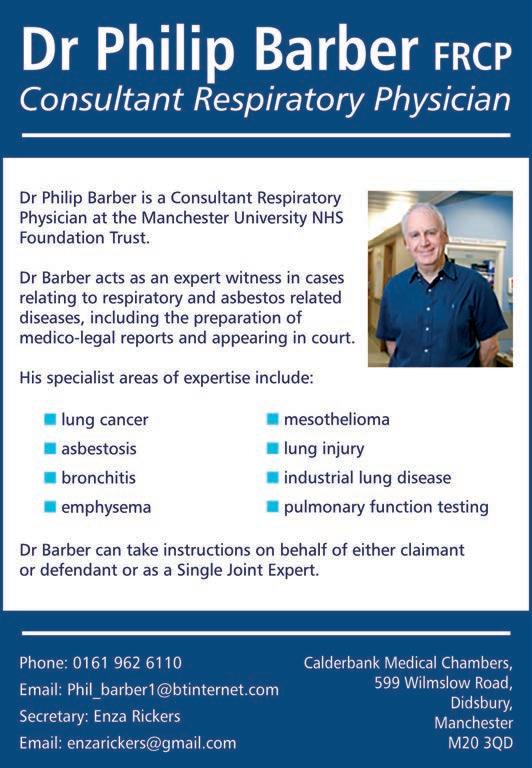
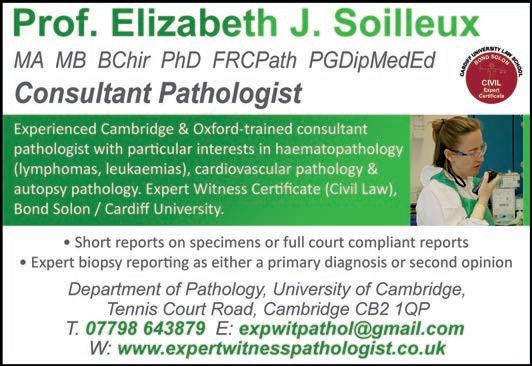

[HUNDREDS OF PEOPLE across England with drug and alcohol dependencies who have been prescribed Valium in the long-term will have their cases reviewed following an Ombudsman investigation.
[
SINCE APRIL 1 2022, NHS Resolution’s Early Notification (EN) scheme team has initiated direct communication with families, and they have recently appointed a Family Liaison Officer to ensure consistent contact once a case is accepted onto the EN scheme. Trusts will retain their duty of candour obligations, and the EN team will collaborate with trusts to inform families of outcomes and next steps.
In order to gather comprehensive and up-to-date information on each qualifying maternity incident, a new EN report form has been introduced. There is more information of the EN scheme on the EN webpage designed to provide information and support for NHS trusts or member organisations.
Trust legal teams are still required to notify NHS Resolution of qualifying incidents via the Claims Reporting Wizard, as confirmed by the Healthcare Safety Investigation Branch.
However, trusts must now ensure they complete and attach the new EN report form when reporting EN cases to NHS Resolution. To help, a new reporting guide has been produced to assist in identifying a qualifying maternity incident. Trusts are advised to follow key actions outlined on the EN webpage for trusts. q
The Local Government and Social Care Ombudsman has found that Change Grow Live (CGL), on behalf of Cambridgeshire County Council, has been prescribing benzodiazepines to people long-term, against national guidance. The company also provides drug and alcohol services for 50 other councils.
Benzodiazepines – including diazepam (Valium) – are a class of medicines that can relieve nervousness, tension and other symptoms of anxiety and should usually only be prescribed short-term.
According to CGL’s policy, people use them for anxiety, insomnia, to enhance opiate effects, to deal with mental health issues, improve confidence and to reduce psychotic symptoms like hearing voices. However, if they are prescribed for too long they can have significant negative effects, including dependence, withdrawal symptoms and drug-seeking behaviour.
People on those medicines should have their prescriptions reviewed regularly, and those reviews should consider the benefits and risks of continuing with the current dose, reducing or stopping it, with a management plan put in place after each review. However, the Ombudsman’s investigation found CGL were either not reviewing people’s prescriptions regularly enough or not keeping proper records of those reviews.
Across the country, CGL has 343 clients who are on long-term prescriptions. Its medical director has since started a national clinical audit focusing on benzodiazepine prescribing across the country.
Nigel Ellis, Local Government and Social Care Ombudsman chief executive, said: “Clinicians need to weigh up the benefits and risks for patients who are taking these medicines long-term and should have a clear rationale for continuing to prescribe.
“I am pleased that patients in these vulnerable groups will now have their cases reviewed more regularly and comprehensively following my investigation. Both CGL and the council have co-operated fully with our investigation, and I welcome their ready acceptance of our recommendations.”
The Local Government and Social Care Ombudsman remedies injustice and shares learning from investigations to help improve public and adult social care services. In this case CGL and Cambridgeshire County Council have agreed to provide the Ombudsman with a report of the national clinical audit CGL is currently doing.
The council has also agreed to ensure CGL improves record keeping, updates its policy to include recent guidance from NHS England and completes yearly audits of Cambridgeshire CGL clients who are on long-term prescriptions of benzodiazepines. q
[ THE CARE QUALITY COMMISSION has issued a report on the safer management of controlled drugs (CDs), highlighting the key findings from its regulatory activity in 2022. The Controlled Drugs Regulations give CQC responsibilities and oversight for the safe management and use of CDs in England, which it does as part of its regulation of health and adult social care services. CQC also attends NHS England controlled drugs local intelligence networks across the country to gather information about current risks and good practice.
Key concerns in 2022 were around:
• Ineffective governance arrangements for controlled drugs in health
• and care services
• Diversion of controlled drugs, by non-registered staff as well as

• health and care professionals
• The need for services to factor in the timescales required to obtain a
• controlled drugs licence from the Home Office
The report also includes an analysis of prescribing data and highlights trends in primary care during 2022 compared with the previous year.
In NHS services, total controlled drug items prescribed by NHS primary care services had a small increase of less than 0.5%; whereas total controlled drug items prescribed privately across independent primary care services increased by 71%, with Schedule 2 controlled drugs accounting for 94% of those.
Prescribing volumes of medicines that are licensed to treat attention deficit hyperactivity disorder (ADHD) – such as dexamfetamine, lisdexamfetamine and methylphenidate – increased
in both NHS and independent prescribing.
There was an increase in non-medical prescribing overall, with pharmacists now undertaking just over half of that.
A key recommendation to drive improvement in the safer management of controlled drugs involves working collaboratively in local systems. That improves how controlled drugs are prescribed, managed and monitored as better collaboration and partnership working can result in better outcomes for people. q
[MICRO-AGGRESSIONS, negative comments and stereotyping are just some of the workplace issues affecting trainee doctors. That was the conclusion of a report by the General Medical Council (GMC), published on 11 July.
The regulator’s annual national training survey was completed by more than 70,000 doctors across the UK who are either in training or act as trainers. It included questions on discrimination for the first time this year, uncovering worrying insights into the experiences of trainees.
The new questions posed to trainees covered topics such as unfair treatment, stereotyping and confidence in reporting discriminatory or unprofessional behaviours. Answers relate to their experiences with colleagues or fellow healthcare professionals, rather than with patients or relatives.

Though most doctors in training say they work in supportive environments, more than a quarter (27%) said they’ve experienced micro-aggressions, negative comments or oppressive body language from colleagues. Poor behaviours are more prevalent in some specialties, with instances rising to a third for those working in obstetrics and gynaecology, emergency medicine and surgery.
More than one in 10 trainee doctors reported they had felt ‘intentionally humiliated’ in front of others. The questions highlighted a particularly negative experience for those in their two-year-long Foundation Programme – doctors who have completed medical school and entered their first paid clinical work while training. One in five (22%) of foundation trainees said they’d been blamed for something they didn’t do in their current post, compared to one out of ten (10%) on specialty or core programmes.
More than a quarter (28%) of trainees said they had heard insults, stereotyping or jokes relating to their or another person’s protected characteristics in their post. That number rose to 38% for foundation trainees.
The results highlighted that many feel uncomfortable speaking up. Only six
out of ten (60%) said they would feel confident about reporting discrimination without fear of adverse consequences.
Despite those experiences, eight out of 10 (83%) trainees said they had a good or very good experience in their post. Over three quarters (77%) said that staff, including fellow doctors-in-training, always treat each other with respect.
Training also remains to be of a high quality, with almost three quarters (74%) of all trainees rating the quality of their teaching as either good or very good.
Professor Colin Melville, the GMC’s Medical Director and Director of Education and Standards, said: “Though it’s encouraging to see the majority of trainees report supportive workplaces, there are worrying findings which suggest doctors early in their careers are having a much more negative experience.
“Discrimination doesn’t just affect individuals; it impacts teamwork, communication and potentially patient safety. We know many organisations are already acting to address these important issues, but these findings should make clear to all healthcare professionals how poor behaviour adversely impacts others. It’s essential we create and encourage cultures where those who witness or experience discrimination are supported to speak up.”
Nine out of 10 trainers (89%) said they enjoy their role in developing doctors; however, systemic pressures mean some struggle to use allocated time specifically for that purpose. A third (33%) of secondary care trainers and a quarter (24%) of GP trainers reported difficulty in balancing responsibilities. More than half (52%) of trainers are measured to be at high or moderate risk of burnout.
Professor Melville added: “Everyone has the right to work and train in a healthcare system which is fair, free from discrimination and where they’re respected and valued. It’s only right that we, as a regulator, raise the alarm when evidence of concerns is identified.” q
[WHILE CONTROVERSY RAGED over the scope of the inquiry into the Lucy Letby case – should it be empowered to compel witnesses to give evidence and should it be judicial in nature, chaired by a judge – speculation as to the motives behind the former nurse’s killing spree was fed by an academic from Loughborough University.
Dr Dominic Willmott, a senior lecturer in criminology at Loughborough University, said Letby’s text messages showed she wanted to ‘garner sympathy’ from colleagues after the children’s deaths.
The expert told how there were ‘clear similarities’ between the Letby case and historic cases of killer nurses, such as Beverley Allitt from the UK and Charles Cullen in the US.
The criminologist, who has previously authored a paper on the Beverley Allitt case, said: “In our analysis of healthcare professionals who perpetrate violence against their patients, especially children, offending appeared to be motivated by a pathological desire for attention and sympathy emerging as a consequence of their involvement in the case.
“There was a complex interaction between this and a history of personality disorder diagnoses and characteristics, and were often found to be highly sadistic and narcissistic as described by those who knew them.”
Two possible conditions have been cited as being behind Letby’s actions: Munchausen syndrome by proxy and Narcissicm.
Dr Willmott’s analysis was seized on by local and national press.
Another academic offered a more practical way of approaching the issue: Profesor James Treadwell of Staffordshire University – who also believes there are similarities between Letby and Allitt – thinks that answering ‘how’ is much more important than the ‘why’ question, as finding out how could prevent it happening again.
That is the task facing Lady Justice Thirlwall, who will lead the inquiry into events at Countess of Chester Hospital. q

[THE TREATMENT OF PATIENTS in inappropriate areas such as corridors and waiting rooms is increasingly common and compromises patient safety and dignity. That was the conclusion of a survey of more than 500 A&E nurses ahead of the Royal College of Nursing’s conference in May.
The survey revealed that more than eight in 10 say treatment in nondesignated clinical areas, including store rooms, has increased since the beginning of last year. Over 90% raised concerns that patients may be receiving unsafe care and patient dignity, privacy and confidentiality is compromised.
RCN general secretary and chief executive Pat Cullen said: “This bleak picture comes from right across the NHS. Patients backed-up through emergency departments is a stark sign of a health and care system grinding to a halt. A corridor is no place to die and no place to work either.
“When ministers fail to grip this situation, they allow patients to pay a high price and nursing staff to work in fear, professionally compromised. Governments must urgently plan and invest to reverse this new trend.”
Two thirds have faced increased violence or aggression from frustrated patients and relatives, while a third said they didn’t feel comfortable to raise concerns about the impact of providing care in inappropriate settings.
More than six in 10 added that the situation leads to fears of being struck off the Nursing Register or a court case as a result of patient harm.
Responding to that fear, Andrea Sutcliffe, chief executive and registrar of the Nursing and Midwifery Council, said: "We know concerns that may appear to be the result of poor individual practice can actually be caused by systemic pressures and other factors professionals might face. That's why we always take context into account when concerns are raised with us.

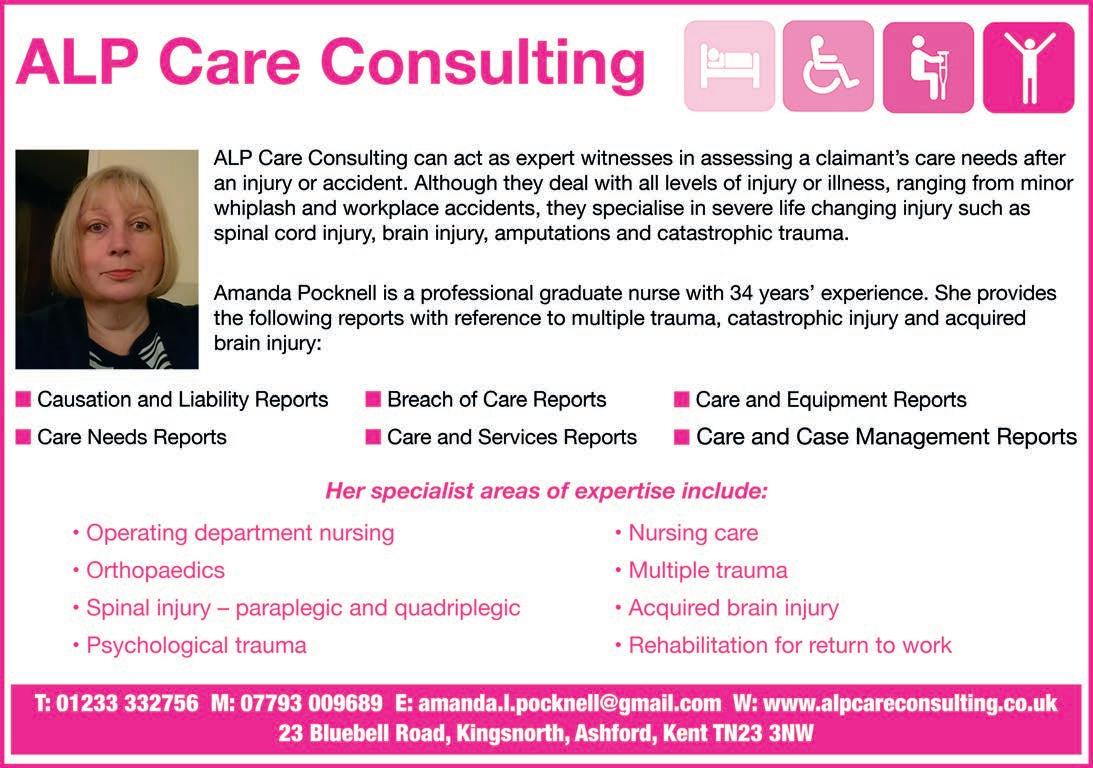
“We look beyond the individual’s actions to understand the role of other
people; the culture, conditions and environment they were working in. This is essential to ensuring our processes and decisions are fair for everyone, and that professionals are supported to deliver the safe, effective and kind care people have the right to expect.” q
‘CORRIDOR

HISTORICALLY, nurses undertook roles that were very much process driven and as a profession would have been under the supervision of medical staff. They would not have undertaken selfdirected roles. Those days are a thing of the past, however, with nurses now in all areas of clinical practice undertaking autonomous roles and qualified to give expert opinion within their scope of expertise. All nurses now qualify with a BSc Degree, with many senior nurses educated at Masters or Doctoral level.
Since its inception in the world of medico-legal report writing, Jane James and Associates (JJ&A) has specialised predominantly in nursing experts and other allied health professionals – but not medical experts. That is not to say that medical expertise is not important; on the contrary, at Jane James and Associates we recognise the vast experience nurses bring to the clinical negligence and personal injury field, whether writing quantum or breach of duty reports.
I have been a nurse for 32 years this year and I started working as a nursing expert witness, writing breach of duty reports with Jane James and Associates, in 2014. During this time I have been instructed by both claimant and defendant solicitors.
For the past two years I have headed up JJ&A’s clinical negligence team of nursing experts, combining both my experience of leading teams of nurses in clinical practice and my leadership skills honed while serving as an officer in the British Army I have also recently completed an MSc in Advanced Clinical Practice.

All the nursing experts at JJ&A are in clinical practice. That ensures that we are all current and working at the ‘coal face’ in our areas of expertise, guaranteeing we are up to date and credible. We support our experts in terms of the day-to-day administration of their cases; but also offer in-house training as well as encouraging our experts to undertake more formal expert witness accreditation, such as through Bond Solon (CUBS) or the Expert Witness Institute (EWI).
My role is to ensure that the breach of duty reports provided by JJ&A’s nursing experts are of the highest quality and are produced on time and with the right level of expertise. We are a small but close-knit team delivering regular updates and one-to-ones, to ensure our experts meet our expectations in terms of quality. That process begins at the first approach from solicitors requesting us to provide a report.
The process of making contact is straightforward. Solicitors approach us via email with a summary of the case and as much information as they can provide. We then choose the most suitable expert and approach them to see if they will accept the instruction. If they are happy we provide an estimate and the expert’s CV. If not instructed, we like to receive feedback to ascertain the reason. For learning purposes, that is incredibly helpful.
In the first instance, as much information as you can provide on the nature of the case and the extent of the documents is essential for us to decide which expert is best placed to assist. As all the experts are working in clinical practice, they are usually juggling at least one other clinical role. In addition, they may have leadership roles, as they are all nurses with a minimum of 10 years post-registration experience working at a senior level.
When you send us an approach, we must know how long the period in question is and approximately how many allegations you are
expecting the expert to answer. Alongside that, once instructed, goodquality paginated and indexed medical records are essential if we are to meet your expectations on cost and time spent preparing the report. That brings us to the screening report. As nursing experts, we realise the importance of those reports early in the litigation process, to establish whether there is even a case to answer. That said, if you use the example of a possible fall in the hospital setting, the expert will still have to review most of the nursing records related to the incident to give you an opinion as to whether the nursing care met a reasonable standard. Solicitors need to carefully consider what they are asking an expert to produce for a fixed fee of £500 plus VAT. Our experts do not work for free but want to produce a good quality report for you and have their time reasonably reimbursed.
Nursing expert work is incredibly rewarding for senior, experienced nurses. It is an opportunity to demonstrate and share their significant expertise and provides an exciting and fulfilling additional role to augment their clinical practice.
Here at JJ&A, from the recruitment of our nursing experts to training and quality assurance, we strive to ensure they are well supported and fit for the role, with enough time to commit to the rigorous responsibility that comes with expert witness work. q


[SEPSIS is a life-threatening reaction to an infection, which can also lead to meningitis – an infection in the membranes surrounding the brain and spinal cord. Sepsis in newborn babies is curable, but sadly there are cases where a failure to act on a baby's clinical signs of infection and administer appropriate treatment results in severe injury or even fatal consequences for the child.
Given the potential for lifelong implications from sepsis, there is guidance in place which clinicians must follow to ensure early and prompt treatment is provided, including screening for infection and commencing antibiotics. If the guidance isn't followed and the symptoms of sepsis are missed, resulting in injury to the child, there can be a case for a clinical negligence claim.
When considering whether clinical negligence played a role in a neonatal sepsis case, it is important to obtain a clear picture of the baby's clinical condition following birth.
Parents are often best placed to provide details of their baby's condition and behaviour following birth. For example, they will often be able to comment on the baby's responsiveness, lethargy,
breathing, ability to maintain temperature, any changes to their colouring and any difficulties with feeding – either from mum or a bottle.
It is also important to consider the baby's gestation, as premature babies are at an increased risk of infection. Another factor is whether there was any meconium present (baby's first poo), as that also increases their infection risk. A review of the records and speaking to the parents will indicate whether it should have been clear that a baby was showing clinical signs of infection following their birth.
If it can be shown that no action was taken either by the midwives or the treating doctors, despite clear evidence that the baby was at risk of infection, then that is an indicator that something has gone wrong. If the baby has been harmed, then there would be cause to investigate further and find answers, and potentially seek financial compensation for the family.
The most common medical mistakes leading to cases of neonatal sepsis relate to a failure to act on a baby's clinical signs of infection. Failure to arrange for a review by a specialist or senior doctor could represent
grounds for a negligence claim.
That is particularly important for babies who are premature. Midwives sometimes wrongly assume that the cause of their poor feeding and temperature issues relate to their prematurity and change in environment – meaning they fail to consider that the cause may be due to infection. The guidance is clear, and where a baby is demonstrating risk factors for infection, there should be a review by a doctor, leading to screening for infection and the prescription of antibiotics where necessary.
A lack of detailed record keeping is another common issue. That could include a failure to complete observation charts and sepsis charts, in addition to poor communication between the postnatal ward and the speciality doctors. That can result in a baby who is showing risk factors for infection not being escalated for senior review until their condition deteriorates, by which time it can be too late for successful treatment.
From a legal perspective, it is key to gather as much evidence as possible to build a complete picture of the scenario. The clear guidance that the NHS has published has created far greater transparency when finding out whether there has been medical negligence. q
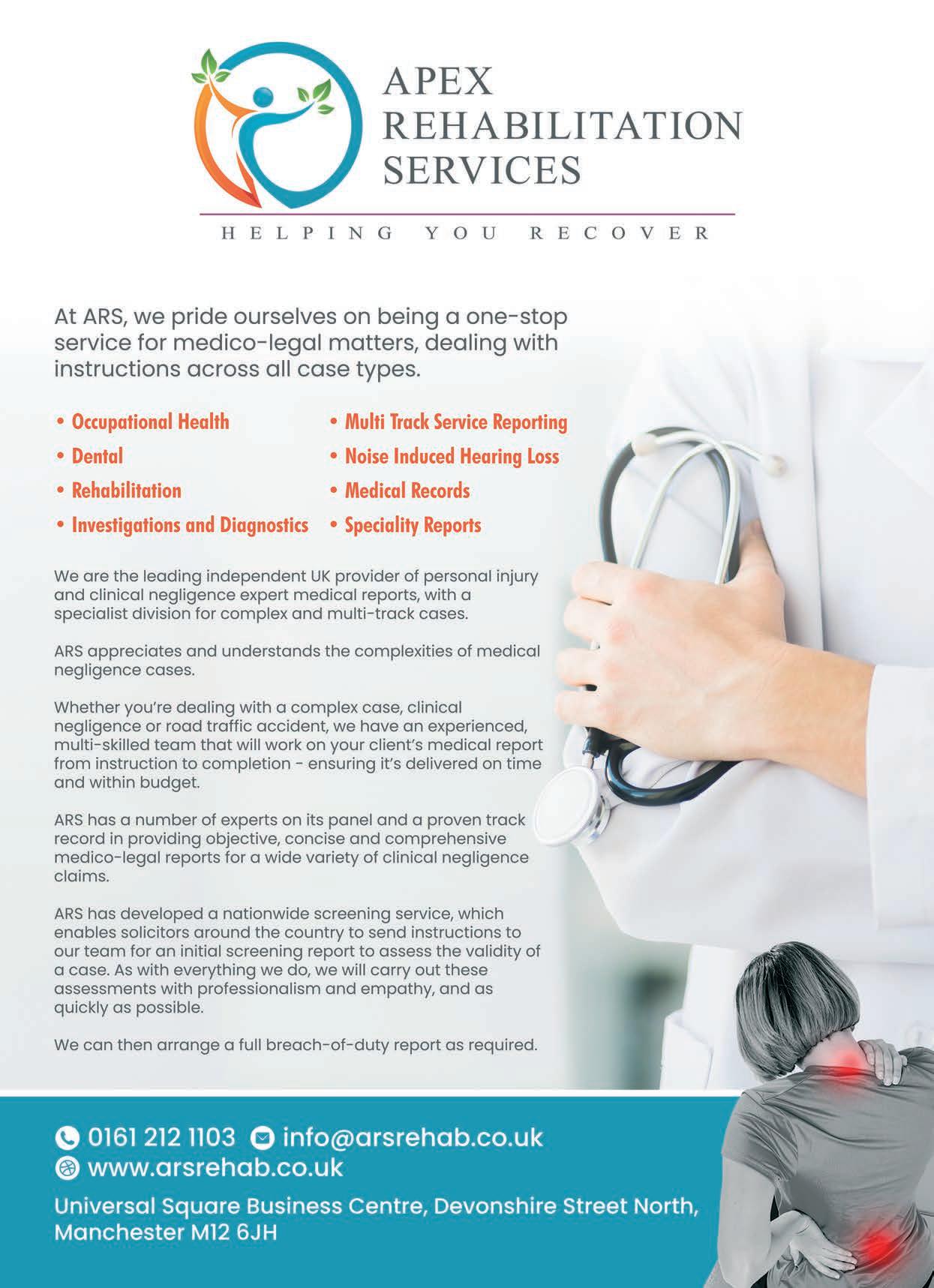
In this latest article in his series on diabetes issues
Dr Bobby Huda – consultant in diabetes and metabolism at St Bartholomew’s and Royal London Hospitals – discusses two areas that are topical currently: diabetes and pregnancy, and diabetes and obesity.

Women with high blood glucose (hyperglycaemia) in pregnancy are essentially divided into two categories: firstly, there are women with preexisting diabetes – that is, prior to pregnancy – and secondly women who only develop hyperglycaemia in pregnancy: gestational diabetes.
Women with diabetes prior to pregnancy need to have good blood sugar control prior to pregnancy, and particularly around the time of conception. The first trimester – the first 12 weeks of pregnancy – is a crucial time for the baby’s development. All the major organs are developing at that time. High blood glucose at that time can significantly increase the chances of a major congenital anomaly (brain, spinal cord or heart) from 3-4% up to 10% prevalence. Good preconception care, which usually takes place in primary care, is important and often inadequate.
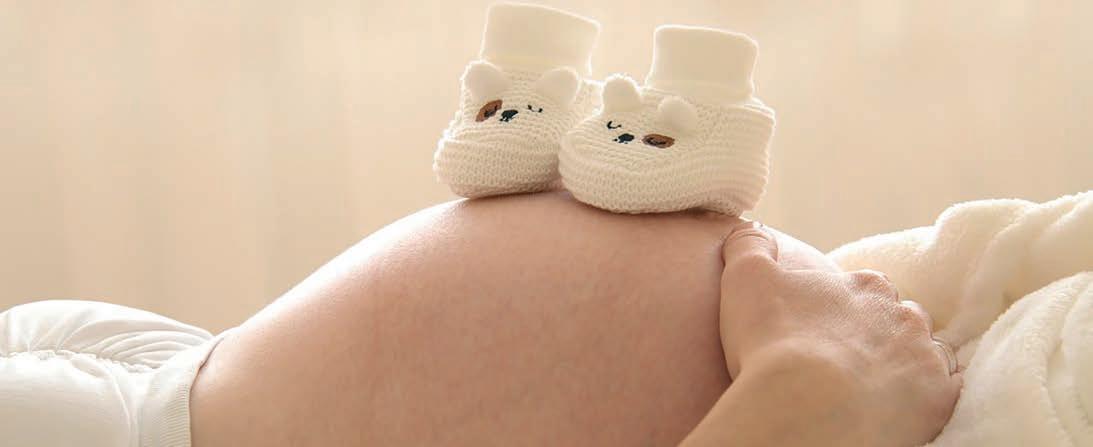
This is where women only develop hyperglycaemia in pregnancy, and it generally resolves after pregnancy. It is due to resistance to the mother’s insulin that develops in the second and third trimester. Both forms of diabetes in pregnancy can lead to large babies for their gestational age, increased caesarean sections or instrumental delivery, low blood glucose in the baby and increased neonatal special care admissions. Stillbirth can occur in pre-existing diabetes if glucose control is poor. Stillbirth is less common in GDM, but can still occur, particularly if glucose control is poor or if GDM is missed.
A large trial (DIRECT) recently showed that people who had had diabetes for up to four years could effectively put their diabetes into remission – ie stop all medication – by an aggressive low calorie diet of
600-800 calories a day for up to three months. Up to a third were still in remission two years after the intervention and others needed less medication. There is a national programme offering that regime for people with diabetes, and also a national diabetes prevention programme.
Effective treatments for obesity, with or without diabetes, have been elusive. Many medications over the past 20 years have been withdrawn after marketing due to unexpected side effects, such as effects on cardiovascular outcomes or increased suicide. For many years the only medical treatment for obesity was Orlistat: a modestly effective medication which can have unpleasant side effects.
The only other effective option was bariatric surgery, which could offer between 20-50% loss of body weight with reduced mortality. Surgery, however, is expensive, with long waiting lists; and post-operative side effects are common.
The glucagon-like receptor 1 (GLP-1) agonists are a class of drug that have been used for many years in diabetes, which help with blood glucose control and weight loss. More recently, those medications have been licensed for people without diabetes – eg Saxenda – and offlicence use of the newer medications such as Ozempic (Wygovy in the US) have been very effective. People living with obesity can lose 1520% of their body weight with those medications: results that have not usually been achieved previously outside of surgical treatments.
Those drugs have truly changed the landscape for effective medical treatment for obesity and more similar medications are coming to market. Currently, due to the success of those medications, there is a national shortage; but this should improve over time. q
• To contact Dr Huda call 020 3594 6058 / 07919 924925, email bobby.huda1@nhs.net, alternatively visit londondiabetes.com or clevelandcliniclondon.uk


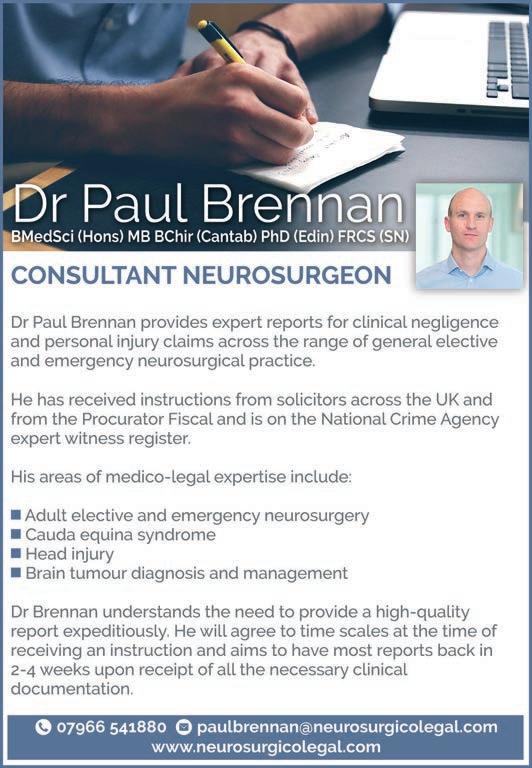
[RESEARCHERS HAVE IDENTIFIED markers from eye scans that indicate the presence of Parkinson’s disease in patients on average seven years before clinical presentation. It is the first time anyone has shown such findings several years before diagnosis. The results were made possible by the largest study to date on retinal imaging in Parkinson’s disease.
The study, published in Neurology, the journal of the American Academy of Neurology, identified markers of Parkinson’s in eye scans with the help of artificial intelligence (AI). Its
analysis of the AlzEye dataset was repeated using the wider UK Biobank database (healthy volunteers), which replicated the discoveries.
The use of these two large, powerful datasets has enabled the team to identify the subtle markers, even though Parkinson’s disease has a relatively low prevalence (0.1-0.2% of the population). Generation of the AlzEye dataset was enabled by INSIGHT, the world’s largest database of retinal images and associated clinical data.
The use of data from eye scans has previously revealed signs of other

[GIRFT (Getting It Right First Time) data, which allows neurosurgery clinicians and managers in specialist providers to monitor activity for all patients in England, is now live on the Model Health System of the NHS.
More than 70 metrics for elective and non-elective care are available, covering procedures such as subarachnoid haemorrhage, brain tumours, pituitary surgery and cranioplasty, as well as data for outpatient appointments and follow-ups.
The new specialty compartment enables clinicians in the NHS to view up-to-date, benchmarked data on their activity to support the efficient use of NHS services in terms of length of stay, on-day admission and enhanced recovery.
Nationally the metrics also allow for monitoring on a range of important initiatives, such as the National Confidential Enquiry into Patient Outcome and Death report into subarachnoid haemorrhage and promptness of treatment, the Cumberlege report into implant monitoring, and the long-standing drive to improve outcomes in malignant glioma.
The metrics are drawn from two rounds of GIRFT deep dive visits to units in England – one prior to publication of the GIRFT national report for cranial neurosurgery in 2018, and one round of progress visits.
Nick Phillips, GIRFT’s clinical lead for cranial neurosurgery, commented: “I am delighted to see the launch of these really important metrics for our specialty in one place and feel they will be of great interest to all clinicians and associates working in neurosciences.” q

neurodegenerative conditions, including Alzheimer’s, multiple sclerosis and, most recently, schizophrenia, in an emerging and exciting field of research referred to as ‘oculomics’.
High-resolution images of the retina are now a routine part of eye care – in particular, a type of 3D scan known as ‘optical coherence tomography’ (OCT), which is widely used in eye clinics and high-street opticians. In less than a minute, an OCT scan produces a cross-section of the retina (the back of the eye) in incredible detail – down to a thousandth of a millimetre. q
[THE National Audit of Dementia has published its latest report, which presents the results of the fifth round of audit data. For the first time, the audit has been undertaken prospectively – which will enable hospitals to take earlier action to improve patient care and experience; however, that has demonstrated that many hospitals still have no ready mechanism to identify people with dementia once admitted.

One notable improvement is delirium screening: dementia is the biggest risk factor for developing delirium. Screening for delirium has improved from 58% in round four to 87% in the current audit. In addition, a high number of pain assessments are also being undertaken within 24 hours of admission (85%). Although encouraging, the report highlights that 61% of these assessments were based only on a question about pain – an approach that can be unreliable in patients with dementia.
While the report acknowledges that health services have experienced an extraordinarily difficult and challenging time and that, despite that, there are areas where progress has been made, it does shine a light on a need for more training. It states that it is encouraging that many staff have received Tier 1 dementia training (median 86%), but suggests that a much higher proportion of ward-based patient-facing staff should have received Tier 2 dementia training (median 45%).
The report also finds that only 58% of hospitals are able to report the proportion of staff who have received training. As such, it recommends that any member of staff involved in the direct care of people with dementia should have Tier 2 training, and that training should be recorded to provide assurance to the public and regulators. q
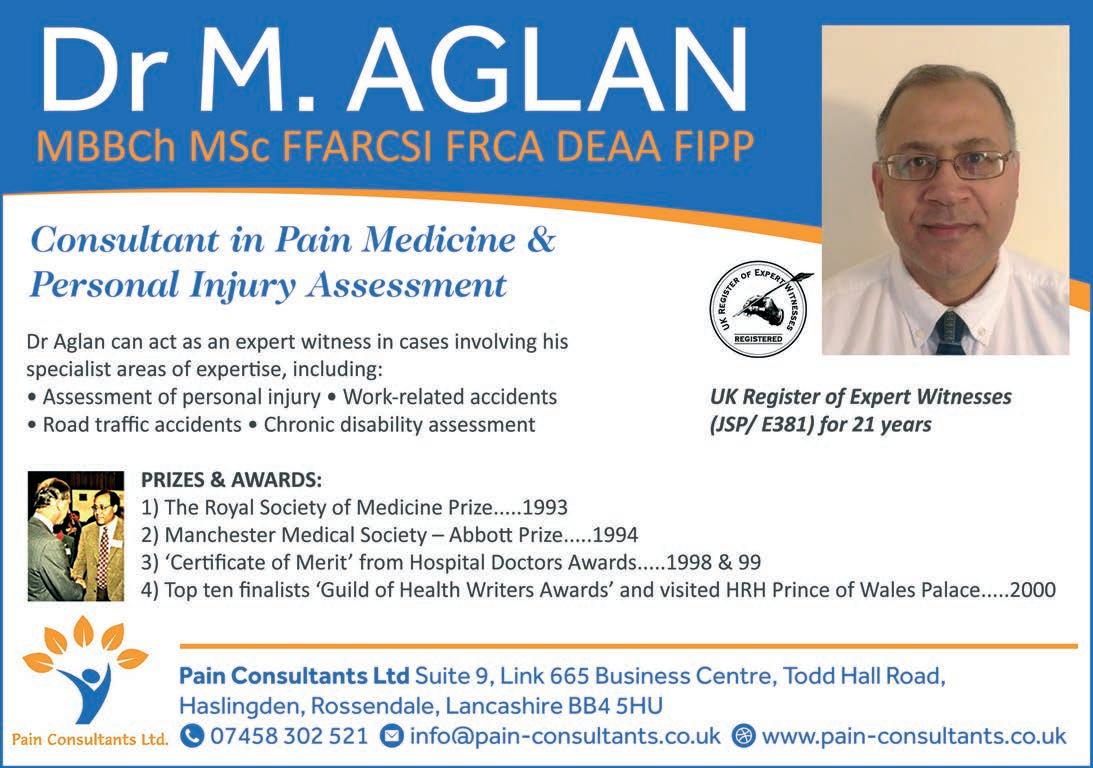
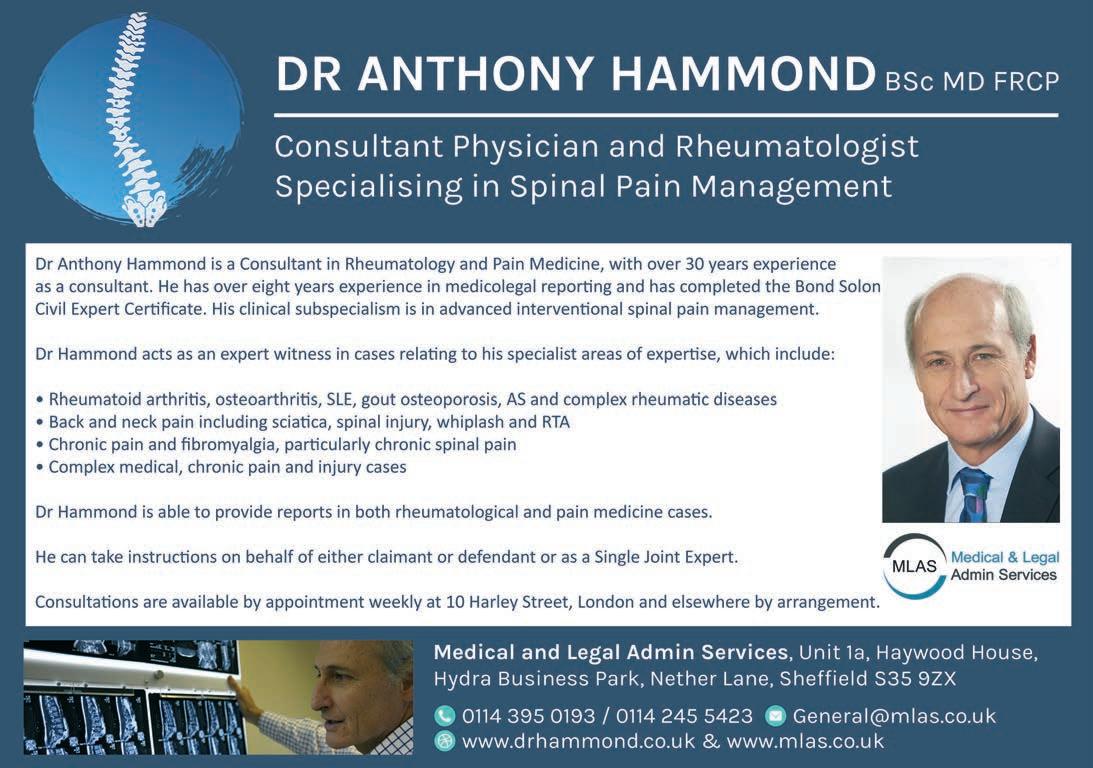
[ A PARTNERSHIP BETWEEN Versus Arthritis and UK Research and Innovation, which will bring together experts from many different areas of pain research, is looking to transform knowledge of the underlying causes of chronic pain.
Professor David Walsh from the University of Nottingham has been appointed as the Director of the Advanced Pain Discovery Platform (APDP). He brings a wealth of experience in pain research and a passion for putting patients at the centre of research.
Chronic pain is common and a massive burden, both to individuals and to society. People experience pain across different chronic illnesses, ethnic groups, sexes and in all corners of society. Existing treatments can improve people’s quality of life, but only rarely eliminate chronic pain. It is one of the main reasons that people see their GP, can prevent people from earning a living and it makes relationships with family and friends difficult.
The APDP will bring together the UK’s technical, intellectual and personal resources to provide new opportunities for the treatment of pain. The initiative will encourage collaborative partnerships between universities and industry, between researchers and patients, and between policy makers and society.
The APDP will accelerate the development of treatments along the pipeline from novel ideas through to real patient benefit. It will grasp opportunities across different chronic pain conditions, so that people with chronic pain could benefit from treatments first thought of for another illness.
Professor Walsh explained: “Everybody’s pain is different, and people with chronic pain typically experience several different kinds of pain. However, the mechanisms which cause chronic pain are often shared between very different diseases. The time is ripe to bring the UK’s expertise together to find solutions that hit pain where it hurts, and I’m committed to making that happen through the APDP.
“As APDP Programme Director, I’ll encourage big ideas that can ultimately transform the lives of people already living with pain, and prevent more people from experiencing a life of pain in the future. I’ll champion pain research and build relationships between key leaders, in the UK and internationally, from across clinical and research organisations, government, industry, charities and the public. And importantly, I’ll enable people living with chronic pain to become an active part of its solution.” q

[IN APRIL the Royal College of Physicians (RCP) published new guidelines aiming to support clinicians in the diagnosis of fibromyalgia syndrome (FMS). FMS, although common, is often challenging to diagnose; as a result, patients may receive the wrong diagnosis and only receive the correct one after years of delay. The new guidance aims to correct that, by supporting patientfacing clinicians to consider a diagnosis of FMS.
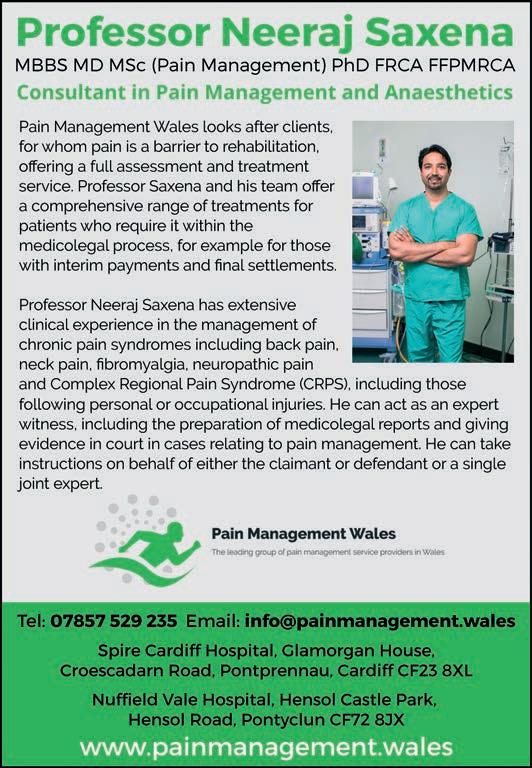
Symptoms of FMS vary, are commonly multiple and can fluctuate. It can often be difficult for patients to articulate an array of symptoms, and for both patients and healthcare professionals to fully make sense of the complexities of the condition. Some of the core symptoms include widespread pain, hypersensitivities to pressure, touch, temperature, noise and light, fatigue and poor sleep, as well as cognitive symptoms relating to short-term memory or difficulty finding a word – often called ‘fibro fog’.
Helen Robinson describes her symptoms as debilitating: “My experience of fibromyalgia is when I wake up in the morning, it doesn’t matter whether I’ve had an hour’s sleep or six hours sleep, I feel totally, totally exhausted. On flare-up days I struggle to get out of bed. I struggle to get washed or dressed and feel as if every ounce of energy has been drained out of me.”
Tracey Nicholson, whose symptoms began when she was just 16, went through numerous referrals and visits to her GP before eventually receiving a diagnosis of fibromyalgia syndrome.
She said: “I just felt that going to the doctor’s all the time I was becoming a nuisance. I felt like the doctor thought I was making it up because none of the tests were coming back positive.”
Marcia Glanvill has experienced burning skin, pain and cystitis among her symptoms. She said: “I think the hardest thing is when people don’t believe you: not just your clinicians, but your family and friends.”
Dr Andreas Goebel, a specialist in pain medicine who led the work on the new guidelines, said: “Understanding about symptom-based disorders without tissue destruction is still in its beginnings, and fibromyalgia syndrome is among the most common of these conditions. I anticipate that this new guidance can empower healthcare professionals to make the FMS diagnosis confidently and accurately.”
Dr Chris Barker, a GP and pain specialist who co-chaired the Guideline Development Group, said: “Anyone who is close to fibromyalgia knows how hard it can be to live with. My hope is that these guidelines can help reduce the suffering endured particularly because of misunderstanding and difficulty recognising it.”
Dr Cathryn Edwards, RCP registrar, said: “We’re delighted to have published these guidelines, which aim to increase understanding of fibromyalgia and support the diagnosis of the condition. We very much hope that they will help to raise awareness and lead to improved lives and outcomes for patients.” q

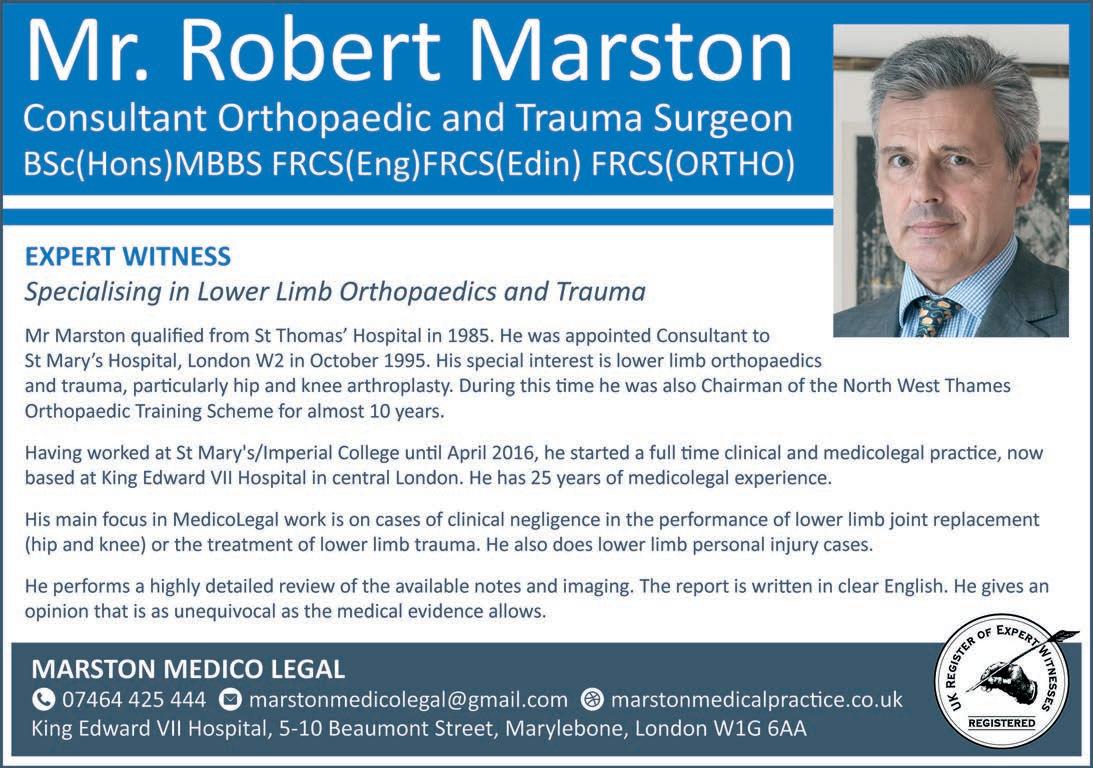

[ A NEW RESEARCH STUDY has shown that shoulder replacement patients do better when their surgeon averages over 10 procedures a year. Patients treated by those surgeons have a lower risk of re-operation and serious complications, and a shorter hospital stay than those treated by surgeons who do fewer operations. That was the result of a study funded and supported by the National Institute of Health and Care Research (NIHR) and published in The British Medical Journal
Researchers at the University of Oxford analysed 39,281 elective shoulder replacements performed by 638 consultant surgeons at 416 public and private hospitals from 2012 to 2020. The data was taken from the National Joint Registry and Hospital Episode Statistics in England.
The findings build on similar evidence for hip and knee replacements and should help guide future resource planning in the area, the researchers say.
Shoulder replacements are becoming increasingly common globally, particularly in high-income countries as populations continue to age. In the UK alone, more than 8,000 shoulder replacements are carried out each year.
Previous studies of hip and knee replacement surgery show that patients treated by ‘high volume’ surgeons experience better outcomes than patients of lower volume surgeons. That has prompted some providers to introduce minimum volume thresholds for surgeons to improve patient outcomes, but evidence for other types of joint replacement surgery is more limited.
Patients treated by higher volume surgeons showed a 53% lower risk of re-operation, a reduction in serious adverse events of 40% at 30 days and 37% at 90 days, and a 62% reduction in the risk of a prolonged hospital stay, although no minimum case volume threshold was identified for those outcomes.
Annual variations in case volume did not affect patient outcomes, suggesting that a surgeon’s average annual volume of procedures over the course of their career is more important for better patient outcomes than variation in annual procedure volumes.
They are observational findings and the researchers note that their models may be a simplification of real life practice – and they can’t rule out the possibility that other unmeasured factors may have affected their results. But they say the data used represent all the main types of shoulder replacement procedures, patients of different age, ethnicity and socioeconomic groups, providing a complete picture of shoulder replacement activity across a national healthcare system.
Epaminondas Markos Valsamis, NIHR Doctoral Research Fellow and Specialty Registrar in Trauma and Orthopaedics at the Oxford Deanery, said: “Improving outcomes and reducing complications after joint replacement surgery is of clear benefit to patients and their families.

“This study offers evidence for local hospitals and national healthcare services that informs workforce and resource planning to ensure the best outcomes for patients undergoing shoulder replacement surgery.”
However, they say the results ‘also provide timely evidence for healthcare systems that are overburdened, under-resourced and in need of recovery planning post pandemic’.
In a linked editorial, researchers say this study is a useful addition to current knowledge of the association between surgeon volume and patient outcomes, but argue that the association between surgeons and patient outcomes is a complex one that can be difficult to evaluate scientifically. q


WEIGHT AND BODY MASS INDEX (BMI) policies introduced by NHS commissioning groups in England are worsening health inequalities, according to a new study published in the journal BMC Medicine . According to the study, which analysed nearly 490,000 hip surgeries, many thousands of patients are directly affected by those policies.
Rules implemented by NHS clinical commissioning groups (CCGs) across England to change the access to hip and knee replacement surgery for patients who are overweight or obese have been in effect for over 10 years. However, regional differences in this BMI mandate means some areas have no such policy, while in other areas patients are denied access to a hip replacement operation until their BMI is below a certain threshold or until they have waited extra time.
Researchers from the University of Bristol sought to assess the impact of those BMI policies on access to hip replacement surgery in England, and to see if there was any evidence of worsening health inequalities. The study was funded by the National Institute for Health and Care Research (NIHR).
The team analysed the rates of hip replacement surgery of 480,364 patients between January and December 2019 using data from the National Joint Registry. They then compared regions with and without a BMI policy.
Their results found policies to change access to hip replacement based on a patient’s weight/BMI were linked with a decrease in surgery rates, particularly for those living in deprived areas, whereas rates rose in localities with no policy. Regions with strict BMI threshold policies were associated with the sharpest fall in rates –trend change of -1.39 operations per 100,000 population aged over 40 per quarter-year.
Some BMI policies add extra waiting time before surgery for hip replacement patients with a high BMI. The professional support available to help patients reduce their weight in that time is very variable. There was an association with worsening symptom scores and worsening obesity with the introduction of these extra waiting time rules, showing the policies may in fact be counterproductive.
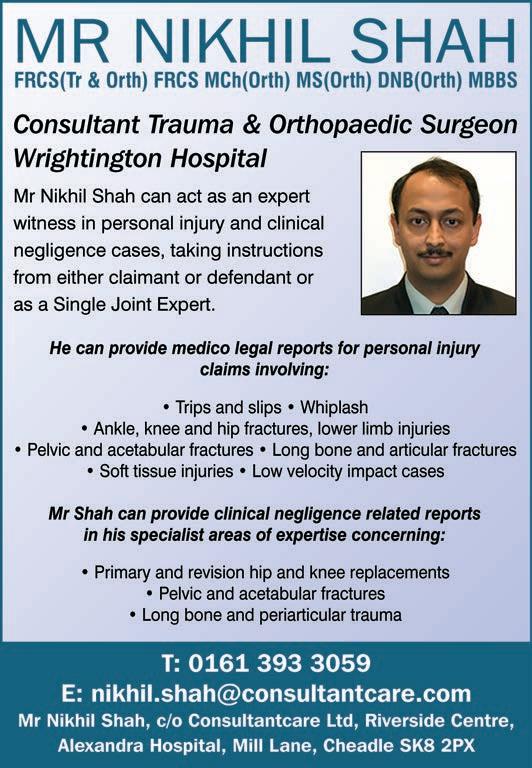 Dr Joanna McLaughlin, NIHR Doctoral Research Fellow in the
Dr Joanna McLaughlin, NIHR Doctoral Research Fellow in the
Bristol Medical School and lead author of the study, said: “NHS policy on whether people can immediately access referral for hip replacement surgery if they are overweight or obese varies depending on where you live in England.

“NICE guidance on arthritis was updated in October 2022, and it clearly states that BMI should not be used to exclude people from referral to surgery, but restrictive policies are still in use in some regions.
“Both this current study, and our study on knee replacements published last June, show these policies have concerning associations with a sharp drop in the rate of joint replacements, worsening symptom scores and worsening health inequalities.”
The research team urge commissioners and policy decisionmakers to reconsider restrictive policies that affect access to elective surgery as a matter of urgency. The researchers also suggest that the recent formation of Integrated Care Systems from existing CCG groups is an important opportunity for positive changes to policy position and there are encouraging signs that some regions are already taking these policy change steps. q


As an orthopaedic consultant and expert witness, Professor Paul Lee has witnessed first-hand the transformative power of hip replacement surgery. While the procedure can significantly improve quality of life, complications such as limping gait, Trendelenburg gait and dislocation can occur – leading to intricate legal issues. In this article he unpacks the complex relationship between medical negligence, breach of duty, and causation in hip replacement surgery.
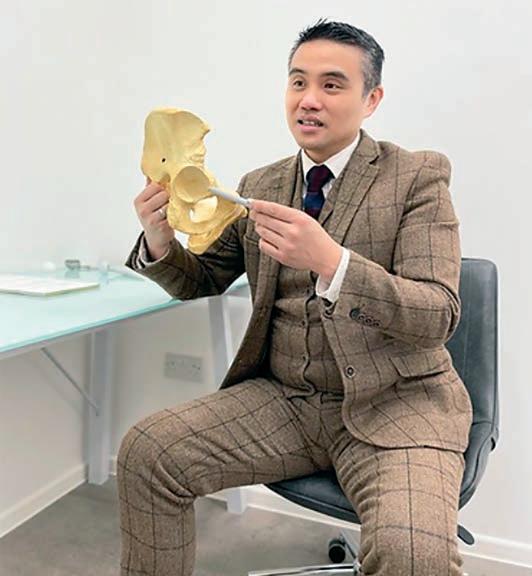
Hip arthroplasty, or hip replacement, involves substituting the damaged hip joint with a prosthetic implant. That intricate procedure usually enhances mobility and alleviates pain; however, complications may arise, stemming from surgical decisions like implant selection and surgical approach.
Trendelenburg gait refers to an abnormal walking pattern, wherein the hip drops on the leg's opposite side. Contrary to common belief, the issue often stems from abductor repair failure, not simply nerve damage. If a surgeon fails to investigate or repair abductors properly, it may constitute a breach of duty. That failure could be seen as negligence, especially if the patient was not informed of potential risks.
Selecting an implant with the wrong offset can lead to a reduced lever arm with the abductors, causing muscle weakness and poor gait. That can result in limping or even dislocation. Failure to use the correct implant can establish causation, making the surgeon's actions or lack thereof directly responsible for the patient's suffering. That, too, may be considered a breach of duty if the surgeon did not adhere to standard practices.
Dislocation may also occur if the surgeon does not select the correct size head for the hip, or places the socket incorrectly. That could result in significant distress and longterm issues for the patient. If it is proven that the surgeon's decision led to those
problems, it may provide grounds for a claim of medical negligence and breach of duty.
As an expert witness in such matters, I have examined many cases where the intricate nature of hip replacement surgeries lead to legal disputes. In some instances the surgeon may not have followed the correct procedures or used adequate care in implant selection. In other cases, unforeseen complications may arise that do not necessarily point to negligence.
Careful analysis of the surgical techniques, patient history and postoperative care is essential to determine if there was a breach of duty leading to causation.
The ethical considerations in hip replacement surgery are significant. Surgeons must weigh various factors, such as the patient's overall health, the type and size of the implant and the surgical approach. A failure to make correct decisions can lead to complications, patient suffering and legal liability.
The legal challenges are equally complex. Determining causation and breach of duty requires an in-depth understanding of both medical practice and legal principles. Expert
witnesses play a crucial role in shedding light on those complexities, helping to ensure justice and accountability.
In conclusion, hip replacement surgery –though life-enhancing – can present complex complications. Issues like Trendelenburg gait from abductor repair failure, limping and dislocation due to incorrect implant offset and from improper head size or socket placement are more than mere medical problems. They illustrate the intricate and often challenging interplay between medical practice and legal principles.
Through careful examination, collaboration between medical professionals and legal experts and an unwavering commitment to patient care and justice, such issues can be appropriately addressed. That will not only ensure that those who suffer complications receive proper redress, but also promote continual improvement in medical practice.
By exploring these issues from my perspective as both an orthopaedic consultant and expert witness, I hope to offer a more nuanced understanding of hip replacement surgery – tying legal principles directly to specific medical practices and outcomes. The responsibility is indeed joint – encompassing medical, legal and ethical realms, and requiring a collaborative approach to meet the demands of modern healthcare. q
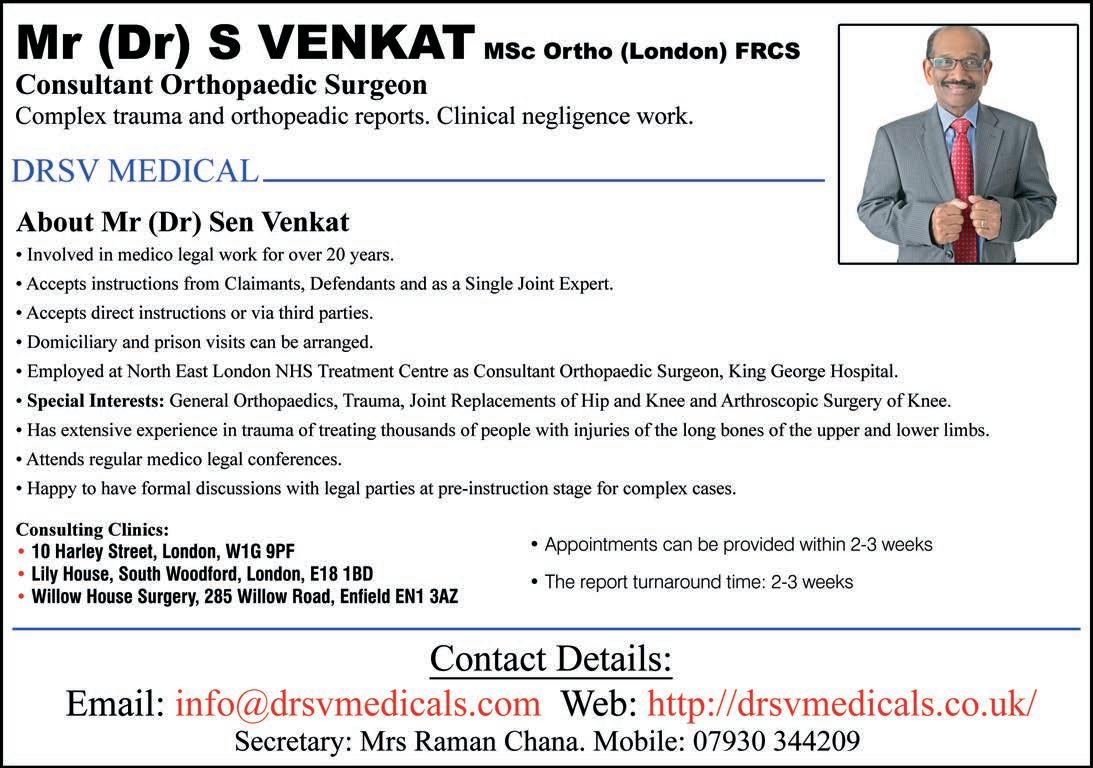

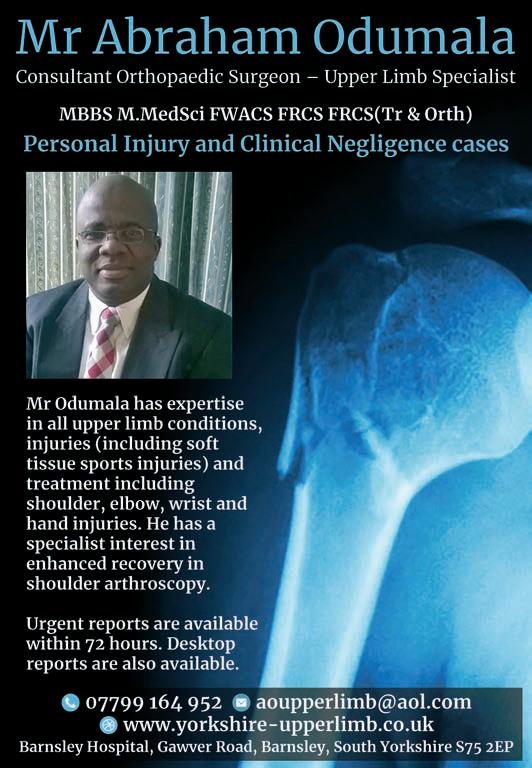
[ THE Royal National Orthopaedic Hospital (RNOH) –which has bases in London and Stanmore in Middlesex – has become one of only a dozen hospitals worldwide to receive designation as a Centre of Excellence for full endoscopic spine surgery.

The equipment for the complex surgery is made by German manufacturer RIWOspine GmbH – which has a subsidiary RIWOspine UK based in London – and it enables keyhole surgery for procedures previously done in an open fashion. The keyhole procedures enable the patient to go home the same day, with less scaring and quicker rehabilitation to normal life.
Mr David Baxter, consultant spinal surgeon at the RNOH, commented: “At the RNOH we are excited to be designated as a Centre of Excellence in fully-endoscopic spinal surgery. Using these techniques alongside intra-operative navigation, we treat a wide range of spinal conditions with minimal tissue damage. This allows most patients to go home on the same day as their surgery, reduces their recovery time and postoperative pain.”
Professor Paul Fish, CEO of RNOH, said: “I’m proud to have RNOH recognised as a centre of excellence. We undertake amazing work here and treat spinal conditions through a variety of methods, depending on patient needs. We’re always looking for ways to improve patient outcomes. Having in place this procedure and skilled surgeons which allows us to treat patients through less evasive procedures and get them home more quickly is fantastic. We look forward to sharing our surgical expertise with others in the field.”
The RNOH is one of a small number of specialist orthopaedic hospitals in the NHS. The Royal Orthopaedic Hospital (ROH) in Birmingham has also begun to offer day case arthroplasty surgery on both hip and knees. It forms part of the hospital’s JointCare pathway for all hip and knee replacement patients and is based on the ‘wellness’ model.
The wellness model concept focuses more on what patients can do, rather than what they can’t. It emphasises early mobilisation and group therapy sessions and is delivered in an environment which reinforces wellness, movement and recovery. Expectations are consistent along the entire pathway, leading to happier, more engaged patients; and by developing a robust patient and family education system, patients are more likely to quickly regain their independence.
Patients are encouraged and empowered to play an active part in their own preparation and recovery, working in partnership with clinicians.
Mr Akash Sharma, consultant knee surgeon and day case clinical lead, said: “This pathway is all about a smooth journey for the patient while they’re here and enhanced recovery, which allows patients to feel happy and confident to go home. Increased productivity is a great secondary benefit, which is of high importance for the NHS and has become an even higher priority following the COVID-19 pandemic.
“We discuss the day case option with patients in detail during their outpatient clinic appointment, and work with them to make sure it’s the best option for them and their recovery.”
The first day case hip surgery was carried out by Mr Shakir Hussain on Colin. Mr Hussain commented: “It’s proven that early mobilisation after surgery helps patients recover quicker. It was a privilege doing the first JointCare day case hip surgery at the ROH, I’m so glad to see
Colin is on his feet and getting out and about, and is back at work.” Patients are provided with a JointCare handbook and have access to an app to help them with their recovery. Members of the Royal Orthopaedic Community Service team visit patients at home, and outpatient physiotherapy appointments will also provide support after their operation. q
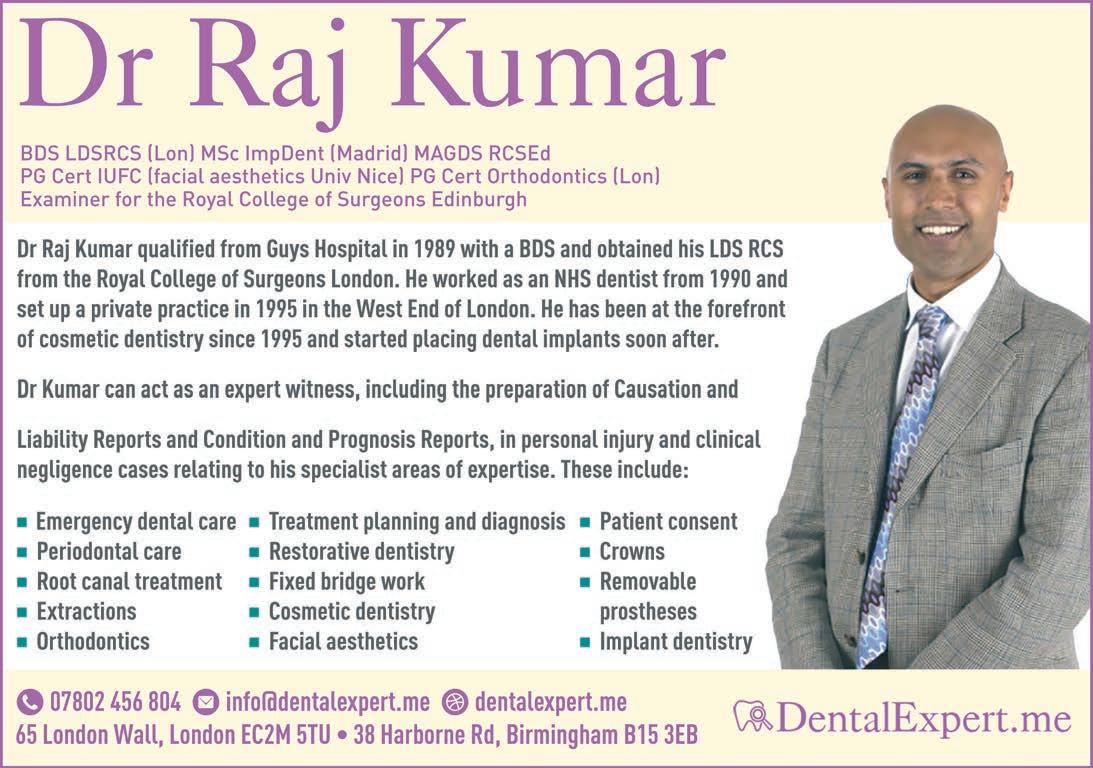

[ THE BRITISH DENTAL ASSOCIATION (BDA) has reacted negatively to the NHS Dental Statistics 2022/23 , published on 23 August, stressing that the figures show there is no prospect of NHS dentistry bouncing back to pre-COVID levels without radical and urgent change.
The annual report brings together information on NHS dental activity in England for the 12-month period to 31 March – including clinical treatments, orthodontic activity, patient eligibility and charges, and dental workforce – and information on the number of patients seen by an NHS dentist up to 30 June. Data is also provided for the previous four financial years for comparison.
The statistics show that the service is still struggling to return to pre-pandemic norms, with the 32.5 million courses of NHS treatment delivered sitting at just 82% of the 39.7 million provided in 2018/19.
The BDA has warned that limited gains in the past year will not take the edge off an ever-growing backlog, as patients present with higher levels of need: the result of on-going access problems.
Just 18.1 million adults in England were seen for NHS dental treatment in the 24 months up to June, 17.5% lower than the 22 million seen in the 24 months up to June 2019. Just 6.4 million children were seen in the 12 months to June 2023, down 9% on figures for 2019.

Reacting to the figures, the BDA said: “Minor tweaks to the discredited NHS contract fuelling the crisis in NHS dentistry were rolled out during this financial year.” It said that the fact the number of dentists delivering NHS care has continued to fall – down 121 on last year – reflects the wholesale inadequacy of those changes. Just 24,151 dentists are recorded as performing NHS work in 2022/23: over 500 down on numbers before lockdown.
The recent Health and Social Care Committee inquiry described the state of the service as ‘totally unacceptable in the 21st century’, setting out fundamental changes centred on reform of what the BDA describes as ‘the dysfunctional contract’. The BDA has urged the government to sign up to the committee’s reform plan, which it has characterised as an ‘instruction manual’ to save NHS dentistry. A recovery plan for the service – pledged by the government in April –has yet to be published.
Dentists’ leaders have long warned that without fundamental reform the exodus of dentists from the service will grow, and the service will not have a future.
The BDA quotes an example from August when a dental practice in Faversham, Kent, received 27,000 calls and saw patients queuing overnight to compete for just 60 NHS places.
Eddie Crouch, chair of the British Dental Association, said: “We’re seeing the limits on the recovery and this government’s ambition. Demoralised dentists are walking away from a broken system, while millions struggle to access the care they need. NHS dentistry can come back from the brink, but only if ministers turn the page.”
The publication of the figures – in particular the number of children being treated – follows a statement from the BDA in July emphasising that ministers have a ‘moral duty to act, as kids face year-long waits for extractions’.
The statement quotes figures from the Liberal Democrats showing that children in some parts of England are now waiting up to 18 months for dental procedures under general anaesthetic: principally tooth extractions. Some paediatric patients are awaiting full mouth clearances – the removal of all baby teeth – where delays can leave young patients struggling to eat, sleep, communicate or learn.
The BDA stressed that the year-long waiting times are nothing new and reflect systemic failures in government policy, the on-going impact of access problems and huge bottlenecks across all parts of NHS dental services.
Eddie Crouch said at the time: "Children are waiting in agony thanks to the indifference successive governments have shown to dentistry. Yearlong backlogs pre-date COVID, because 'prevention' has been little more than a buzzword.
"It's a perfect storm. Dentists are losing the battle to nip these problems in the bud, and struggle for theatre space when extractions are the only option. Ministers have been offered a blueprint for reform. They have a moral responsibility to use it." q
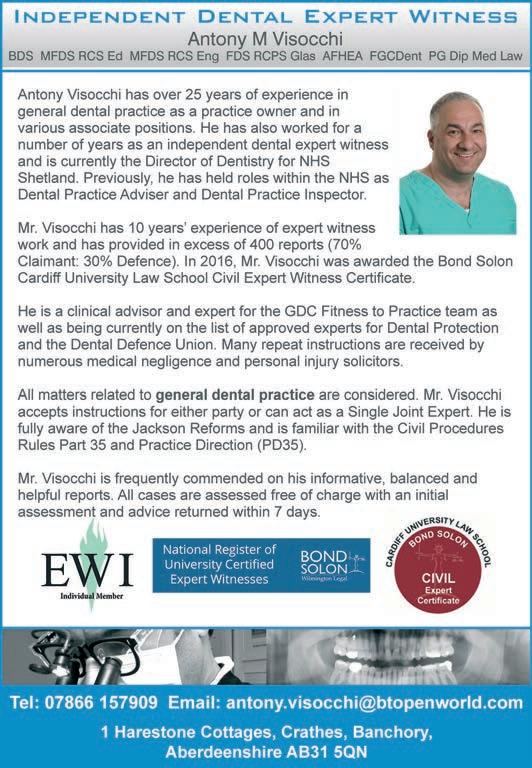

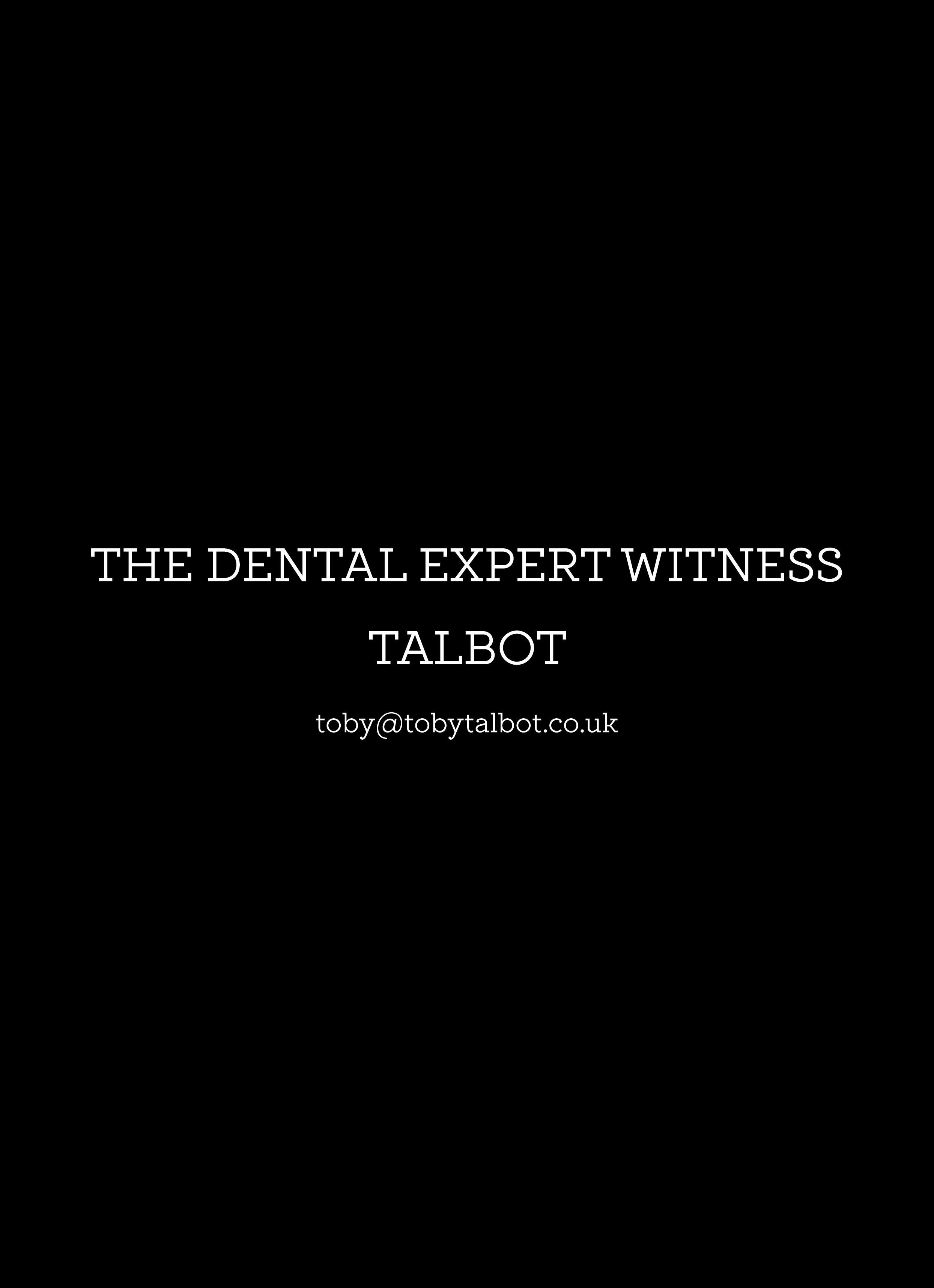
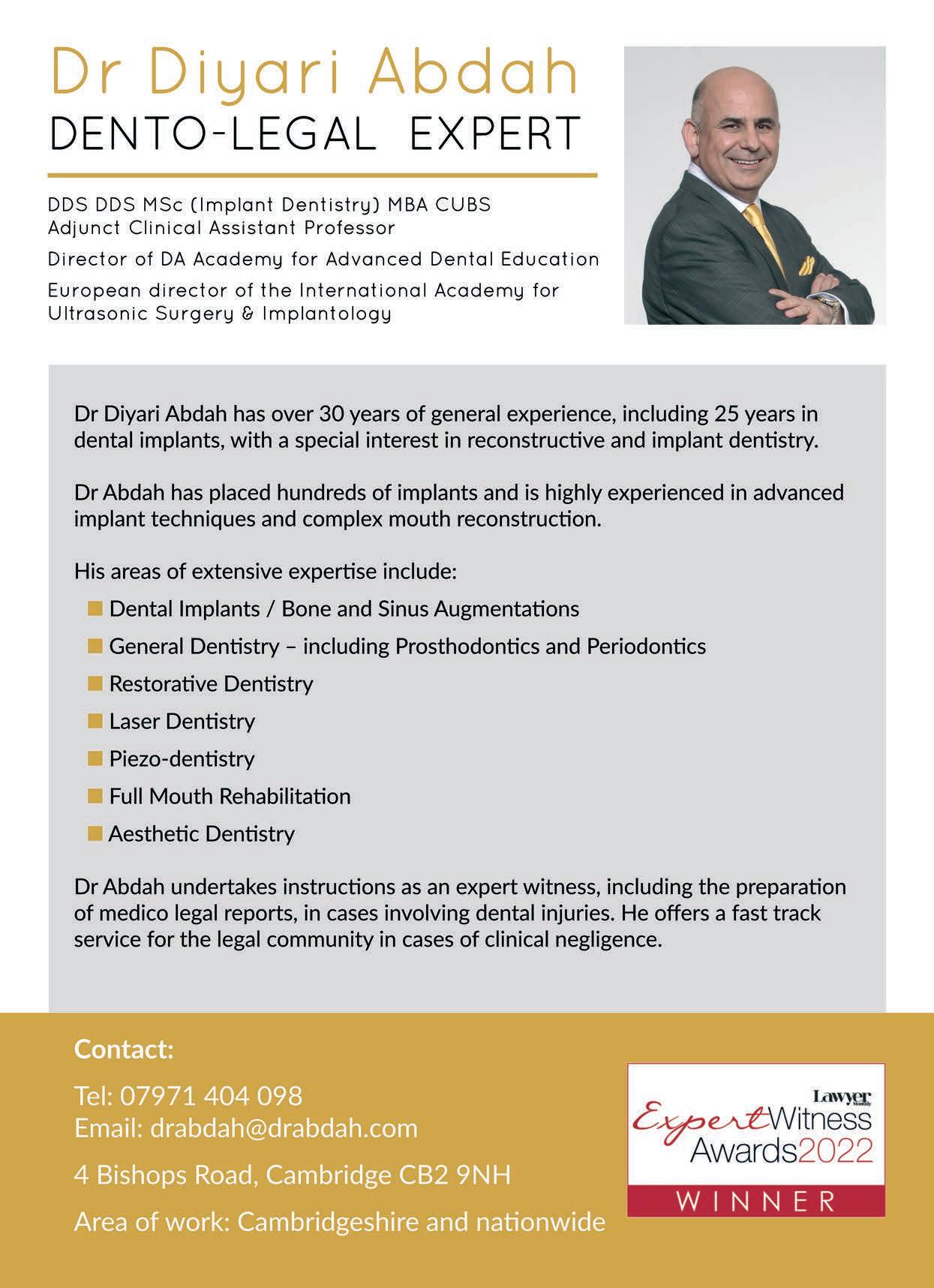
[ON 4 SEPTEMBER the General Dental Council (GDC) initiated a pilot to test a change to the initial stages of its fitness-to-practise process, aimed at improving proportionality and timeliness. Changes are being made to the way investigations are carried out in certain cases, to help resolve issues faster, while continuing to effectively maintain public safety and confidence in the dental profession.
According to the GDC: “We want to ensure matters that do not pose a risk to public safety or confidence are concluded as quickly as possible. The change in process being piloted will help ensure we are fully informed of all relevant facts as early as possible, ensuring that only issues amounting to a fitness to practise concern are fully investigated.”
The pilot will run for six months and will be applied initially to single patient clinical practice cases where the dental professional involved has no previous fitness-to-practise concerns, but may be expanded during the course of the pilot.

The GDC’s current legislative framework effectively requires all matters relating to the clinical practice of a dental professional to be referred from the initial assessment stage to assessment for an investigation. Considerable effort and resources are then allocated to gathering information, whether or not it is required, to reach a decision.
The change being piloted is designed to limit the information gathered to what is specifically required in each case. In those types
of cases that will normally be the patient’s clinical records. The aim is to reduce the time it takes to conclude low-level issues. The process will rely on being able to access records quickly, so the co-operation of dental professionals and their representatives is needed if the pilot is to succeed.
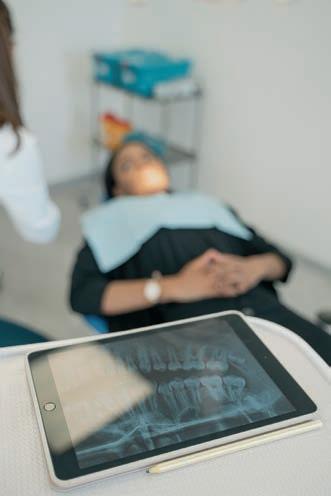
The new pilot reflects the GDC’s desire to make improvements to the fitness-to-practise process where it can, ahead of any potential regulatory reform. It is also hoped that improved timeliness and proportionality will reduce the impact of fitness-to-practise investigations on the health and wellbeing of participants.
John Cullinane, the GDC’s Executive Director, Fitness to Practise, commented: “We know our investigations can be complex and take a long time and that they can have a negative impact on the health and wellbeing of those involved. We also know that lengthy investigations about what can be perceived as minor issues can lead to feelings of mistrust and frustration in the fitnessto-practise process.
“We will continue to try and improve our processes within the current legislation, and we hope that, by working with others, we can make some significant improvements in timeliness without affecting the outcomes of these investigations. Our own analysis tells us that cases that would fall into the scope of this pilot do not normally progress beyond our assessment stage, so we hope this small change will make a big difference.” q
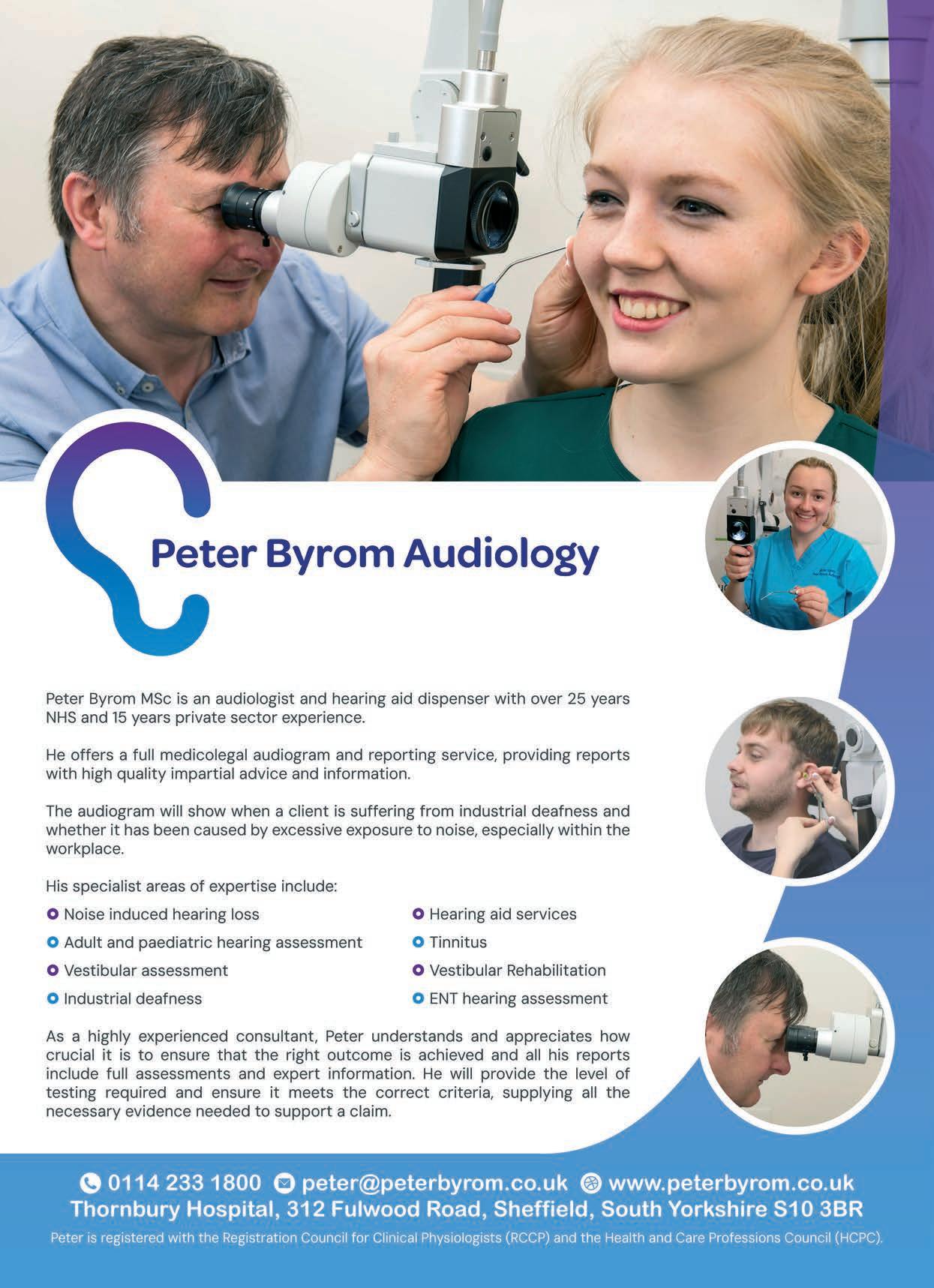

[RUTH DAVIES of law firm Hugh James has reported on the case of a former Royal Marine awarded more than £700,000 for noiseinduced hearing loss (NIHL). Ms Davies, who specialises in military claims, worked with the claimant, James Barry, throughout his claim and instructed Harry Steinberg KC, Robert O’Leary and David Green to represent Mr Barry in the High Court in January.
Mr Barry enlisted in the Royal Marines in 2013 for a 20-year engagement. He began noticing hearing problems towards the end of 2014 after Exercise Black Alligator in Twenty Nine Palms in California. The hearing problems were acknowledged by the MoD in subsequent hearing tests, but they continued to send him on exercises and pre-deployment training, subjecting him to further unprotected noise exposure.
Mr Barry pursued a claim against the Ministry of Defence (MoD) for failing to provide adequate hearing protection and training.
The MoD denied they were at fault throughout the five years of Mr Barry’s claim, but less than four weeks before the case went to court, conceded primary liability. However, they alleged Mr Barry was partly to blame for his hearing loss for failing to use the hearing protection provided.
The MoD invited the court to reduce Mr Barry’s damages by 30% for contributory negligence. They alleged that hearing protection known as ‘yellow foamies’ were always available, so Mr Barry was partly to blame for his hearing loss because he didn’t replace them as soon as they fell out, he didn’t insert them prior to firing his weapon during an attack and he ought to have worn a yellow foam ear plug in his left ear, underneath his personal role radio (PRR).
Mr Barry admitted that he wore yellow foamies in both ears when he could but there were often occasions where it was not practical to do so and often he didn’t have time to insert them prior to an attack. Mr Barry also confirmed that he didn’t wear a yellow foamy in his left ear when using his PRR.
Johnson J heard evidence from Mr Barry, two of his former colleagues and six witnesses on behalf of the MoD. It was generally accepted by the witnesses for both sides that there were often occasions during exercises where they didn’t have time to put hearing protection in place before an attack and they often fell out, but they would have the opportunity to replace them during a re-organisation.
There were a mix of practices from the different Marines to hearing protection while
wearing the PRR, but it was generally accepted that wearing plugs in the left ear made it difficult to hear the radio. Some Marines choose to not use an ear plug at all and others choose to, but ‘half in, half out’.
Johnson J found that wearing the earplugs in this way was ‘unlikely to have offered significant protection’ and that Mr Barry was not given specific instructions on how to wear the ear plugs when wearing his PRR.
He rejected the MoD’s arguments on contributory negligence and accepted that Mr Barry wore the hearing protection that was made available to him when it was practical to do so. He found that the responsibility to provide hearing protection was down to the MoD, and Mr Barry was not at fault in any way.
Johnson J noted “...the problems were well known by the MoD (as demonstrated by the evidence of the witness, and also documentation from 2012) but, lamentably, it appears that nothing was done by the MoD to address the obvious and serious problem.” q
MANY THOUSANDS of claims for NIHL – or Military(M)-NIHL – against the MOD are in train, and earlier this year the High Court ruled that a single claim form can be used to issue 3,450 claims.
Mr Justice Andrew Baker and Lord Justice Dingemans upheld an appeal in Abbott v MoD and said the practice of issuing a single group claim was permissible if the convenience test was met.
Reporting on the decision the Law Society Gazette said: “Master Davison had ruled last summer that the claims for noise-induced hearing loss could not be disposed of in the same proceedings and that a single omnibus claim form was not allowed within the civil procedure rules. He added that using a single form for more than 3,000 claims would put an impossible strain on the court’s digital management system.”
Davison had requested that each of the 3,449 cases be issued with new claim forms and payment of the appropriate fee within six months.
The Gazette report continued: “The court heard this had ‘stark consequences’, with 3,017 people managing to issue individual claim forms but the court office overwhelmed by the volume, resulting in long delays. More than 100 claim forms lodged with the court had still not been issued some three months after Davison’s imposed deadline. Many claimants were entitled to partial remission on fees but were nonetheless charged the full £10,000. Hugh James, representing the claimants, had to bear this extra cost,
estimated at £400,000, which is still to be reimbursed.”
Mr Justice Baker said that Davison had been wrong to think that each claimant needed to issue their own claim form and had ‘misjudged’ the consequent difficulties for the court system.
Baker said: “The question here was not whether the full cohort of 3,000 plus M-NIHL claims encompassed by the omnibus claim form, as amended, could be tried at a single trial hearing; it was whether that cohort of claims had sufficient commonality of significant issues of fact that it would be useful or helpful, in the interests of justice, that any determination of those issues in proceedings brought by any one of the claimants against the MoD in respect of their M-NIHL injury claim would be binding also as between the MoD and any other of the claimants in respect of their such claim.
“I consider therefore that in testing the matter by the impossibility of a single trial determining all the claimants’ M-NIHL claims in one go, and by setting the commonality bar too high, Master Davison misdirected himself as to the meaning of CPR 7.3.”
Following the court’s decision, Simon Ellis, partner and head of the military department at solicitors Hugh James, said: “Our specialist military lawyers are representing thousands of current and former military personnel who have suffered hearing loss because of unprotected exposure to excessive levels of noise during service. We hope this decision represents a further step towards obtaining the redress they deserve.” q
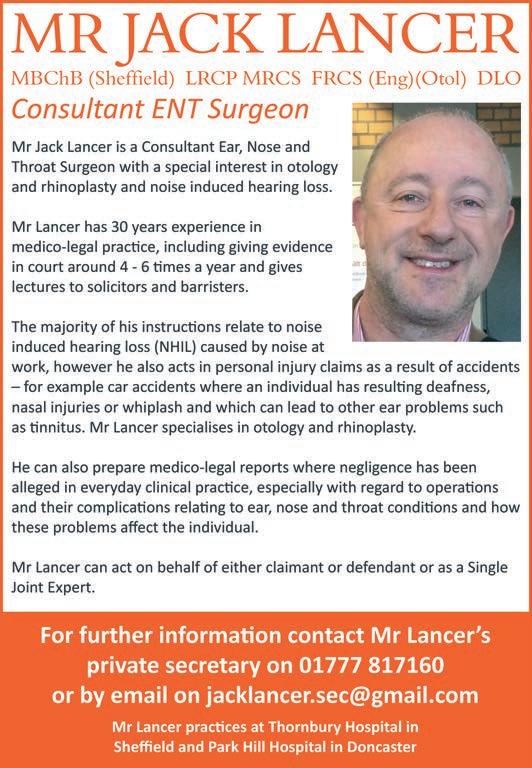

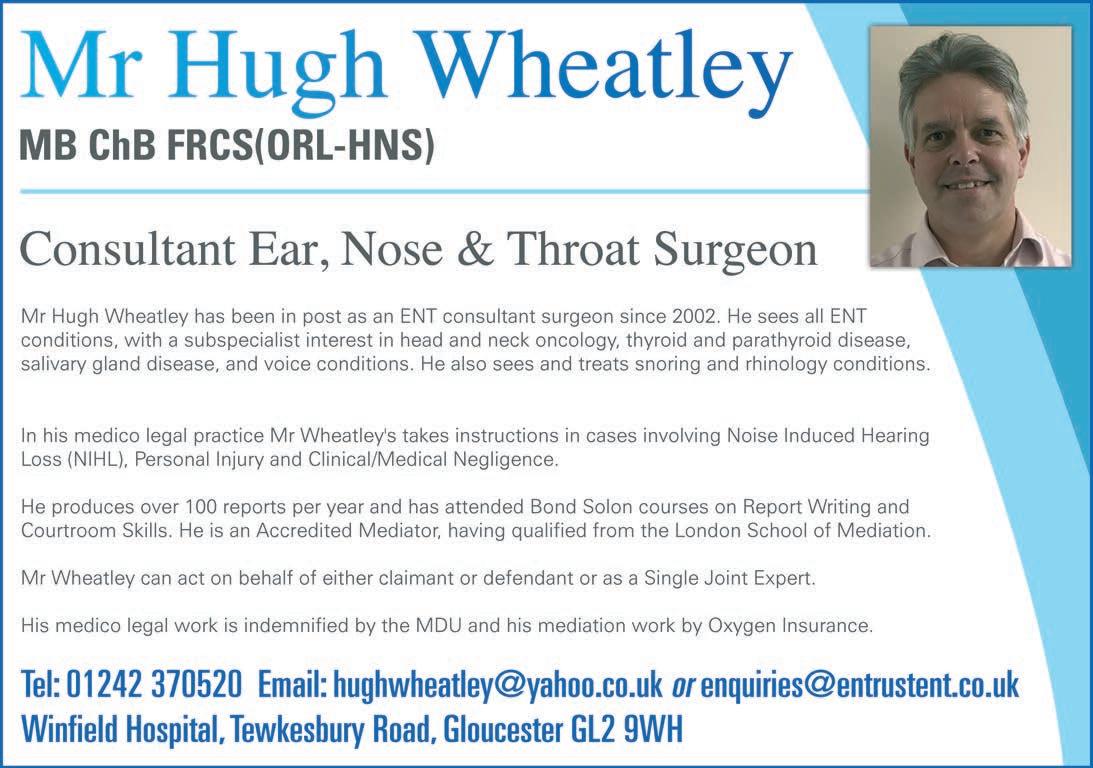
[ THE FIRST MEDICATION to prevent hearing loss caused by commonly used antibiotics has been developed by biotechnology company Oricula Therapeutics.
One in five adults in the UK have hearing loss, yet there are currently no treatments available to restore hearing or prevent it from being lost. As common as hearing loss is, the company’s work involves a slightly unusual element: the zebrafish.
The new medication, ORC-13661, offers the exciting potential of preventing hearing loss in patients being treated with aminoglycoside antibiotics. Aminoglycosides are a well-known and effective class of antibiotics used to treat serious or life-threatening bacterial infections such as tuberculosis, respiratory infections, sepsis and lung infections in people with cystic fibrosis.
Although an important class of antibiotic, 10-20% of people treated with aminoglycosides develop
[CLAIRE LAVERY, associate director of employment at the Royal National Institute for Deaf People (RNID), has been conducting a series of ‘deep dives’ into the issues raised by its report Hearing loss at work: Employer insights. In a blog she looked at the role of line managers.
As Claire points out, line managers play a pivotal role in connecting staff on the ground to the strategic and cultural aims of an organisation. The best laid plans of chief executives and their senior teams can flounder if line managers are not engaged and empowered to deliver those plans through their teams.
Claire writes: “This also applies to strategic aims around inclusion and living out cultural values and behaviours to support people who are deaf, have hearing loss or tinnitus at work. Staff, particularly in large organisations, are often very far removed from their senior leaders, and their interpretation of strategy and culture, and how they experience their job, will depend on the behaviours of their direct line manager.”
She quotes a study of 16,500 employees across 14 countries which found that, in companies where the senior leadership team is committed to diversity but the direct manager is not, only 65% of those surveyed say that they feel free to be their authentic selves at work. That compared with 81% in companies where employees see consistent support through all leadership ranks.
“Senior leaders at our Hearing Loss at Work roundtable events consistently spoke about a sense of being overwhelmed among line managers in being able to navigate increasingly complex diversity and inclusion issues in the workplace. They cited a lack of confidence as a key problem in addressing hearing loss at work: line managers may not have the knowledge or confidence to initiate a conversation with a member of staff about how their hearing loss impacts their role, and then to make appropriate changes.
“Over a quarter (27%) of respondents in our 2023 employer report said they did not feel knowledgeable about hearing loss and a third were not confident that they could communicate well with someone with hearing loss. This figure rose to 76% of managers who were not confident about communicating with a BSL user.”
Her advice is simple – just ask! q
permanent hearing loss or balance problems. This can be as high as 80% in people who require repeat courses or long-term exposure to aminoglycosides over their lifetime.

Zebrafish have helped scientists understand a multitude of health conditions, including Alzheimer’s disease, congenital heart disease, polycystic kidney disease and some cancers. The unassuming fish, which measure between 2.5 cm to 4 cm long, has even made it into space for research on the International Space Station.

Zebrafish share 70% of their genes with humans, making them a good choice for scientific research; but it is their differences as well as their similarities which make them so perfect for scientists studying the hair cells of the inner ear.
The inner ear in humans and other mammals is extremely difficult to access, as it is surrounded by a bony structure called the otic capsule – the hardest and densest bone in the body. Like human inner ear auditory hair cells, zebrafish lateral line hair cells detect changes in pressure of the liquid medium that surrounds them. Unlike humans, however, these hair cells are conveniently located on the outside of the fish, making them directly observable and accessible.
Working at the University of Washington and the Fred Hutchinson Cancer Centre, the founders of Oricula successfully discovered how to protect the hair cells in zebrafish’ lateral line from the toxic effects of aminoglycosides, which can cause the death of hair cells in the inner ear, resulting in hearing loss.
The company has now built on their research to develop ORC13661 as an oral medication to protect the hearing of people who need to be exposed to long courses or high doses of aminoglycosides. ORC-13661 successfully completed Phase 1 clinical trials and was shown to be safe and well tolerated in people. Oricula is now preparing to start the second phase ‘proof of concept’ clinical trial to further define the drug’s effectiveness.
Professor Edwin Rubel, chief scientific officer and co-founder of Oricula Therapeutics, said: “This is a huge step that we’ve envisioned for the past 10 years. If this trial is successful, it could mean that this important class of antibiotics can safely be used much more broadly and ORC-13661 will become the standard of care to protect people against the side effects of hearing loss whenever they are used. We thank the National Institutes of Health and RNID for supporting the development of new drugs to prevent hearing loss.”


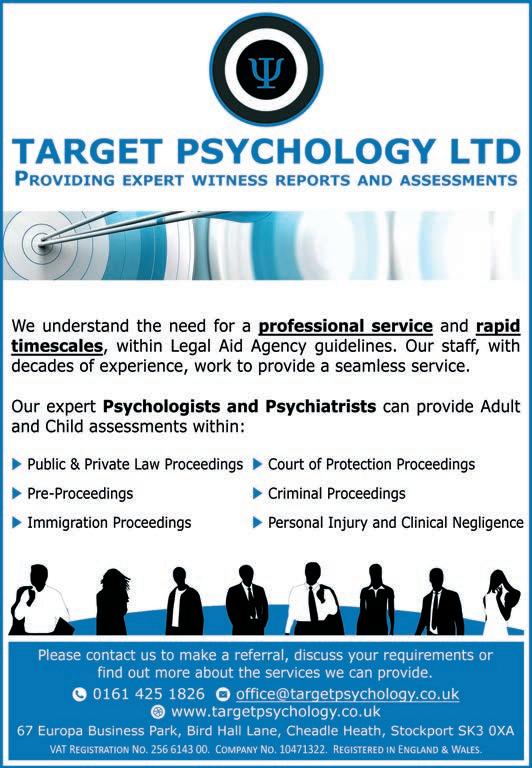


A GROUP OF LEADING PSYCHIATRISTS in Scotland have written to the First Minister with serious concerns over mental health funding there, after analysis revealed spending is lower than it was a decade ago. The research was carried out by the Royal College of Psychiatrists in Scotland and revealed mental health services receive a smaller share of the NHS budget than 10 years ago.
Using Public Health Scotland data, the body found frontline NHS spend on mental health reduced from 9.12% of the budget in 2011/12 to 8.78% in 2021/22. At the 2021 Scottish Parliament election, the SNP pledged to spend at least 10% of the frontline NHS budget on mental health.
The letter to Humza Yousaf said: “As a college, we have serious concerns around the funding of mental health services in Scotland.
“We supported the mental health spending commitments in the Scottish Government and Scottish Green Party’s shared policy programme. In particular, we welcomed the commitment to ‘increase spending on mental health services to 10% of the total frontline NHS budget by the end of this parliamentary session’.”
The letter also warned mental health staff face ‘incredible pressure’, and that redirecting resources such as mental health workers into acute services cannot become a regular habit.
It added: “If the workforce is not to be completely overwhelmed, it is essential that government now honours its spending commitment.”
Dr Pavan Srireddy, policy lead at the college, commented: “We have written to Humza Yousaf asking him to honour the commitment
made more than two years ago to ensure mental health services received the funding they deserve and so desperately need –however, despite promises, we’ve not seen this come to fruition.
“Funding for mental health and physical health should be prioritised equally. What we face is a mental health emergency with demand only set to soar due to the on-going cost-of-living crisis.

“We also need the workforce in place to keep up with that projected increase in more patients seeking treatment. We’re seeking clarification now on how the Scottish Government plans to divvy up this money.” q
THE BRITISH PSYCHOLOGICAL SOCIETY (BPS) has welcomed the government’s announcement that police are to attend fewer mental health calls – the Right Care Right Person (RCRP) agreement. However, the BPS said it is ‘extremely concerned’ that the short timeframe for implementation could have catastrophic consequences for people in mental health crisis.
The government announced the new national agreement between health and policing partners on 26 July. It means police officers throughout England will no longer respond to urgent concerns about mental health if there is no risk to life or crime being committed. It means that police forces in England and Wales who are currently attending up to 80% of health and social care incidents are expected to reduce their responses to between 20-30% within the next two years.
In the last issue of Your Expert Witness, we reported on concerns that the Metropolitan Police had implemented the RCRP protocol independently of the national agreement.
Dr Roman Raczka, BPS President-elect and chair of its Division of Clinical Psychology, said: “We absolutely agree that the vast majority of people in mental health crisis should be supported by trained mental health practitioners, and not the police. However, to withdraw police support within the next two years, at a time when mental health services are already stretched beyond capacity and under resourced after years of chronic underfunding, is simply dangerous.
“The promised investment in mental health services will not deliver trained mental health staff to the frontline overnight, particularly bearing
in mind the NHS’s well-documented recruitment and retention issues.
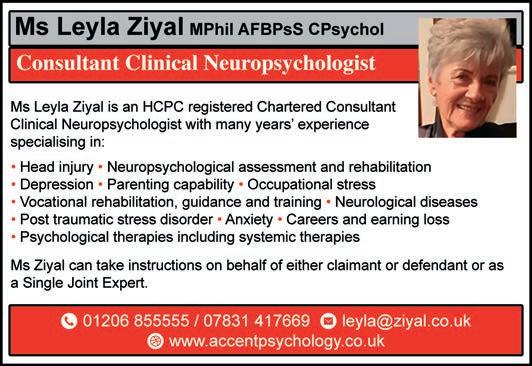
"We’re extremely concerned that people in crisis will fall between the gaps, with potentially catastrophic consequences with even greater risks to children and young people.
“It’s vital that all mental health trusts receive adequate funding to do this, and that realistic and achievable timeframes are in place to resource and safely deliver this plan across England.” q
[ON 10 JULY the President of the Family Division published his latest View from the President’s Chambers. As expected, among other things he provides an update on the progress seen since the relaunch of the Public Law Outline at the beginning of this year, finding that, compared to the same quarter in 2022, in Quarter 1 of 2023 public law case receipts had reduced by 7.4%. That indicates that the changes in approach are starting to have a measurable impact: specifically on the instruction of experts.
He observes: “The overall aim in the public law field remains that proceedings should not be issued until all necessary assessments have been conducted, so that the only cases brought to court are those that need to be there. Thereafter, the court will only permit further expert assessment if it is necessary for the determination of (a) the s31 threshold criteria, (b) the permanence provisions in the care plan, (c) contact or (d) the final welfare assessment as to outcome.
“The court process will be focused, within 26 weeks and with few hearings, only on those four issues.”
That is certainly reflected in the numbers of referrals we are currently receiving from local authority clients and the stage of involvement at which assessments are being commissioned. If that means swifter, more targeted intervention for families, then it has to be a positive step forward.
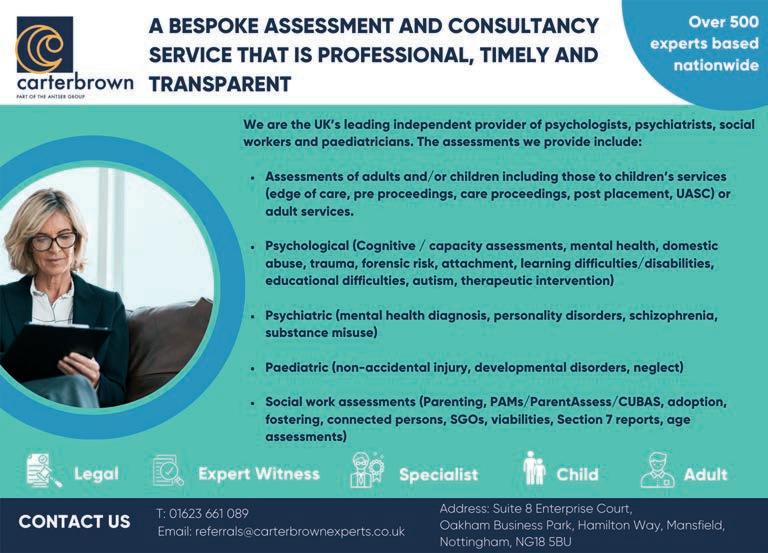
He also refers to the work of the Public Law Working Group around the use of supervision orders. Published in April, their report, Recommendations to achieve best practice in the Child Protection and Family Justice Systems: Supervision Orders, advises that ‘a supervision order should be seen as a much more useful option than has been the case in recent years’.
The case of JW (a child at home under a care order) demonstrates that guidance being put into practice following a determination made in the Court of Appeal. The Public Law Working Group’s guidance is clear that any plan for children to remain at home under a supervision order should be underpinned by robust support.

The most recent CAFCASS data suggests that the PLO changes have not yet begun to have an impact on the time it is taking for proceedings to conclude, with the average timescale being 46 weeks.
At Carter Brown, we continue to work within the Legal Aid Agency’s hourly rates and capped hours: providing a bespoke assessment service that is professional, timely and transparent. We are the UK’s leading independent provider of psychologists, psychiatrists, social workers and paediatricians,
completing over 4,000 reports each year for solicitors, courts, local authorities, panels and organisations. Our experts are based across the UK, so we are able to offer a service local to you, wherever you are. With over 500 experts currently working with us, we can source the right professional for your assessment.
All experts undergo a rigorous recruitment process and hold up-to-date registration with the relevant professional and regulatory bodies. We offer a number of continuing professional development opportunities for our experts throughout the year, to ensure that their practice remains in line with professional guidelines, practice directions and legislation. q
• If you would like to find out more about our work, contact us via referrals@carterbrownexperts.co.uk, or 01623 661089, for a discussion about your assessment requirements.
[AS ONE OF the founding partners of Eye-Law Chambers in 2017 – which still remains a unique arrangement of independent ophthalmic expert witnesses working together within an umbrella organisation – the title question is still one of the most common questions that I am asked with regard to my expert witness work.
Over the years I have answered the question many, many times; but have also wondered why it has arisen so repeatedly. As most of my time is still spent in active clinical practice – which is true of all the experts that exclusively provide eye and vision-related medicolegal services via Eye-Law Chambers – I am able to draw parallels to the way in which ophthalmic surgeons have typically provided their clinical services in the independent sector.
Although it is beginning to change, the majority of ophthalmic surgeons undertaking private practice have typically done so as stand-alone individual providers, commonly utilising the facilities of a local private hospital to see and treat their own private patients: the patient relationship being primarily with the surgeon and the location/facility almost being an incidental one.
Although that is true of part of my own practice, I have also worked as an associate within a specialist ophthalmic provider organisation for the best part of 15 years, where the patients’ relationship with the organisation, particularly when initially making contact, exploring skillsets and reputations for possible treatment options, is as substantial as that with the surgeons themselves. That is still less common than the more traditional scenario, but again has had many people asking why I had chosen that route.
The nature of the question, for both medicolegal and clinical practice scenarios, have shared, similar foundations.
Having been trained within NHS environments, where service provision is team based and income/earnings are not related to either procedure types or volumes undertaken, there is no real driver to not ‘share’ patients with colleagues – some of whom may refer the patients to a different subspecialty clinic if more appropriate.
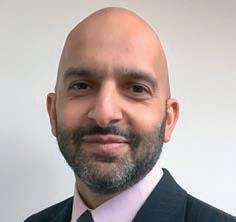
When working in private practice, it is sadly still too common to see specialists providing care to patients with problems that would not fall under their own subspecialty expertise, and for which they would not take responsibility in their NHS settings. It is often justified on the basis that we all have a certain level of knowledge of all areas due to our general training and are thus capable of providing an acceptable level of care. However, acceptable is not the same as optimal care – which is what subspecialty expertise enables to be provided.
I perceive several fundamental reasons for that behaviour. Some clinicians may worry that to refer on to another colleague may be seen as an indicator of lesser ability and thus impact future referrals.
There is a direct relationship between the volume and nature of the work done and the income generated. Not only will referring to a colleague result in a loss of income from a potential procedure, it may also be compounded further by future patients being referred to the other colleague if they are seen as being better or more experienced. The same applies to expert witnesses.
In the same ilk, some worry that working in a group or partnership, as Eye-Law Chambers is seen to be, may result in dilution of volume.
My countering sentiments to the arguments expressed above have always been that, whether in a clinical or an expert witness environment, we have a moral obligation to provide patients or clients with the best service possible. If we are unable to do so, then we should always ensure that the individual employing our services is referred on to a more appropriate expert relevant to their needs.
That was the key principle upon which Eye-Law Chambers was established, so that any case being referred, either directly to our central office or even to a specific expert, can be assessed for suitability and then directed to the most appropriate expert witness. Our experts are all fully independent with regard to the work they accept and the opinions they provide.

It ensures that none of our experts are dealing with matters at less than the highest levels, and enables the provision of high-quality, robust and defendable opinions in any environment. In being able to provide such reports within our own realms of subspecialty expertise, it also increases the potential for timely resolution of cases: thus limiting the common distresses to all involved, as well as positively impacting more practical elements like cost.
Having a central office to co-ordinate practical elements of dealing with various instructing parties, obtaining records, taking care of invoices and so on, all aid the experts themselves in being able to focus on the most important elements of providing medicolegal opinions. Ensuring that case details are dealt with by a specific, non-expert witness manager, preventing experts in the same chambers from seeing each other’s reports, also avoids conflicts of interest if opposing parties should wish to instruct experts within the same chambers.
So, in answer to the original question, my two main reasons for working in chambers, rather than individually, are that it ensures clients always have access to the most appropriate subspecialty expertise for their eye and vision-related cases; and that it removes much of the mundane administrative elements that will often deter many from undertaking medicolegal work. q
“WHY
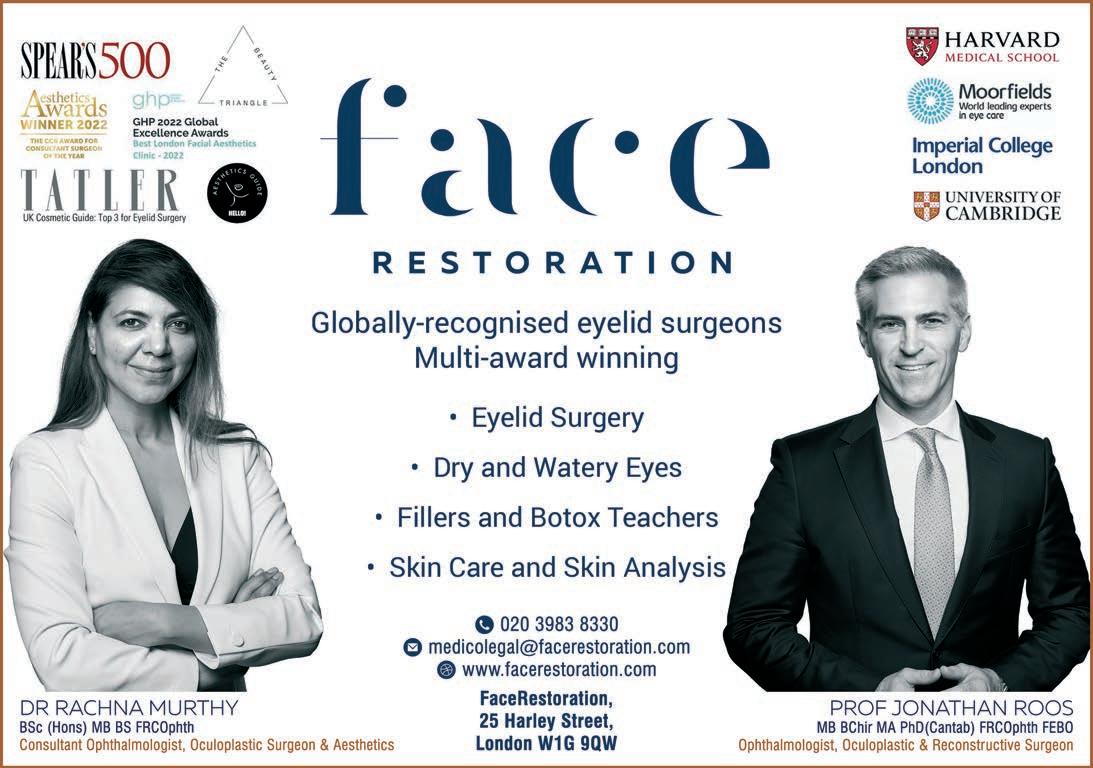
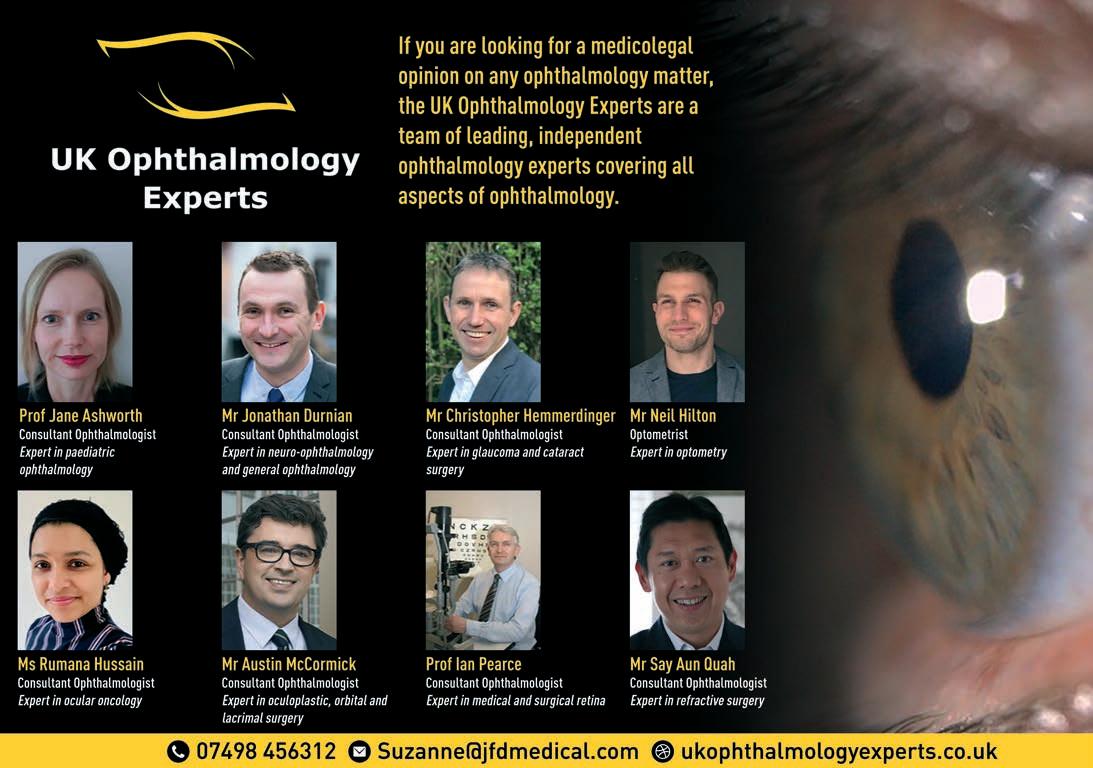
[ CATARACT SURGERY remains the most frequently performed surgical procedure in the UK, with almost half a million operations a year: that is according to latest National Ophthalmology Database (NOD) Audit carried out by the Royal College of Ophthalmologists (RCOphth).

One highlight of the report, the sixth NOD cataract audit report, is the finding of a further reduction in the unadjusted posterior capsule rupture rate to 0.87% – less than half that of 10 years ago. Posterior capsule rupture rate is a key quality metric because it is the most important modifiable risk factor for visual loss.
Mr Mike Burdon, chair of the RCOphth National Ophthalmology Database Audit Steering Group, commented: “The report provides important data on the risks of cataract surgery that should be taken into account when consenting patients. Many clinicians quote a risk of 1:1,000 of loss of vision as a result of cataract surgery. The NOD data shows that risk of catastrophic visual loss is actually 1:500.
Dr John Buchan, Clinical Lead at the RCOphth National Ophthalmology Database Cataract Audit, added: “Cataract surgery is quality assured by the RCOphth National Ophthalmology Database Cataract Audit team. Receiving data on over 70% of all

cataract operations performed, the NOD was pleased to report a continuation of the yearon-year reduction in complication rates.
“In the most recent NHS audit year covering operations performed between 1 April 2021 and 31 March 2022, fewer than one in 100 patients experienced the major surgical complication of posterior capsule rupture, and fewer than one in 200 patients ended up with vision that was markedly worse than before the operation. Outcomes
[THE Driver and Vehicle Licensing Agency has reduced its list of notifiable ocular conditions that drivers must declare. The full list is available on the GOV.UK website.
The reduction follows the publication of an extended list in 2022, which contained several technical errors and included common ocular signs and conditions. That would have resulted in many drivers with otherwise normal eye health and good levels of vision making DVLA declarations.
The College of Optometrists wrote to the chair of the DVLA medical panel to raise its concerns and urge it to withdraw the guidance.
Speaking about the revised list, Daniel Hardiman-McCartney FCOptom said: “We are very happy to see the revised list has been published. The previous update could have resulted in considerable harm and confusion, so we are pleased our intervention helped result in a timely resolution.
“There now needs to be an apology from DVLA medical panel and a review to understand what went wrong and what measures can be put in place to ensure this cannot happen again. We, along with other professional bodies, continue to offer support to the DVLA to provide optometric and vision science expertise.”
On 31 July DVLA issued a Call for Evidence on driver licensing for people with medical conditions. q
for surgeons and centres are available on the NOD Audit website.”
Overall the audit findings are favourable, indicating that NHS patients are receiving high-quality cataract surgery.
The report makes a series of recommendations for patients, regulators, commissioners and contributing surgeons/ trusts and providers. A further audit is planned for 2023, when it is hoped that more centres will take part. q

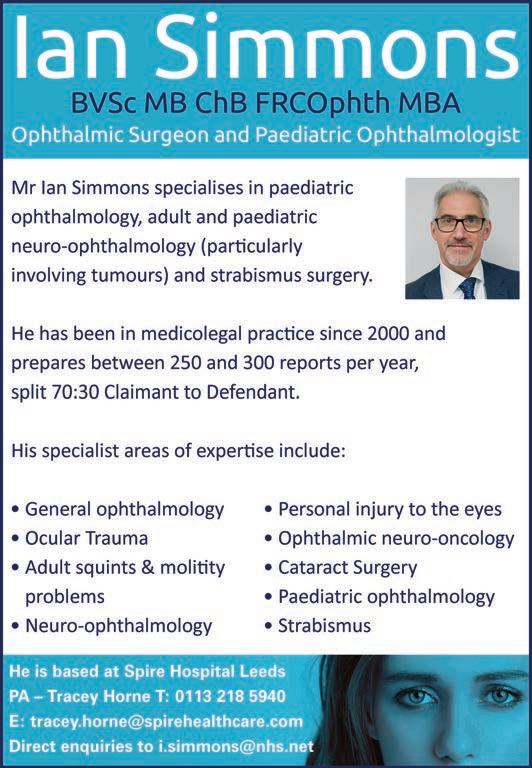

[THE Royal College of Ophthalmologists (RCOphth) has written to Health Minister Will Quince MP to express its support for the extension of independent prescribing responsibilities to orthoptists. The letter highlights that orthoptists have traditionally played an important role in delivering eye care as part of the multidisciplinary team.
That includes working with babies and children on the treatment of amblyopia (‘lazy eye’) and strabismus (‘squint’), and with adults to manage conditions such as double vision. In both of those areas, the RCOphth says, there would be great benefit to patients and eye services if orthoptists were able to undertake independent prescribing, having achieved the appropriate qualification.

More recently orthoptists have been able to broaden and extend their roles within eye departments by undertaking postgraduate qualifications such as the Ophthalmic Practitioner Training Programme, where orthoptists, ophthalmic nurses and optometrists follow a unified curriculum and assessment process to achieve the same level of clinical competence.
Because independent prescribing is already undertaken by nurses and optometrists, RCOphth believes that independent prescribing responsibilities could be extended to orthoptists using a similar framework. That would enable orthoptists, who are registered with their trust, to prescribe and administer drugs within their scope of practice.
The college says: “We also believe that higher education institutions already providing independent prescriber training to nurses and optometrists would be able to deliver similar routes for orthoptists.”
The British and Irish Orthoptic Society (BIOS), however, claims that such a framework already exists under the Human Medicines Regulations 2012 and has issued a position statement to navigate ‘the complexities surrounding the use of Medicine Exemptions as outlined in the UK legislation’.

Within the regulations, the BIOS explains, exemptions are specified under Schedule 17, which empower certain registered professionals to sell, supply and administer specific medications without the need for a prescription. Orthoptists are recognised under the framework, following an update to The Human Medicines (Amendment) Regulations 2016 under Schedule 17.
Orthoptists, the BIOS points out, have a crucial role in the delivery of healthcare services within the National Health Service; but despite that, its registrants are experiencing difficulties in getting Medicine Exemptions recognised by their local pharmacy departments and are being requested to provide additional policies and directives in order to work under the framework.
In its Position Statement, the BIOS says: “BIOS strongly advocates for the autonomous use of Medicine Exemptions by orthoptists within the scope of their clinical practice. The legislation does not specify that further training or competencies are required once annotated and registrants should not be asked to supply these or write them.
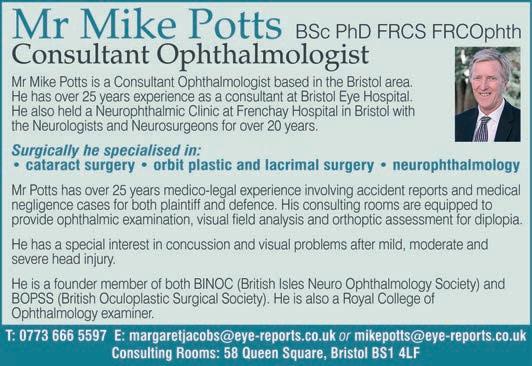
“A Patient Group Direction (PGD) should not be utilised when a Medicine Exemption exists. Instead, orthoptists are able to sell, supply and administer all listed Prescription Only Medicines (POM), and all Pharmacy (P) and General Sales List (GSL) medicines for ocular use within the scope of practice without the need for a PGD.
“There is guidance advocating against the use of PGDs for medicines when exemptions in legislation allow their supply and/or administration without the need for a PGD which can be found in the NICE Medicines Practice Guideline Patient Group Directions (2017).”
With regard to their relationship with pharmacists, the BIOS says: “We recognise the importance of collaborative working relationships between pharmacists and orthoptists in delivering safe and effective patient care. Pharmacists play a crucial role in supporting orthoptists with their expertise in medication management. Therefore, we encourage open communication and collaboration between pharmacists and orthoptists within NHS Trusts to navigate any challenges or concerns related to the use of Medicine Exemptions.” q

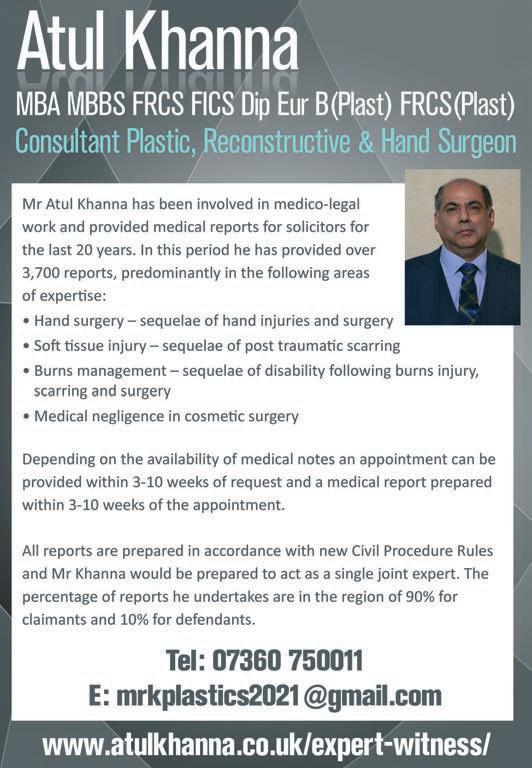

[ON 18 JULY the three prominent bodies representing plastic, reconstructive and breast surgeons issued a joint statement on the subject of breast implant-associated squamous cell carcinoma and other breast implant-associated lymphomas.
The statement by the British Association of Aesthetic Plastic Surgeons (BAAPS), the British Association of Plastic, Reconstructive and Aesthetic Surgeons (BAPRAS) and the Association of Breast Surgery (ABS) was issued to give information on what is known, and recommendations for practice in the United Kingdom following a USA Food and Drug Administration Safety Alert on 8 September 2022.
The report described a number of cases of extremely uncommon cancers associated with breast implant capsules. The cancers were squamous cell carcinomas (BIA-SCC) and various lymphomas. These were not breast cancers, but cancers that arose in the surrounding capsule – the scar tissue – of breast implants.
Very few cases of those cancers have been reported worldwide and as such there is not enough information available to provide concrete guidance on risk factors or patient management. The cancers are distinct from breast implant-associated anaplastic large cell lymphomas (BIA-ALCL).
Approximately 20 cases of BIA-SCC have been reported against a background of a worldwide population of several tens of millions of women having breast implants. It should be noted that other cases of SCC have been reported in the breast unrelated to breast implants.
Of the cases that have been documented, they presented between 11-40 years after the original breast implant surgery. They occurred with both smooth and textured surface implants, and with both silicone and saline filled implants. Patients reported delayed swelling of the breast (late seroma), pain, redness and often hardness (capsular contracture) of the breast.
The statement made a number of initial recommendations for patients:
“If you are a patient with breast implants in situ and have concerns, and especially if you develop late onset of swelling, pain, redness or significant hardening around an implant, please note the following advice.
• If your implant/s were inserted by the NHS, you should see your GP
• for advice and, if appropriate, onward referral to your local NHS
• Breast Care Unit.
• If your implant/s were inserted in the private sector, you should
• consult your original surgeon or private provider. If the surgeon or
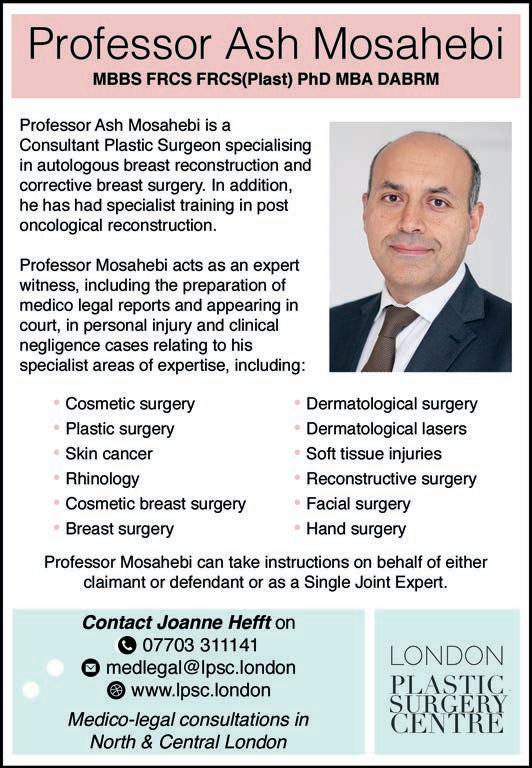
• the private provider are not still in practice, you should see your GP
• for advice and, if appropriate, onward referral to your local NHS
• Breast Care Unit.
• If you develop a problem with your breast implant, report this to the
• MHRA via the Yellow Card scheme.”
For surgeons preforming breast implants, now that BIA-SCC and other types of lymphoma have been described in association
with breast implants, the three associations recommend that it be included as part of the informed consent process for all patients having surgery involving breast implants. Surgeons should stress to patients that, with the current data, it appears to be an extremely uncommon phenomenon.

The statement also says that healthcare professionals should report any suspected or actual adverse incidents involving those devices through their healthcare institution’s local incident reporting system and/or their national incident reporting authority, as appropriate, for England, Scotland, Northern Ireland and Wales.
As further data and information comes to light, the associations state, the guidance and the recommendations will be updated. q
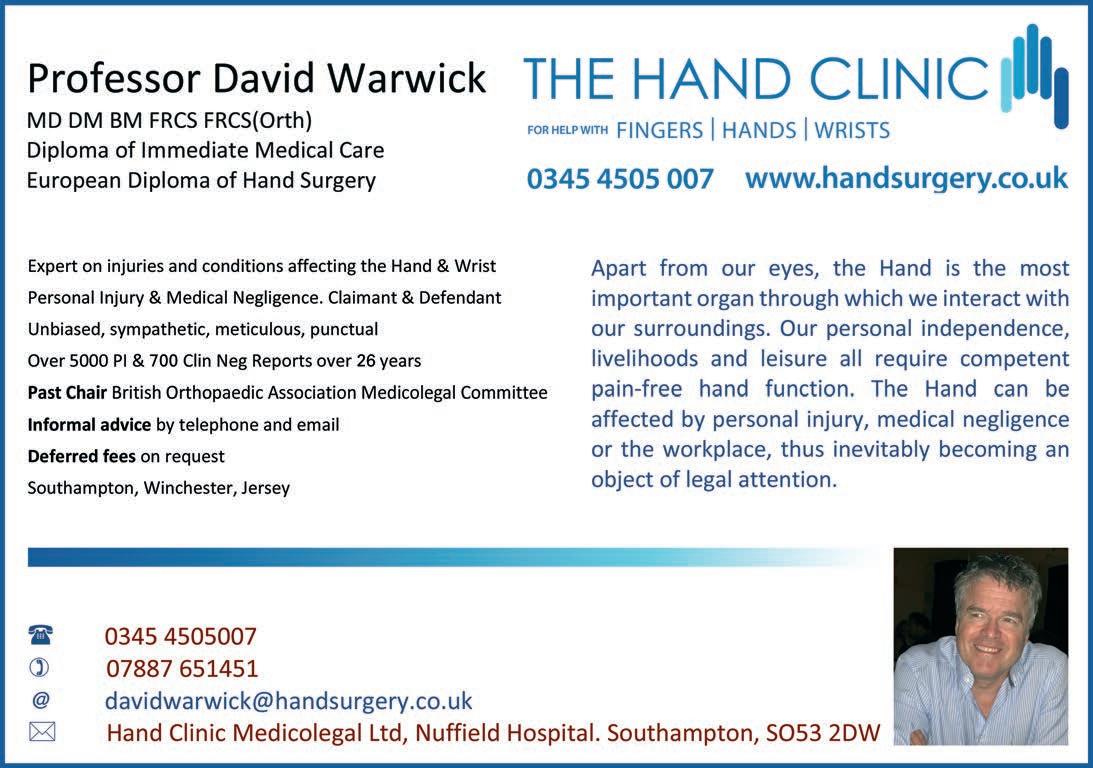

THE SIGNIFICANT INCREASE in numbers of patients travelling abroad for aesthetic plastic surgery has been linked with consequent serious complications and even deaths, as reported in previous issues of Your Expert Witness
According to the Annual Cosmetic Surgery Audit by the British Association of Aesthetic Plastic Surgeons (BAAPS), complications rose by 35% in 2022. BAAPS and its Turkish counterpart the Turkish Society of Plastic Reconstructive and Aesthetic Surgeons (TSPRAS) have made an unprecedented joint statement due to concerns for patient welfare and safety.
The statement reads: “BAAPS and TSPRAS understand and recognise that there will always be patients from different countries who will seek medical and surgical treatments abroad. There are a variety of reasons this may be so, but multiple reports have highlighted concerns that our two national societies share regarding standards of patient care.
“Undergoing any form of surgery risks experiencing a complication, no matter who the surgeons is or where it is performed; however, what these reports have highlighted is poor practice, unnecessary risk-taking and potentially avoidable harm to patients.”
President of BAAPS Marc Pacifico said: “Whilst in the United Kingdom recognised surgeons can be checked on the GMC Specialist Register and hospitals and clinics are regulated by the CQC, this is not the case in other countries.
“BAAPS and TSPRAS have come together to draw up some advice and guidance for patients seeking surgery in Turkey, which has a large cosmetic tourism industry. The aim of this guidance is to help
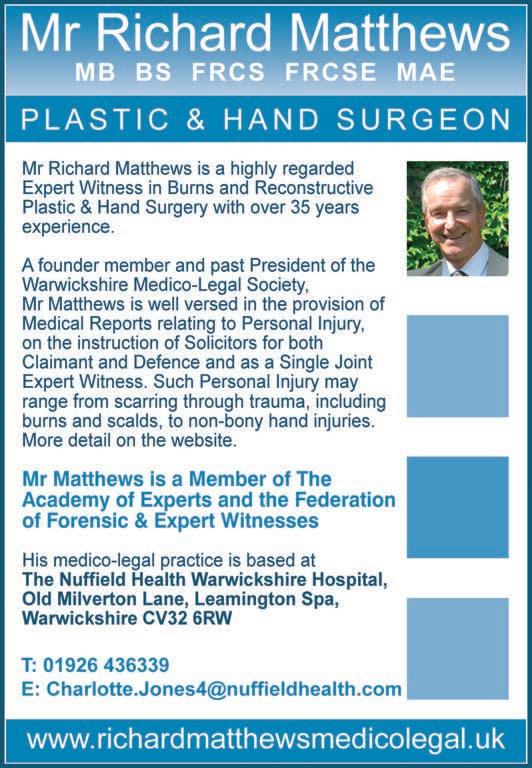
PICTURED ARE ITEMS from the Adrian Flatt Hand Implant Collection, which has been donated to the British Society for Surgery of the Hand (BSSH) by Ian Trail.
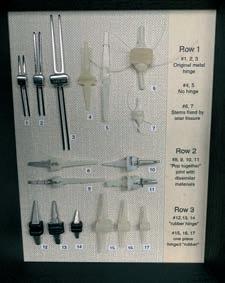
The collection paints a vivid history of the early development of hand implants. It was personally collated by Adrian Flatt (1921-2017) who had a long and major interest in the subject.
Born in Frinton on Sea, Essex in 1921, Adrian Flatt graduated in medicine from Cambridge University. His training included both plastic and orthopaedic surgery. He was a Fullbright Scholar, furthering his interest in hand surgery by visiting James Littler in New York. He returned to London as First Assistant in Orthopaedic Surgery to Watson Jones and was a founder member of the Second Hand Club, which became BSSH.
He was invited to set up an academic hand surgery unit at the University of Iowa, commencing as an Associate in Orthopaedic Surgery, he became Professor of Anatomy and developed a respected hand surgery fellowship programme.
Adrian had over 200 publications on hand surgery and wrote numerous books on the subject. He was President of ASSH from 1975-76 and was awarded the IFSSH Pioneer in Hand Surgery status in 1992: the American and international bodies respectively. q
to protect patients from harm and ensure that they are aware of standards of care – both before and after surgery – that they should expect as a minimum.”
The two organisations strongly urge anyone from the UK considering travelling to Turkey for cosmetic surgery to consider the following points:
• Any Turkish surgeon seen should be a member of TSPRAS, of
• which there is a member listing available online. In Turkey there are
• practitioners who claim to be plastic surgeons who are not, and
• other surgeons working outside their areas of training and specialty.
• Your surgeon in Turkey should have Turkish board certification –
• you should be able to see their certificate on request. Membership
• of the European Board of Plastic Reconstructive and Aesthetic
• Surgery is desirable in your surgeon.
• Your surgeon should have been in practice in plastic reconstructive
• and aesthetic surgery for at least five-years, as training is different
• in Turkey from the UK.
• Your surgeon should offer you an aftercare plan.
• You should know the name of your surgeon and how to contact
• them if there is a problem.
• It is advisable to ask how long your surgeon has been working with
• their clinic or company – at least three years is recommended.
• It is compulsory in Turkey to have a comprehensive consent
• form completed ahead of travel. If that does not happen it should
• raise concerns.
• Your surgeon should perform your surgery in a fully recognised hospital,
• which in Turkey might be identified by having at least 30 beds.q
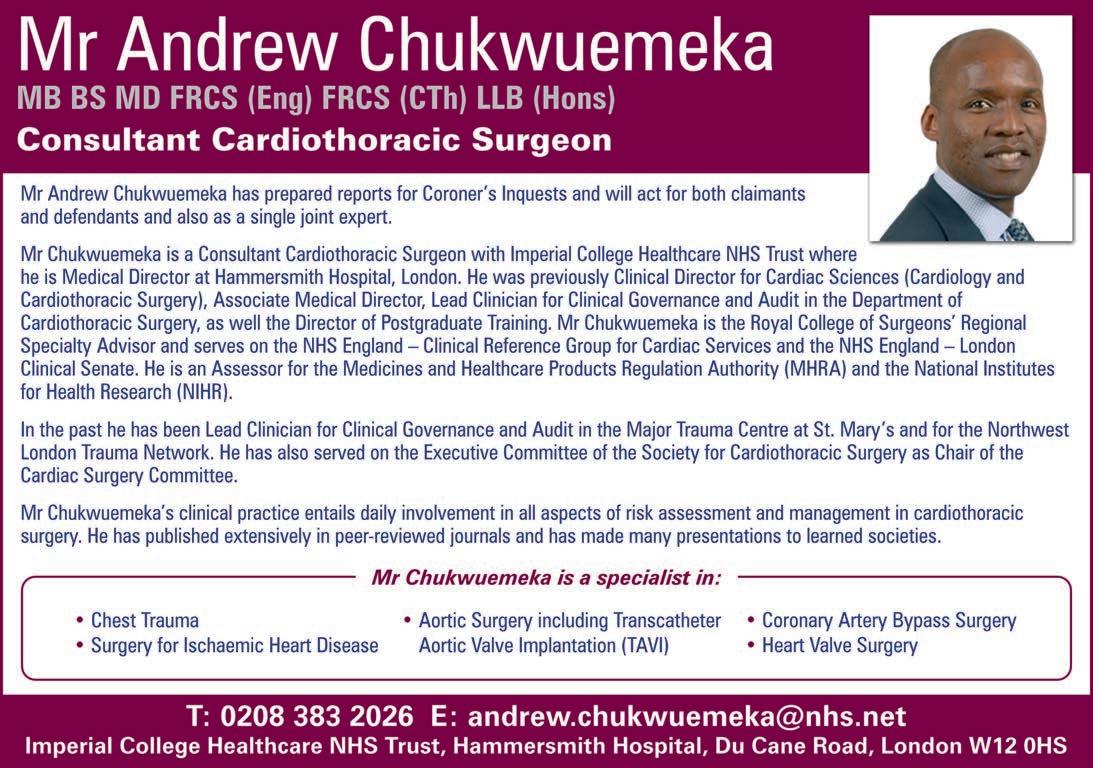
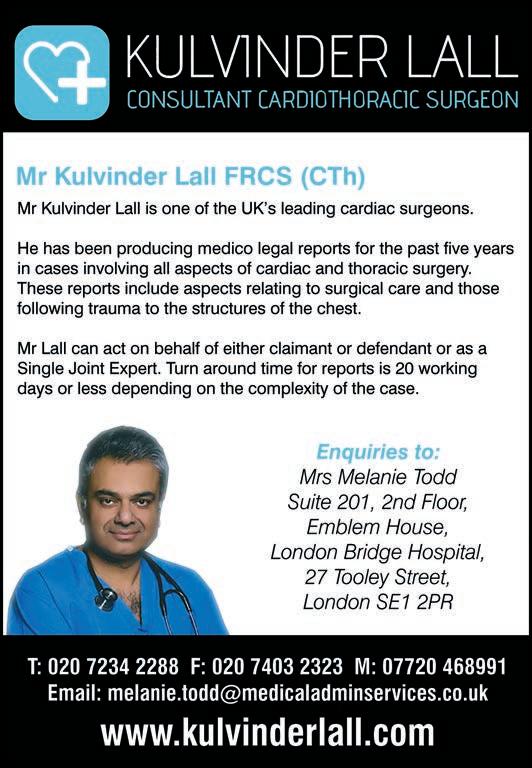
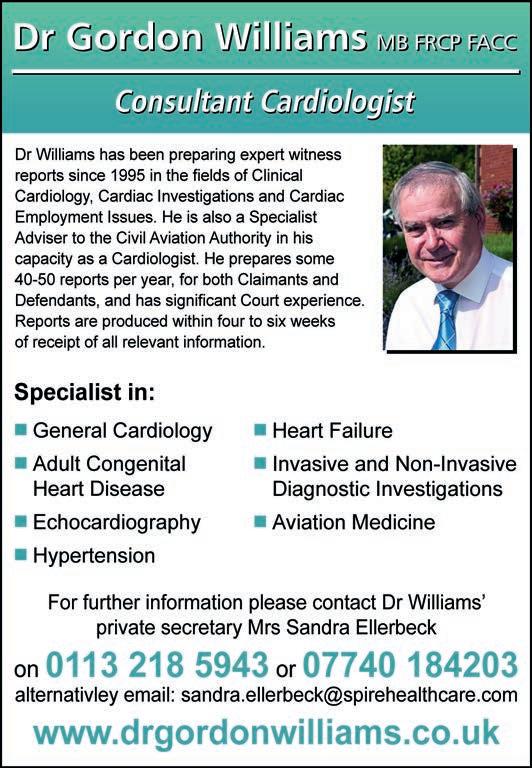
[IN THE MOST DEPRIVED AREAS of England and Scotland, the nearest 24/7-accessible defibrillator is on average a round trip of over a mile, according to research carried out with support from the BHF.
The pioneering study – one of the biggest ever to look at defibrillator access – has been published in the journal Heart and at the European Society of Cardiology Congress in Amsterdam in August.


The researchers calculated the median road distance to a defibrillator with unrestricted public access in Great Britain’s 1.7 million postcodes and studied the relationship between the distance to a defibrillator and an area’s level of deprivation. In Wales, there was no link between defibrillator location and deprivation, but the picture in England and Scotland revealed that, on average, the more deprived an area is, the further it is from a 24/7-accessible defibrillator.
Dr Chris Wilkinson, Senior Lecturer in Cardiology at Hull York Medical School and honorary consultant cardiologist, who led the research, said: “By calculating how far every postcode in Great Britain is from its nearest defibrillator, we’ve shown just how much deprivation levels affect the public’s access to these lifesaving devices out-of-hours in England and Scotland.
"Making existing defibrillators accessible to the public 24/7 would make a big difference to the average distances people need to travel in an out-of-hours emergency, and would improve equality of access –which can help save lives.”

With nearly three in 10 out-of-hospital cardiac arrests happening on the weekend and four in 10 between 6pm and 6am in England, quick access to a defibrillator at any time of the day is crucial.
People living in the most deprived areas of England and Scotland are on average 99 and 317 metres further away from their nearest 24/7 defibrillator than those in the least deprived areas respectively. On average, a public-access defibrillator is 726 metres away from the centre of any given postcode along the road network across Great Britain. Every minute of delay between a cardiac arrest and defibrillation reduces the chance of survival by up to 10%, the BHF says. Quick CPR and defibrillation is vital to give someone the best chance of survival.
Judy O’Sullivan, BHF’s Director of Health Innovation Programmes, said: “We are proud that data from The Circuit [the national defibrillator network] has helped to highlight that deprived communities need better support to help improve response times to an out-of-hospital cardiac arrest. Bystander CPR and defibrillation can double the chance of survival from a cardiac arrest, so it is crucial that we address the unequal access to defibrillators in order to improve survival rates.”
Michael Bradfield, Director of Clinical and Service Development at Resuscitation Council UK, added: “It's vital that we address the inequalities that exist in terms of where 24/7 accessible defibrillators are located, because CPR along with defibrillation can significantly increase chances of survival following a cardiac arrest. It's crucial that everyone, no matter where they live, has access to a defibrillator and understands that they are easy to use: no specialist training is required."
The Circuit’s aim is to map all public access defibrillators in the UK, so ambulance services can direct bystanders to the nearest defibrillator in the event of a cardiac arrest – the ultimate medical emergency. With over 30,000 out-of-hospital cardiac arrests each year in the UK and a survival rate of less than one in ten, quick CPR and defibrillation is vital to improve survival rates.
Anyone with a defibrillator should register it immediately, so that the device is visible to ambulance services. That could potentially shorten the distance to a postcode’s nearest defibrillator that’s visible to ambulance services, and could even be the difference between life and death in the event of an out-of-hospital cardiac arrest. q
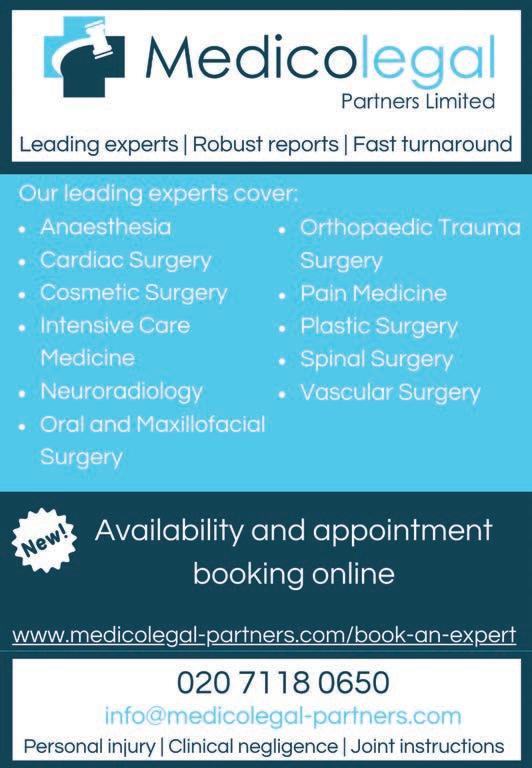
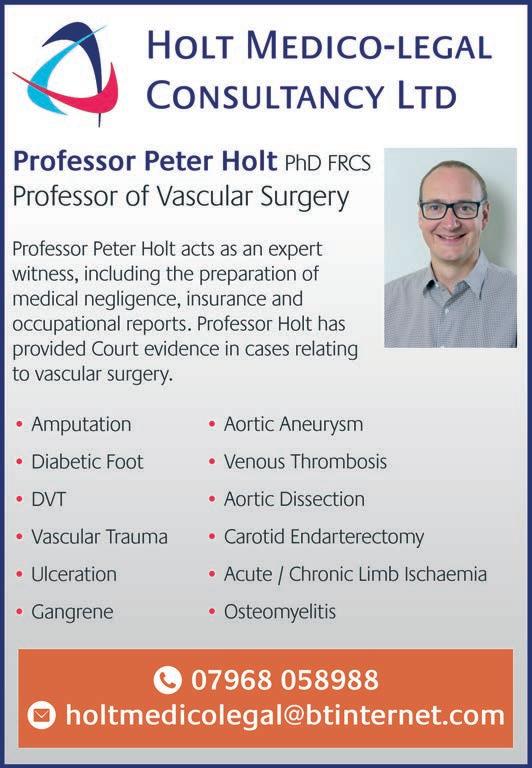
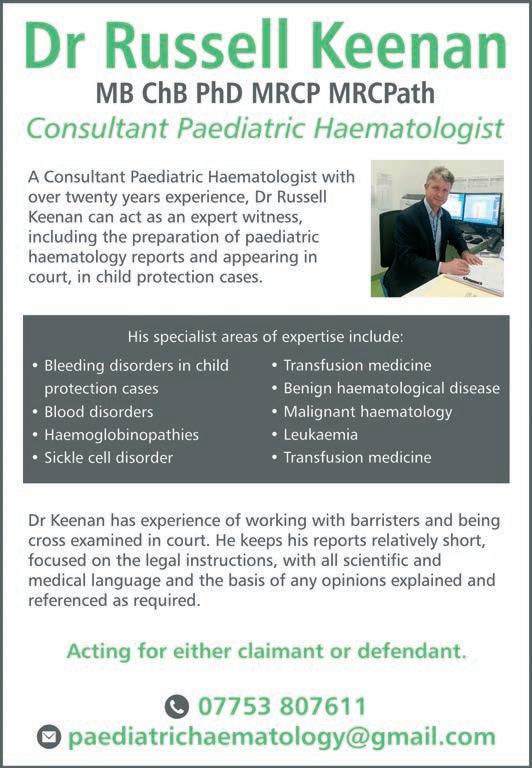

AORTIC ANEURYSMS, which are balloon-like bulges in the blood vessels, can occur at any point along the length of the aorta – the main artery leading from the heart. As blood pumps through the aneurysm the pressure can cause the layers of the artery wall to split and the aneurysm ruptures. That leads to massive internal bleeding, which normally proves fatal.
Before the 1990s open surgical repair was the only treatment option; however, in 1991 the new technique of endovascular aortic aneurysm repair (EVAR) was pioneered. Although that has revolutionised the treatment of aortic aneurysms, it has also introduced some challenges.
EVAR entails the placement of a fabric-covered stent graft into the damaged portion of the aorta to bypass the aneurysm and exclude it from systemic arterial blood pressure. Thus, the overall aim of EVAR is to completely exclude the aneurysm from the circulatory system. Usually, aortic stent grafts comprise a bifurcated body and one or two iliac limbs, which maintain blood flow to the legs. However, more complex aneurysm cases can be treated with fenestrated or branched grafts, which are extra components that can be added to maintain blood supply to major organs.
When compared to open repair, patients undergoing EVAR have lower perioperative rates of both morbidity and mortality. As a less invasive approach, it has also enabled the treatment of patients who would previously have been considered ineligible due to excessive perioperative risk factors. Because of that, mortality associated with aneurysm rupture has decreased.

However, the benefit of EVAR in terms of survival reduces over time and mortality rates may even exceed that of open repair after about eight years of follow-up. That is partly due to higher rates of late complications associated with EVAR, which result in higher late mortality. Therefore, in younger patients with a longer life expectancy and lower perioperative risk, open repair may be more suitable. Additionally, patients with anatomic constraints should not be treated with EVAR.
The most common complications of EVAR are endoleaks, when blood continues to flow into the aneurysm sac. They are classified according to the origin of the blood flow. Type I leaks occur when blood flows between the stent graft and the native arterial wall. Although most commonly seen at the time of stent placement, late Type I leaks can develop due to progressive aneurysmal disease involving the infrarenal neck.
Type II leaks, which are the commonest type, involve a retrograde flow of blood through vessels which communicate with the sac. Unless the sac is enlarging, intervention is not usually required and up to one third of this type of leak may spontaneously resolve.
Type III leaks occur when there is a structural failure of the stent graft due to separation of the component parts or tearing of the fabric. Type IV leaks, which are rare, indicate graft wall porosity and are usually identified during surgery. In a Type V leak, the aneurysmal sac
continues to expand despite no obvious evidence of a leak.
Endoleaks can occur at any time after graft placement, with cases being reported up to seven years after the original surgery. Therefore, careful surveillance of the patient is recommended, ideally for life. An initial assessment should take place one month after surgery, with annual check ups thereafter, although the interval should be reduced to six months in patients with known endoleaks.
Computed tomography (CT) is the best method of follow up, as the images produced allow assessment of aneurysm size, the placement of the graft and the presence of any leaks. However, there is some concern about the cumulative radiation dose arising from repeated follow-up scans. Therefore, alternative methods such as ultrasound, magnetic resonance imaging and plain radiographs should be considered. As all of those methods have advantages and drawbacks, it is important to choose the method most suitable for the individual patient.
As well as the general risks associated with any surgical procedure, other complications unique to EVAR include kinking or compression of the stent graft. That can result in claudication – a pain in the muscles when exercising due to lack of oxygen – in the lower limbs, particularly if one of the limbs of the graft becomes completely blocked. Twisting of the graft can occur at insertion due to difficult anatomy, or may develop over time due to changes in the blood vessels as the aneurysm shrinks.
Ultimately, the components may become disconnected, resulting in a Type III leak. Changes in the aneurysmal sac or initial selection of a graft of the incorrect size can also lead to device migration over a period of time. Furthermore, as EVAR is a relatively new technique, the long-term durability of the graft materials is unclear and leaks may occur as the graft degrades.
Although rare, spinal cord ischemia can be particularly serious, as it leads to paraplegia in more complex cases. Preventative measures include prophylactic cerebrospinal fluid drainage, avoidance of hypotension, mild perioperative hypothermia and neuromonitoring.
While EVAR undoubtedly has short-term benefits compared to open repair surgery, and it has allowed the treatment of aneurysms in patients previously considered ineligible, the long-term outcomes of the procedure remain unclear. Therefore, the decision to treat an aneurysm with EVAR must weigh up the risks of treatment against the risk of rupture and the patient’s general health, while also considering the patient’s life expectancy and preference. q
• Mr Harpaul Flora is a Consultant Vascular Surgeon at St Barts and Royal London NHS Trust. He holds an Honorary Consultant position at Queen’s Square Hospital. He has 15 years experience in endovascular and advanced laparoscopic, or keyhole, surgery for a variety of vascular problems and was the first surgeon in the UK to perform the Barostim procedure for the regulation of hypertension.
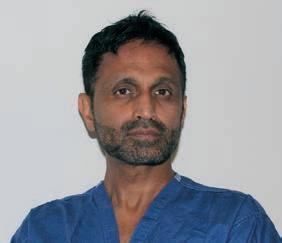
[
INADVERTENT DAMAGE to peripheral nerves may occur during vascular surgery or the management of vascular diseases. Damage to cutaneous nerves may occur following surgery to the arteries or veins of the lower limbs and are sometimes the subject of litigation.
Limb ischaemia may give rise to neurological injury to peripheral nerves leading to troublesome chronic pain. Not all of the damage to nerves is avoidable but competently conducted surgery will prevent much of the problem.
The main region where nerve damage may occur during ischaemia is the lower limb, although I have advised in several cases of upper limb ischaemia. Most commonly, nerve damage occurs during an episode of acute limb ischaemia arising from thrombosis of an atherosclerotic artery or from peripheral embolisation of thrombus.
The most common symptom at the start of an episode of acute limb ischaemia is severe pain arising from damage to the muscles of the leg. This is later followed by a loss of sensation as the nerves suffer from ischaemia and stop working. Muscles and nerves are both highly susceptible to permanent damage from limb ischaemia unless the blood flow can be restored within a few hours.
In cases where there has been a delay in restoring blood flow to the legs, muscle necrosis (death) may occur leading to loss of function. Nerves may not regain their function after restoration of blood flow. Both of these problems lead to loss of function and disability.
In general, nerve function may improve as the peripheral nerves regenerate from above the level of ischaemia. The rate of growth is about 1-2 mm per day so recovery may take months. During this phase a further problem may arise, that of neuropathic pain. Nerves damaged by ischaemia may regain some function but this is perceived by the patient as chronic unremitting pain. This is a very troublesome symptom and is usually managed by an expert in pain medicine. Once established, neuropathic pain is long lasting and can lead to considerable loss of quality of life.
The spinal cord and the nerves in the spinal canal receive a blood supply from the aorta via segmental arteries in the thoracic and lumbar regions. Surgery to treat atheroma and aneurysms of the aorta, including
endovascular surgery, may lead to ischaemia of the spinal cord and the nerves which emerge from it. It may lead to paraplegia or reduced neurological function in the legs.
Although it is a recognised adverse event of this type of surgery, very limited methods are available to avoid the problem and no specific treatment is available. As a result, the claimant’s case in such litigation is likely to be very weak.
Injury to the peripheral nerves may arise from both arterial and venous surgery. The most commonly damaged sensory nerve is the saphenous nerve which accompanies the saphenous vein along the medial aspect of the leg from the knee to the ankle. This section of vein is often used in arterial surgery as a bypass graft. However, the most common type of surgery to this vein is varicose vein surgery.
During arterial surgery the vein is carefully dissected, however deep dissection to identify the artery may lead to stretching of the nerve or necessitate deliberate division of the nerve. Saphenous nerve injury during arterial surgery is recognised as an adverse event arising even from competent surgery.

Varicose vein surgery is the most common source of litigation in connection with nerve injuries. Older publications have indicated a risk of nerve damage of about 5-10% following surgery. However, more recent studies indicate that varicose vein ‘stripping’ operations may lead to nerve injury in up to one third of cases.
NICE has recommended that varicose vein surgery should be regarded as a third-line treatment with more modern endovenous treatments used instead. As a result, the most commonly used method of treatment in the UK is thermal ablation in which the saphenous vein is heated with a catheter passed along the inside of the vein. This uses laser energy or electrical energy to heat the vein.
There is a risk of thermal damage to structures adjacent to the vein, so this treatment is not normally used below the knee where the saphenous nerve lies adjacent to the great saphenous vein. Similarly, the sural nerve lies adjacent to the distal part of the small saphenous vein on the back of the calf where thermal ablation should be avoided.
I have advised in cases where the neuropathic pain arose from thermal damage to the saphenous nerve below the knee following thermal ablation in this region. I consider that this may comprise substandard care.
Where veins are in the vicinity of nerves, there are a number of methods of treatment such as foam sclerotherapy, mechanochemical ablation and glue ablation which will not risk damage to the adjacent nerve.
A further treatment which may give rise to nerve injury is phlebectomy (pictured). This method is used to remove the varicose veins themselves. A small incision is made over the varicose vein and a hook or artery forceps used to pull out the vein. Cutaneous nerves may be damaged inadvertently by this technique, having been mistaken for a vein by the surgeon. I have advised in cases where such treatment has led to severe neuropathic pain as well as a loss of sensation in the lower limb.
Alternative methods of treatment of varices, including foam sclerotherapy, are available and patients should receive an adequate explanation of all available treatments and associated risks during the consent process.
Motor nerve injury is much less common but can follow phlebectomy for varicose veins at the back of the knee or the upper part of the lateral aspect of the calf where the common peroneal nerve lies. Surgery leading to damage to this nerve is likely to be considered substandard. I have advised in a number of cases in which the claimant succeeded in civil litigation following this type of injury.

Severe and troublesome persistent symptoms may arise following various types of vascular surgery. In many instances, such as severe limb ischaemia, expedient treatment will avoid protracted neuropathic pain. Damage to peripheral nerves during varicose vein surgery can largely be avoided by the surgeon adopting modern methods of treatment. However, some of the older methods such as phlebotomy are still in common use and may give rise to long-lasting troublesome symptoms due to peripheral nerve injury. q
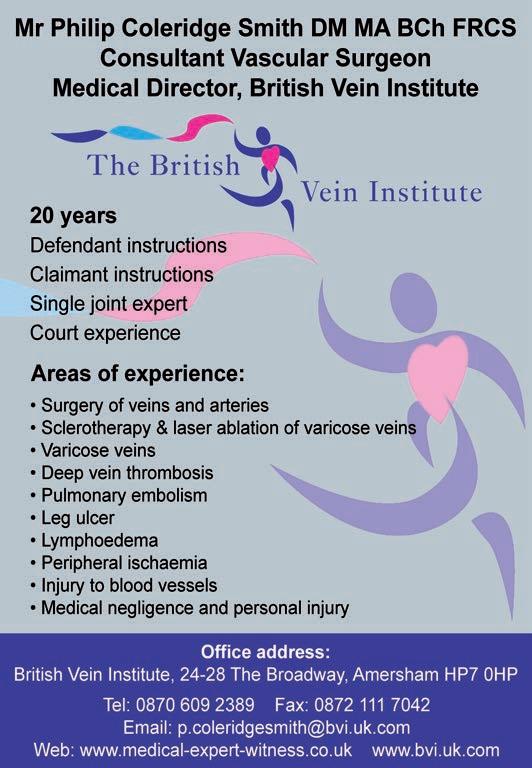


[ POSTNATAL CARE is a crucial aspect of ensuring the health and wellbeing of both the mother and the newborn child. Proper monitoring and adherence to safety guidelines can significantly reduce the risk of complications and safeguard the life of the baby.
Neonatal brain damage can be caused by several factors, including oxygen deprivation during birth, hypoglycaemia – or low blood sugar – severe jaundice, suffocation, premature delivery and a number of infections. In some cases the damage may be caused by trauma during delivery, such as a difficult or prolonged birth. The effects of neonatal brain damage can range from mild to severe and can include developmental delays, learning difficulties, hearing impairment and cerebral palsy.
In this article, I will delve into the topic of neonatal brain damage caused by clinical negligence, focusing on the tragic consequences of insufficient care and oversight during the crucial hours after birth.

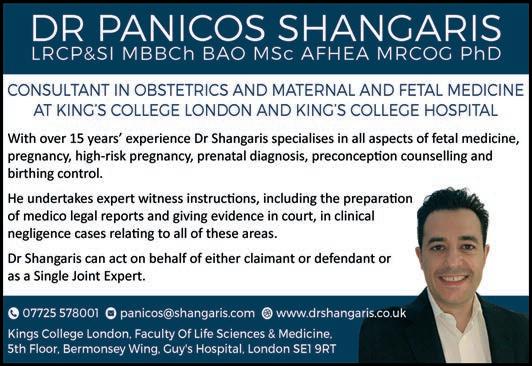
A tragic example of the impact of clinical negligence on a newborn child was a case where a baby suffered severe brain damage and eventually died due to a lack of oxygen. The baby was accidentally suffocated while taking their first feed, as a result of the failure of midwives to follow safety guidelines and properly monitor the baby and the mother.
In this case the parents expressed concerns about the baby's position, but their worries were dismissed and the midwives failed to check on the child before it was too late. Other safety guidelines were not followed, including repairing the mother's tears while she was holding the baby and receiving pain relief, instead of placing the baby safely in their cot or with their father.
The lack of concern shown by the midwives that they were breaking the very rules that exist to protect babies and their mothers is very worrying. National guidelines are created by experts who are very knowledgeable about the various risks that are posed to newborns, and choosing to ignore them is a very serious breach of the duty of care healthcare professionals owe.
In cases such as the one described above an inquest may be held to determine the circumstances surrounding the baby's death and to identify any failings in the care provided. That process can lead to media coverage, which can draw attention to the issue of clinical negligence in neonatal care and potentially lead to improvements in the system.
In cases like this it is important to examine whether hospital staff followed appropriate safety guidelines and protocols. Ensuring that guidelines are strictly adhered to can significantly reduce the risk of complications and tragic accidents like this one, and it underscores the need for continuous improvement in neonatal care and monitoring. By raising awareness of the risks associated with insufficient care, we hope to contribute to on-going efforts to prevent such tragedies from occurring in the future. q
AGRICULTURAL & HORTICULTURAL CONSULTANTS


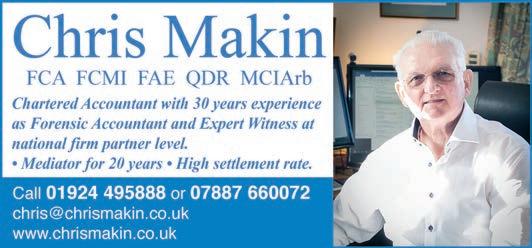

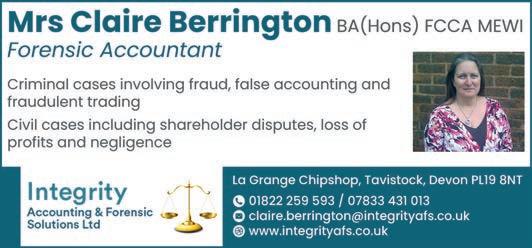




ARTS & ANTIQUES SURVEYORS


BUILDING, PROPERTY & CONSTRUCTION





COLLISION INVESTIGATION & RECONSTRUCTION



COMPLIANCE CONSULTANTS
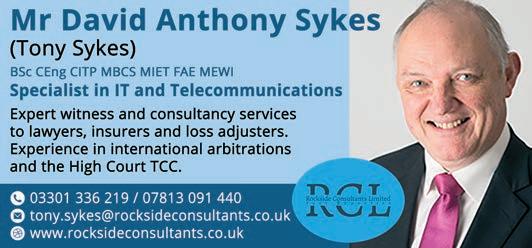


COMPUTER & MOBILE FORENSICS

ENERGY CONSULTANTS
ERGONOMICS
CRIMINOLOGY
DIAMOND & JEWELLERY VALUERS



FINANCIAL SERVICES



FORENSIC SERVICES




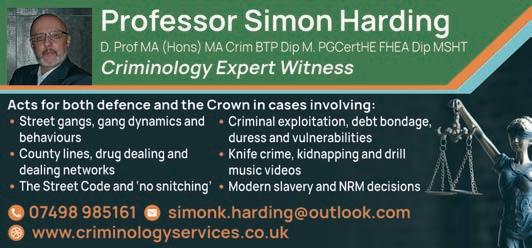
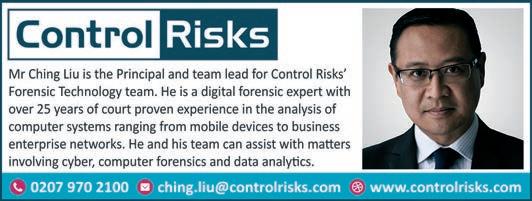
DIGITAL TECHNOLOGY

INSURANCE

MECHANICAL & PROCESS ENGINEERING

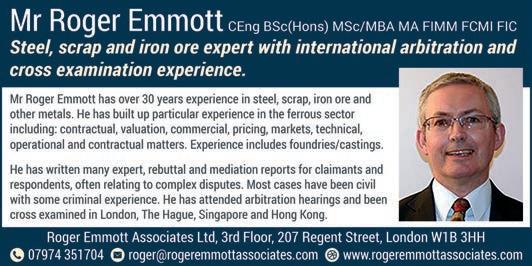


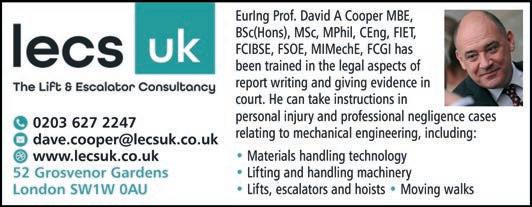



RISK MANAGEMENT
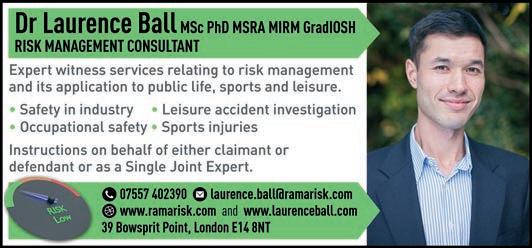

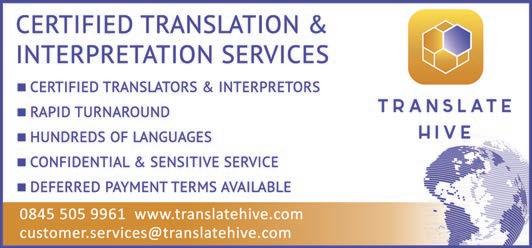




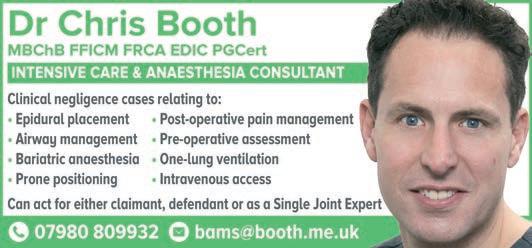
ACCIDENT & EMERGENCY MEDICINE


ANAESTHESIA
CARDIOLOGISTS & CARDIOTHORACIC SURGEONS

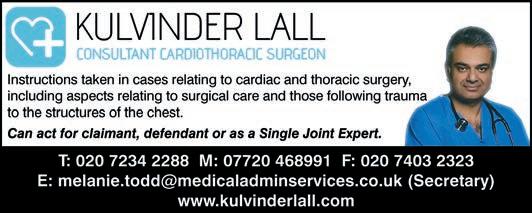


DENTAL & ORTHODONTIC EXPERTS
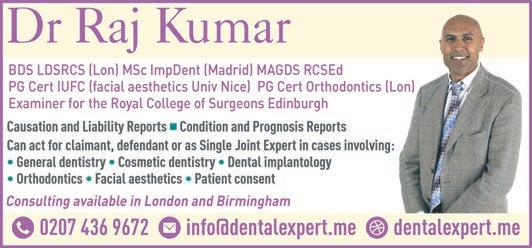

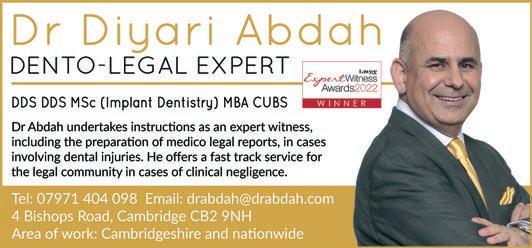







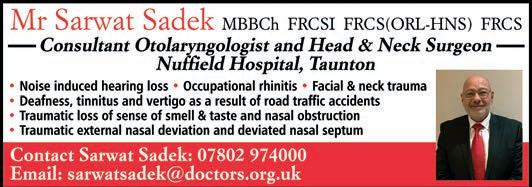
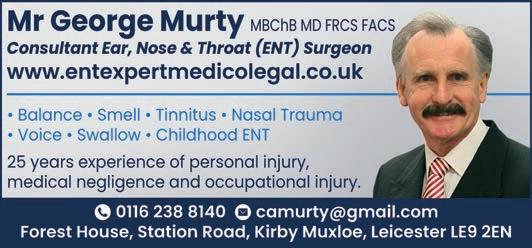






ENT CONSULTANTS
GENERAL SURGEONS
GERIATRICIANS
HAEMATOLOGY
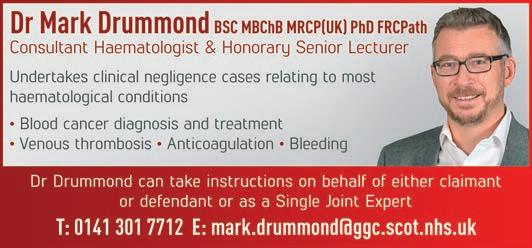

MEDICAL
MICROPIGMENTATION
NEONATAL MEDICINE
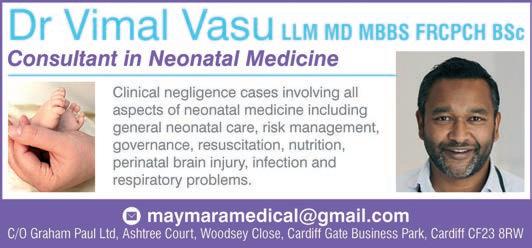

INTENSIVE CARE MEDICINE

LIVER SURGEONS & HEPATOLOGISTS
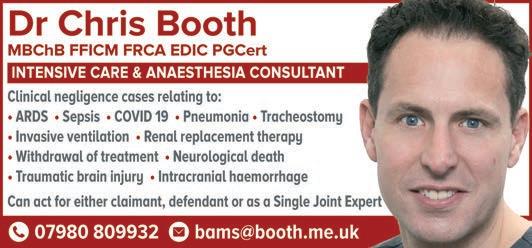
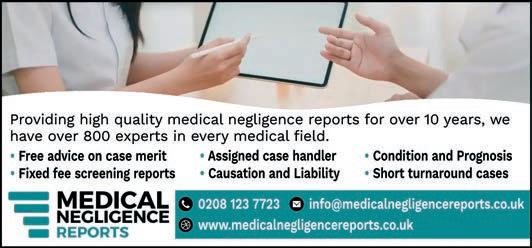


NEUROLOGY
NEUROPSYCHOLOGISTS
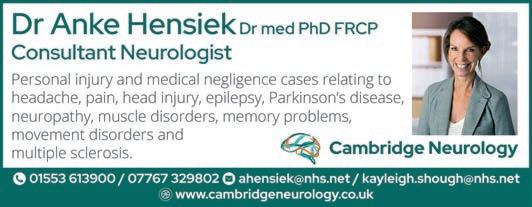



NURSING, CARE & REHABILITATION CONSULTANTS



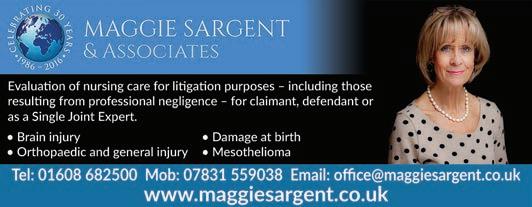
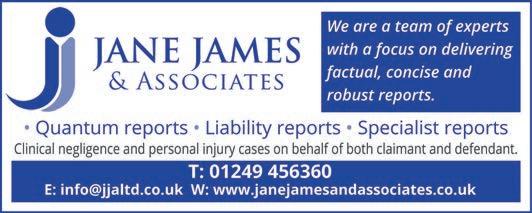
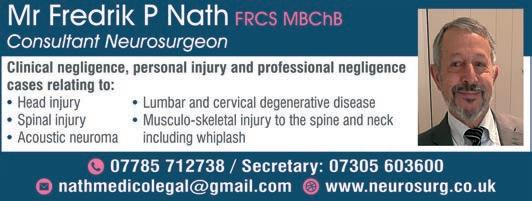
OBSTETRICS & GYNAECOLOGY
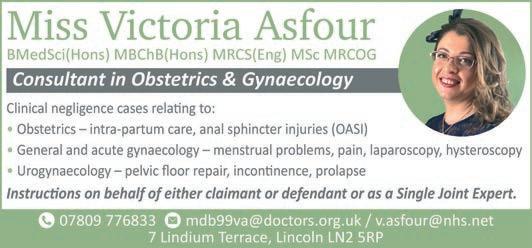



OCCUPATIONAL MEDICINE & THERAPY



ONCOLOGISTS
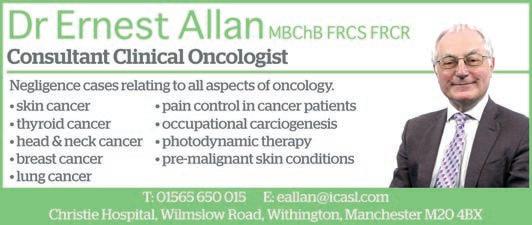
OPHTHALMIC SURGEONS






ORAL & MAXILLOFACIAL SURGEONS


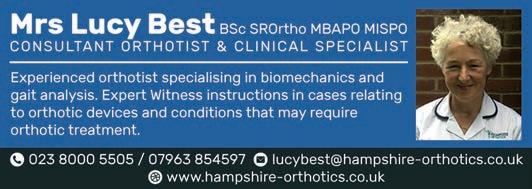

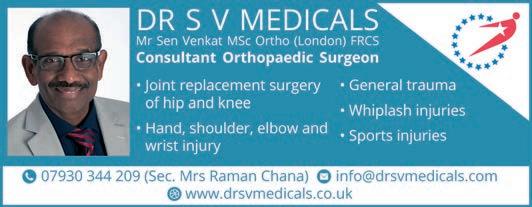
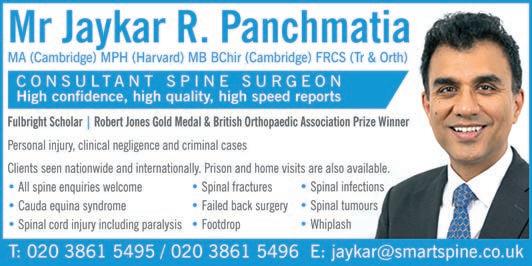


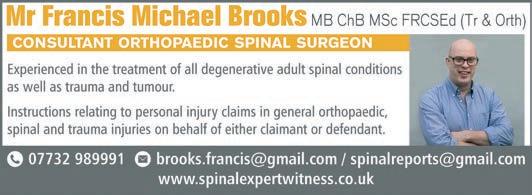



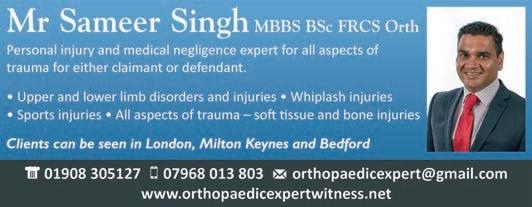

PAIN MEDICINE
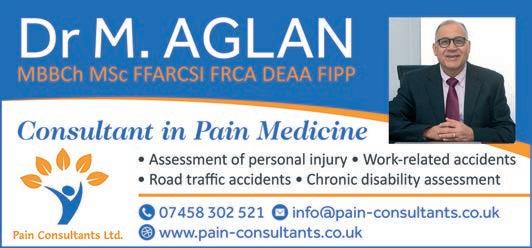
PATHOLOGY
PHARMACOLOGY


PHYSICIANS


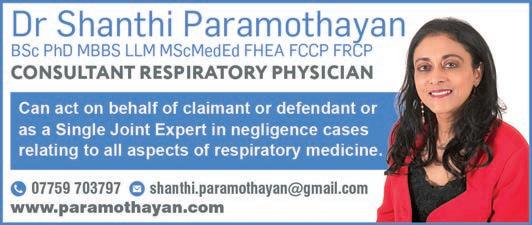

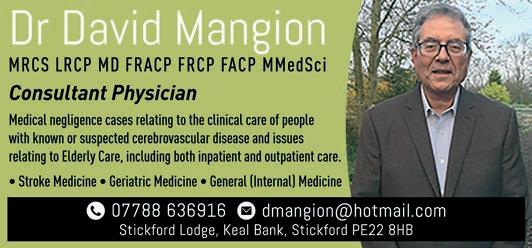


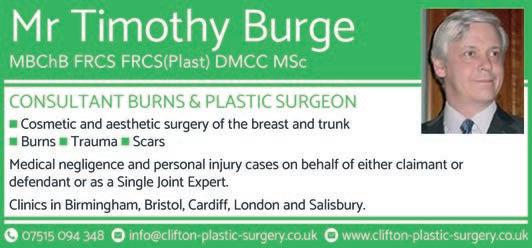











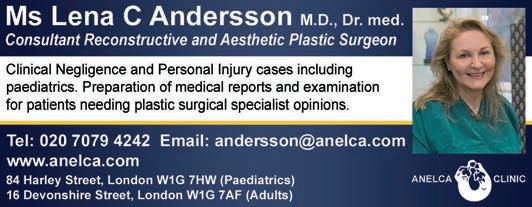


TOXICOLOGY


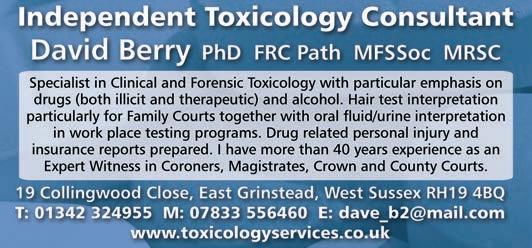
REHABILITATION

TRICHOLOGY


SOCIAL CARE

